This May, we visited Paris. Apparently, the springtime is supposed to be the perfect time to visit and while we didn’t have the best weather, we did have a great visit.
We had several very nice days, a couple of cool days and a few rainy days. Some days it rained much heavier than others and our AirBNB host said the weather is usually much better than what we experienced. Nonetheless, we loved our visit. I will remember it for the rest of my life – for all the reasons you can read below…
—
We set off for Paris by leaving Collingwood on Monday May 1st. Our flight left at 7:20 PM and we arrived in Paris at 8:55 AM the morning of May 2, so basically, we landed at 3 AM on our body clocks. We were both tired but managed to get through the enormous Charles de Gaulle airport and find a taxi into the city. He may have taken advantage of us by about $50.00 bucks Canadian but he helped us find our apartment and provided an enjoyable running commentary for the entire drive in to Paris. We didn’t make the same mistake when we left…
After arriving and meeting our host, Teresa, we settled in, unpacked and spent the afternoon familiarizing ourselves with the neighbourhood, did some grocery shopping, bought a couple of bottles of red wine, some croissants, a baguette, adjusted to the time difference and went to bed early.
As usual, I was very excited. I bounced out of bed early the next morning. I wanted to start wandering. I was also excited that our apartment was exactly as described and we could actually see The Eiffel Tower from our front door. What a trip that was to me. I think about my life and then these moments becoming a part of them – being able to visit Paris and stay in an apartment where we can see The Eiffel Tower from our front door. I feel very grateful for these moments.
For those of you who have never been to Paris, it is basically delineated by 20 very different arrondissements. We stayed in the 7th Arrondissement and visited the 1st, 2nd, 3rd, 4th, 5th, 6th, 7th, 8th, 10th, 11th, 18th and 20th Arrondissements in total so we got to know the city and the metro system quite well.
I hope you enjoy reading about our visit. I try very hard to document our travels photographically so my thoughts are well illustrated…
The Eiffel Tower and The Rodin Museum
Our first real day after arriving. We were lucky to wake up to a spectacularly beautiful day in Paris to head to the top of The Eiffel Tower and look out over the Champs de Mars before wandering off to The Rodin Gardens, an artist I studied for three years in college. Such emotional work and such a thrill to stand next to The Thinker and other incredible works of art right in front of you.
The Eiffel Tower. Being lucky enough to be in Paris and take a tour to the summit of The Eiffel Tower was incredible… from the minute we joined our group to the moment we started up the elevators, I was excited. You will probably read this a few times in this post but being able to see these places in my life makes me feel incredibly fortunate. I recommend visiting the tower both during the day and at night, because at 10 and 11 PM every night they light the tower up with sparkling lights for five short minutes.
The Eiffel Tower was built to be one the main attractions at the Paris World’s Fair in 1889. That year, the World’s Fair covered the entire Champ de Mars in Paris and its focus was on the vast construction of iron and steel that was one of the great industrial advancement of the time.
All the elements were prepared in Gustave Eiffel’s factory located at Levallois-Perret on the outskirts of Paris. Each of the 18,000 pieces used to construct the Tower were specifically designed and calculated, traced out to an accuracy of a tenth of a millimetre and then put together forming new pieces around five metres each. A team of constructors, who had worked on the great metal viaduct projects, were responsible for the 150 to 300 workers on site assembling this gigantic erector set.
The construction work began in January 1887 and was finished on March 31, 1889.
Place du Trocadero. I headed here because it had an excellent view of The Eiffel Tower at night and I wanted to get a good photo when they lit up the tower. I had also read that this is the best place to get great photo of the tower if you go at sunrise but I just wasn’t up to getting up at 5:30 AM.
If you go to Paris and plan on visiting the tower, make sure you book a Skip the Lines tour and guarantee your access to the summit, the highest point of the Tower. We booked our trip with Viator and they have an excellent App to keep your tickets handy. The views are incredible and it is truly a once in a lifetime experience.
After our visit to the Eiffel Tower, we wandered through the Champs de Mars to visit the Musee Rodin. Along the way, I marvelled at the large greenspaces which have been dedicated within the city for public use.
Musee Rodin. Established in 1919, the Musée Rodin is dedicated to the preservation and presentation of works by Auguste Rodin, who is generally considered to be the father of modern sculpture.
This elegant rococo mansion was the workshop and residence of Rodin from 1908 until he died in 1917. In 1914, in exchange for the right to stay at the Hôtel Biron until his death, he willed his possessions to the France on the condition that they create a museum there dedicated to his works. Since 1919, the mansion and its beautiful gardens have displayed sculptures by Rodin and his student and lover, Camille Claudel, including “The Kiss”, “The Thinker” and “The Gates of Hell,” as well as many of Rodin’s personal belongings.
The gardens are exquisite and a pleasure to wander through.
After we visited The Rodin Museum, we wandered back towards home along Rue Cler, one of the best market streets in Paris, and bought some fresh vegetables and hand made quiche for dinner… and, yes, a bottle of red Bordeaux. It was jam packed with specialty food stores, pastry shops, butchers, delicatessens, cheese specialists, fishmongers, greengrocers, chocolate shops and cafés. Most of the street is a pedestrian area and still has its original cobblestones so we really enjoyed some time here. This is where the locals go to buy their favourite foods or sit on one of the many café terraces with friends and family and watch the world go by.
Pont Alexandre III Bridge. It was our first night in Paris and we decided to walk along The Seine. I knew the Pont Alexandre III bridge was along the way but I had no idea where, as we were simply enjoying watching couples drink wine along the banks of the river and simply enjoying the evening. But come across it we did, and the light was absolutely perfect for me. Not only is this bridge the most beautiful in the city, but it has incredible sweeping views of both sides of the Seine, including the Eiffel Tower and, as can be seen above, Le Grand Palais.
Inaugurated on the occasion of the 1900 Universal Exhibition and classified an historic monument, the Pont Alexandre III is one of the most emblematic bridges in Paris because of its architecture and location. At its four extremities are huge 17 metre-high pylons crowned with gilt bronze sculptures of winged horses representing the illustrious Arts, Sciences, Commerce and Industry.
Pont Alexandre III connects Les Invalides on the Left Bank to the Grand Palais and Petit Palais on the Right Bank.
The Seine
Cutting through the very heart of the Paris, the Seine River is the epicenter of the French capital. The gentle flowing waterway is an integral part of the city and its fascinating history. Lined with traditional booksellers and bordered by beautiful boulevards, historic cafés and charming neighbourhoods, the river is an attraction in its own right. Walking along the banks of the Seine is an excellent way to get acquainted with the City of Light. Along the way you’ll encounter a series of beautiful and historic bridges, along with some of the French capital’s most famous buildings and monuments, including the Louvre Museum, Eiffel Tower and the Cathedral of Notre Dame.
The two banks of the Seine are referred to as La Rive Gauche (the Left Bank) and a La Rive Droite (the Right Bank). Both banks are listed as UNESCO World Heritage Sites and they each offer their own distinct flavour of the Parisian experience.
—
The Latin Quarter
The area was named “Quartier Latin” during the Middle Ages, when the students of the University La Sorbonne, inhabitants of this neighbourhood, used Latin as the language of study. Since the Middle Ages and up to the present day, students living in the Latin Quarter have had a huge influence on the rest of the city. During the nineteenth and twentieth century, students organized movements of great political importance such as the revolt of May 1968, a general strike that nearly brought down the French government of the time.
Our feet were a little sore from seven hours of walking the day before so we took the metro to Notre Dame – our first stop was Shakespeare and Company, the legendary bookstore which Sylvia Beach founded, where we each bought a book and had it stamped.
Shakespeare & Company. Prior to our visit, I had read the novel – The Paris Bookseller – by Kerri Maher. It is a dramatic story of how a humble bookseller fought against incredible odds to bring one of the most important bookstores of the 20th century to the world. When young American Sylvia Beach opens Shakespeare and Company on a quiet street in Paris in 1919, she had no idea that she and her new bookstore will change the course of literature itself.
Now a Paris institution, it’s where some of the most important literary friendships of the twentieth century are forged–none more so than the one between Irish writer James Joyce and Sylvia herself. When Joyce’s controversial novel Ulysses is banned, Beach takes a massive risk and publishes it under the auspices of Shakespeare and Company.
Ernest Hemingway was a regular and wrote about it his memoir, A Moveable Feast.
However, World War II crashed into Paris and the bookstore closed during the Nazi occupation. Then, in 1951, another young American, George Whitman, re-opened the store and infused new energy with a new location in the Latin Quarter.
It was a real treat to spend time here. I felt the history… even though it is once removed from the original location. We each bought a book and had them stamped with the Shakespeare & Company logo.
Then we headed to Jardins de Luxembourg to see The Medici Fountain and enjoy lunch outdoors.
Jardins de Luxembourg. The famous Jardins du Luxembourg are unique in that it combines elements of Italian, French, and English landscape design, thanks to a series of changes over a 400-plus-year span. Originally commissioned by King Henri IV’s widow, Marie de Médicis, who missed the Italian gardens of her Florentine youth, the Jardins du Luxembourg has changed significantly since 1611. It’s now a favourite spot for Parisians to walk the manicured gravel paths, watch the sailboats kids can rent and sail in the fountains, and relax in the low-slung green chairs that dot Paris’s parks. While the overall effect of the gardens is quite grand and regal, there are still intimate corners to be found.
We found such a spot for lunch – La Terrace de Madame, where we completely enjoyed our falafel bowls, some excellent baguettes and enjoyed the lovely ambience.
The Jardins du Luxembourg also houses the French Sénate, within the Palais du Luxembourg, as well as the Musée du Luxembourg, which was the first public art museum in Paris. But most visitors will want to find their way to the Fontaine Médicis, which dates back to the original 17th-century plan. The Italian-style grotto is a shady spot to visit on sunny days, with trees sheltering the pool and fountain. You’ll find Parisians and tourists alike relaxing in the chairs clustered around the water feature.
I was lucky enough to capture Yim in a quiet moment beside the fountains.
—
After visiting Le Jardins, we headed off to Julia Child’s old neighbourhood, Rue Mouffetard. Along the way, a local told us we would be passing the restaurant where Emily in Paris was filmed so we managed at least one good pic (see below).
Rue Mouffetard. Julia Child’s favourite outdoor food market is still as bustling as it was in the 1950s, and for hundreds of years before that. If you want to see the freshest and most bountiful displays of food offerings, arrive in the morning. The vendors generally set up by 9 AM, close for lunch and reopen at about 2 PM.
Start your journey on the north end of Rue Mouffetard near the Pantheon and walk south with Eglise Saint-Médard as your final destination. It’s a short journey but can take longer than expected as you tend to wander in and out of the various shops along the route.
After our tour of the street, we headed off home by hopping on the metro again. We got a little turned around once or twice but Yim was really good at deciphering the system. Our feet were tired and we were hungry.
Exploring Montmartre and the 18th Arrondissement
This morning we took the Metro from the 7th Arrondissement to the Abbesses Metro Station. The entrance to the station is a masterpiece of Art Nouveau architecture. Designed by Hector Guimard, it is one of the two surviving Métro entrances of its kind in Paris and is situated on the busy square of Place des Abbesses at the foot of the Montmartre hill.
Opened on 30th January 1913, the platform is located 36 metres below ground, making it Paris’s deepest Métro station, with decorated staircases on your way up seven flights of stairs. Probably for distraction from the effort to climb all those stairs.
Once out, we came upon The Wall of Love (below) and managed to snag a few good shots within the gaggle of tourists before walking up many, many more steps to Sacre Coeur for a tour of the interior. We wandered back to Place du Tertre for lunch, surrounded by dozens of working artists painting or drawing portraits and caricatures for visitors. A very busy place.
This area is quite bohemian and was a popular hang out for Toulouse Lautrec and Picasso as well as Van Gogh, so tons of creative history. It is also home to Le Lapin Agile and The Moulin Rouge, which we have tickets for later in our trip. I overheard a guide saying that one hundred and fifty years ago, while building the Sacre Coeur, the priests could not understand why the locals were also building places of disrepute (Le Moulin Rouge) while constructing a church, to which the response was, “Don’t try and understand the French”.
The highest point in Paris, Montmartre’s history goes way back to the times of the Romans. It became holy ground after Saint-Denis was killed on the hill for preaching Christianity. It’s probably how Montmartre got its name – ‘Mont des Martyrs’.
As Paris developed along the banks of the Seine, Montmartre was just a small hilltop village, outside the city limits. It became a commune, making money off its vineyards, orchards, flour windmills, and limestone quarries. In 1860 Montmartre was annexed to Paris but that didn’t sit too well with the commune’s residents and they revolted in 1871 in what became known as the famous Paris Commune. Thousands of village residents were killed in a bloody battle to restore government control. This revolutionary act might explain the leftist character of Montmartre and what attracted the folks who would eventually lead to its heydey.
In the late 19th century, artists from around Paris began to move up to the hill in search of cheap rents and freedom from the institutions. Dali, Monet, Picasso, Van Gogh and many others spent some time here during those decades. Montmartre became the place to be for free thinkers, artists and partygoers. The neighbourhood’s parties became the talk of the town and everyone flocked to see the cabarets and sexy shows. I can understand that…
Sacre Coeur. Sitting proudly atop Montmartre, the Basilica of Sacré Cœur occupies the highest point in Paris and is a distinctive figure in the city’s skyline. Consecrated in 1919, the basilica’s Byzantine-inspired features and bleached white facade set it apart from other monuments and historic buildings in the City of Light. Struggling to recover from decades of internal turmoil and a recent military defeat, the basilica was built to remedy “a century of moral decline” in France, and is as much a symbol of civic pride as it is a place of worship. Today Sacré Cœur still operates as a Roman Catholic Church dedicated to the Sacred Heart of Jesus, but also welcomes tourists who come to admire the basilica’s beautiful architectural details, stunning artwork and spectacular views of Paris.
Sacré Cœur is the crown jewel of Montmartre, a neighbourhood in the north of Paris known for its cobbled streets and village-like charm.
It was in Montmartre that the Impressionist art movement first began to take shape. Renoir, Matisse, van Gogh and other notable impressionists all once made their home here, and many of them would have been witness to the construction of Sacré Cœur. The multi-domed church is accessible on foot, though it is a bit of a climb to get to the top! If you prefer, you can avoid the uphill walk and take the Funiculaire de Montmarte for direct access to the basilica.
As you approach this impressive example of Romanesque-Byzantine architecture, you’ll spot two bronze statues perched on the tripled-arched entryway. In keeping with the basilica’s nationalist theme, one figure is Joan of Arc and the other is King St. Louis IX. Both storied figures of French history are depicted riding a horse with a sword in-hand. King St. Louis is holding his sword upside down, to signify his stance against the wars…
The Wall of Love. Spanning 416 square feet, the I Love You Wall in Paris’s Jehan-Rictus Square was created by two artists as a rendezvous location for lovers and a lasting monument to eternal adoration. Covered in 612 lava tiles, the wall features the words “I love you” in 311 languages, including all 192 languages of the United Nations.
The artwork was created by Frédéric Baron and Claire Kito, who originally collected the phrase in notebooks by knocking on the doors of embassies and asking their neighbours until they had collected more than 300 languages, all expressing the powerful sentiment of love.
—
The Louvre and Saint Chapelle Church
Today was a mixed day for us. Getting to The Louvre was exciting. Being in it was not. We both found it very depressing, overcrowded and overhyped. The signage was terrible – even with a solid game plan, expect to get lost. Expect to be using a map and still have issues navigating. This can be especially frustrating in a time crunch or even simply exiting the building.
The Louvre is one of the most popular museums in the world, hosting almost 10 million visitors each year. That breaks down to about 15,000 visitors a day on an average basis. Considering that most will arrive between opening at 9 am and the early afternoon, that’s potentially 3,000 people an hour lining up at one of only four gates of entry.
If the line isn’t enough to deter you, now imagine a crowd that large inside the space in complete disorder. Hoards of tourists all vying for a limited amount of space.
And there was waaaay too much religiously oriented persecution art. Geez, buy some happy paintings!
We were glad to leave… and even then, we had trouble finding our way out.
We were kind of grumpy after that for a half hour… then we went to see the famous Jardin de Tuilieres Carousel but it was under renovations and completely boarded up, which didn’t help our mood, so we had lunch in the park and a glass of wine.
Then we headed off to Saint Chapelle Church and its extraordinary stained glass windows. Unlike Notre-Dame, visiting this royal chapel requires a ticket, but boy is it worth it.
Built between 1241 and 1248 on the orders of Louis IX, La Sainte-Chapelle was constructed to house the pious king’s collection of Christian relics, including Jesus’s Crown of Thorns and a fragment of the True Cross. Although the religious artifacts have since been moved to the reliquary of Notre-Dame, the stained glass windows make visiting worth it.
When you first walk into La Sainte Chapelle, it might not seem like much. But go upstairs and you’ll find yourself standing in a masterpiece of Rayonnant Gothic architecture. A kaleidoscope of colours fills the upper chapel thanks to its 6400 square feet of magnificent stained glass windows, two-thirds of which are original. It’s one of the most complete and remarkable sets of 13th-century stained glass in the world. And if you’re lucky enough to catch a sunbeam while you’re there… well, it’s absolutely dazzling!
After our visit, we wandered by the Notre Dame Cathedral renovations to take a look. It’s a massive undertaking. They actually have a bandstand set up for people to watch the renovations being made.
On our way home, we stumbled across an outdoors artisans market and Yim bought a silk scarf and then we tested our metro skills again. We are getting good at finding our way around underground.
Marais and The Third Arrondissement
Today we headed off across Pont d’Alma, said Bonjours to the Eiffel Tower and headed back down into the Metro to Place des Vosges. Coming up to street level, we were greeted by some impressive graffiti and funky restaurants intermingled with high end art galleries and a thousand bistros, including a very pink one.
Unlike the other 20 recommendations in this list, Marais is not just a location but an entire district in Paris. It spans the 3rd and 4th arrondissements and was our favourite area in the city. If you are visiting Paris, take an entire day to explore and wander the Marais District.
Place des Vosges. Place des Vosges was originally called Place Royale. The square was renamed after the French Revolution in tribute to the north-east region of Vosges, bordering Germany and Luxembourg, which was the first to pay taxes imposed by the new government.
A stroll in the Marais without admiring Place des Vosges is like a walk on the Champs Elysees without seeing the Arc de Triomphe. The composition of the Place des Vosges epitomizes the classic French style and is a unique example of seventeenth century architecture. Originally the terrace was covered with sand to allow aristocrats to indulge in equestrian exercises. A statue of Louis XIII was erected in the square, then destroyed in 1792 after the fall of the monarchy and was replaced by an octagonal fountain. It took until the early nineteenth century for the royal equestrian statues as well as that of Louis XIII, destroyed during the Revolution, to once again be rebuilt.
After an hour, we settled in for some of the best falafel ever while the skies opened up and it began to pour – but we were prepared. We had raincoats and an umbrella and decided to head to the Picasso Museum early. We loved it. It was very informative and we could literally stand within inches of the work to see the details of the brushstrokes. Pretty cool.
The Picasso Museum. Love him or loathe him, Pablo Picasso is arguably the most important artist of the 20th century. And although there are museums dedicated to him in various places around the globe, the Musee Picasso in Paris is the pinnacle, being located in the city where he spent most of his artistic life. The museum is housed in a magnificent mansion in the Marais and in it, you will find the world’s largest public collection of the work of Picasso.
What makes the museum unique is that it’s filled from basement to attic with Picasso’s memorabilia — not only paintings but letters, sketches, prints, sculptures, and even his poetry. There’s no other museum that gives you such an intimate peek into the mind and soul of an artist. Picasso famously said, “Give me a museum and I’ll fill it.” This museum fulfills that promise.
Apres ca, we wandered off to the Hotel de Ville and found Yim a carousel, so she could indulge a big girls dream. Fun. Big smiles.
We stopped for a petit cafe et frites maisons and it started to pour again so we added two glasses of wine and waited for the rain to stop before heading home.
We loved The Marais District.
The Eighth Arrondissement
We started off across the Pont Alexandre bridge and the morning light was cooperating, providing some welcome low light illumination to the statues on the bridge. Again, the Eiffel Tower adds a certain je ne c’est quoi but I liked it.
We had planned to wander around Le Petit Palais but President Macron had other plans for us as he was giving a speech at the Arc de Triomphe so we were met by la Policia with some type of assault rifles around their necks, although they did answer our questions so kudos to them for good grace under pressure.
Since we had a bit of time, we went and had Feta Quiche a l’Epinards at Cafe des Marroniers in The Jardin des Tuileries – probably the most popular and well known city gardens in all of Paris.
The Jardins des Tuileries is situated right in between two of the most visited tourist spots in all of Paris, The Louvre and the Place de la Concorde. Essentially, the Jardins des Tuileries is part of what is known as the grand central axis that leads from the Louvre art museum as far as the Parisian central business district known as La Defense with its cuboid glass and metal structure known as the Grand Arche de la Defense.
There are many interesting and historical features to be found throughout the Jardin des Tuileries including the Palais de Tuileries which was built by Catherine de Medici in 1559, which, at the time, was home to a clay quarry which is where the name Place de Tuileries comes from. Tuileries is French for tiles. One of the most notable features was a large garden designed in a Tuscan style which was the home land of Catherine de Midici.
In around 1660 the style of the gardens was once again changed to the usual French formal style by none other than the Kings personal gardener, Andre Le Notre, who also designed the very famous gardens at Versailles Palace. The gardens became instantly popular among Parisians and it was in fact the trendiest spot to socialize in. The park is really the model for every other modern day park and even features amenities like cafes and public toilets. In 1871 the Palais des Tuileries was demolished, which had the effect of opening up the line of sight from the Arc de Triomphe to the Louvre.
You will be able to sit on the banks of the river and watch all of the river traffic go by. You will get to see all kinds of barges filled with cargo ranging from the luxurious to the commonplace. You can also take a walk through the park or sit where you wish in one of the park’s 3000 Green Chairs (above) and take in the peace and tranquillity that makes it so popular.
—
Located in The Jardins des Tuileries, the museum houses an impressive collection of works from Monet in the form of no less than eight of the famed Water Lilies collection – we were thrilled to be in the same room as Monet’s Water Lily masterpieces. We were able to be inches from them and as you can see, we were lucky enough to have two or three private moments with these works of art. It was an emotional and memorable moment.
The gallery is located along the banks of the Seine River in the old orangery of the Tuileries Palace. The museum building was originally built in 1852. It is interesting to note that the original intention of the building was to provide shelter for the orange trees of the Tuileries garden. Throughout its history the building was used for many different purposes including housing soldiers as well as hosting various sporting and cultural events, music concerts and even events of patriotism.
The Musée de l’Orangerie is now known for being the place where one can view the entire collection of Monet’s Water Lilies known as the Nympheas. The story is that Monet had agreed to donate the entire collection of eight Water Lilies panels to the French government and they were to be housed in the Musée de l’Orangerie. The ground floor of the building was in fact redesigned specifically for this purpose but after completion of the renovations to the building, Monet could not bear to be parted from these works and it was only after his death in 1926 that they could be displayed in the museum. Such dedication and love of the work should be enough to entice anyone to go see the collection.
—
When we came out, Monsieur Macron had decided to go away and we wandered up Le Champs d’Eleysees. It is glamourous and overcrowded and packed with high end retail shops, but it’s a lot more regular than you might expect.
What really makes the street desirable is the beautifully lined trees leading you towards the Arc de Triomphe. I do have to say it was a good street for people watching & window shopping. We started at Place de la Concorde and ended at the Arc de Triomphe, which was commissioned in 1806 by Napoleon to honour those who fought and died during the French Revolution and Napoleonic Wars. Don’t try and cross the street here. There is an underground passageway.
Our big splurge was a Lebanese ice cream cone coated with spices and then we headed home.
The Sewers of Paris & The Saint Germaine District
Today we headed off in the rain to visit La Musée d’Orsay but that pesky president Macron was there again and it was closed until 1:30 in the afternoon so we decided to tour the sewers of Paris and it was AMAZING!
It might sound like a strange place to visit, but if you’re looking for an alternative to the usual museums, interested in engineering, a fan of Les Misérables (the sewers were the hideout of Jean Valjean), or just looking for somewhere cool to hide out on a rainy day, you might be tempted to head down into the underbelly of Paris.
The excellent displays illustrated how water is moved from apartment blocks and city streets efficiently and distributed throughout Le Seine. The system dates back to 1850 but is now updated so they can gauge the PH balance and E. coli levels of Le Seine using sophisticated computers, which one can see in real time down below. We found this absolutely fascinating.
Paris’ first sewers were built in 1370 – before then waste just ran down a channel in the middle of the road. The early sewers were still open which didn’t do much to help prevent disease. So in the 1800s, Baron Haussman designed a new system with underground tunnels for drinking and non-drinking water as well as waste. The tunnels ran for over 373 miles by 1878 and hundreds of miles were added over the next few centuries, forming a network below the surface mirroring the one above, right down to the street signs. Yes there were street signs down in the sewers so even underground, we knew where we were!
On your way out, there’s even a gift shop, although we chose to give it a pass – but we did visit the washrooms to wash our hands 🙂
Then we tried the Musée again but still no luck… there was a 90 minutes line-up so we went to Le Paris d’Orsay cafe for French onion soup and an omelette. Even the ceilings were beautiful…
From there, we wandered over to Les Deux Magots to visit Hemingways old hangout. One part tourist trap, one part beloved café, Les Deux Magots is a legendary spot that everyone should visit at least once when in Paris.
Most famous as the place where the likes of Simone de Beauvoir, Jean-Paul Sartre and Ernest Hemingway spent their days writing at its tables, the café serves decent coffee and hot chocolate—but skip the pricy menu unless you’re really hungry. The best seats are on the terrace, under that iconic green awning, where you can just sit back and people-watch on this busy corner of Saint-Germain-des-Prés.
We then headed home, crossing Les Esplanade Invalides just as the sun poked its way through the clouds.
Les Esplanade des Invalides, with its shimmering golden dome (above), grand esplanade and distinctive Baroque features, is an unmistakable landmark in the chic 7th arrondissement of Paris. Situated near the Left Bank of the Seine, the origins of this sizeable complex date back to the 17th century when it was originally built by Louis XIV as a hospital and retirement home for France’s war veterans. Today Les Invalides houses a collection of museums and monuments related to the country’s long military history. Some of the most notable points of interest within the complex include the Musée de l’Armée, Musée des Plans-Reliefs (Museum of Military Models), Musée d’Histoire Contemporaine (Museum of Contemporary History) and the Tomb of Napoleon I.
We didn’t visit.
—
Le Moulin Rouge
Quelle merveilleuse nuit. We headed back out tonight to Le Moulin Rouge for a treat. Simply being inside was thrilling enough with the decadent red and gold interior surrounded by Toulouse Lautrec posters. We were seated on a raised level in the front row so we had a wonderful unobstructed view of all the dances and acts, and served an excellent bottle of red wine.
Located at the foot of Montmartre, in the 18th Arrondissement of Paris, the Moulin Rouge, with more than 130 years of history, is one of the top tourist attractions of Paris at night.
The history of the Moulin Rouge starts at the end of the 19th century. Founded by the businessmen Joseph Oller et Charles Zidler. Le Bal du Moulin Rouge (its former name) opened its doors on 6 October 1899. After the War of 1870, the Parisians were in need of debauchery and parties, and the Moulin Rouge provided just that.
Extravagant and original, with stunning decoration, a gigantic dance floor, and fantastic shows inspired by the circus world, the Moulin Rouge became the place where bourgeois from all over the capital came to be around girls of loose morals and Pigalle’s bad guys. It remains one of the best cabarets in Paris and a magical place to see great performances and the famous French cancan dance.
For two hours, we enjoyed multiple costume changes and acrobatic acts until les danseurs de Can Can sont venue sur la stage… and it was a treat. Legs kicking and skirts wiggling… we were both sitting there just loving it.
The show wound up around 11 and we wandered off to collect our jacket and scarves and find our way home on the very packed metro – the late night crowd was surprising to both of us. We were literally jammed in on the first stop but buzzing from the spectacle.
We made our first connection and transferred to Les Invalides and when we got there, they told us it was closed, so we popped up our umbrella and walked the remaining 20 minutes home in the rain, arm in arm, through some very deserted streets… to me, that was perfect.
Musee d’Orsay
We got off to a lazy start this morning because we stayed out late but we had our morning espressos and wandered off to Musée d’Orsay.
The Musée d’Orsay focuses on art from 1848 to 1914 and houses the most extensive Impressionist art collection in the world. The building is its own work of art: a former train station built in the Beaux Arts style, which opened for the 1900 Universal Exhibition. While the glass and steel of the outside remind visitors of a bygone era, the inside is a series of clean exhibition spaces, thanks to a 2011 renovation. Every year, more than 3 million people come to get lost among the museum’s many priceless masterpieces.
The vast collection of Impressionist works, major and minor, is the focus here. At every turn, you’ll be surprised to recognize yet another piece from pop culture or that art history class you took. There is no room not worth exploring here, so let yourself just wander among the masterworks.
Monsieur Macron left us alone today and ten minutes after arriving at the museum, we were inside. The museum is massive and overwhelming- and the pastels exhibits were my favourite. I find pastels represent natural tones in the most natural fashion and was in awe of being able to stand inches away from masterpieces by Renoir, Degas, Manet and Toulouse-Lautrec, studying their techniques and having forty-five years of insight to appreciate them.
It was cool to see the Van Gogh originals but I am convinced had I painted like Gauguin, my mother would have thrown my early works away. How they have gained masterpiece status escapes me.
We spent almost three hours in the museum before heading home along The Seine, catching a good shot of Le Grand Palais and heading back to our ‘hood to buy a bottle of wine, some cheese and a freshly made pizza.
—
Pere Lachaise and Palais Garnier
We started today by visiting La Pere Lachaise Cimitiere. Situated among the rolling hills of the 20th arrondissement in east Paris, the Père Lachaise Cemetery is the hauntingly beautiful final resting place of many famous figures in art, music, literature and history. Visitors from around the world come to the cemetery to walk along its quiet pathways and pay their respect to Jim Morrison (below), Oscar Wilde, Edith Piaf and Frédéric Chopin, just to name a few.
Established in 1804 on what was then the outskirts of Paris, the cemetery stretches out over 110 acres and contains a myriad of different grave styles, ranging from simple headstones to elaborate mausoleums and burial chambers.
Despite the melancholy setting, Père Lachaise feels more like an English garden than a cemetery, with its maze of tree-lined cobbled walkways providing tranquil respite from busy city life.
Apres ca, we snagged un petit dejeuner and headed off to Les Galleries Vivienne, an upscale atrium, which was plus petit but tres belle.
Galeries Vivienne. Built in 1823, this is one of the most iconic and elegant covered arcades in Paris. Upscale Galerie Vivienne features beautifully restored original 1823 mosaic floors, a steel-and-glass roof soaring over a rotunda, and numerous high end clothing, gift boutiques and specialty shops. Antique and vintage stores attract lots of fans. It was smaller than I thought but as beautiful as I had hoped.
I love this photo I got of an older woman enjoying lunch by herself in this exquisite setting (above).
Then Yim got her wish – our next stop was the Palais Garnier, which houses Le Grand Ballet. The building was incredible. The chandelier in the auditorium weighed eight tonnes and the ceiling was frescoed by Chagall and other artists of the period. Take a look at the plush red velvet private booths and imagine how incredible this was when it opened in 1861.
The Opera Garnier was built from 1861 to 1875 for the Paris Opera. It was originally called “Salle des Capucines” because of its location on the Boulevard des Capucines in the 9th district of Paris. It was soon known as “Palais Garnier” in memory of his architect Charles Garnier. The palace was the residence of the Paris Opera until 1989, when the Bastille Opera House was built. The Paris Opera Palais Garnier is now mainly used for ballet.
The Palais Garnier is “probably the most famous opera in the world, and was made famous in the novel The Phantom of the Opera by Gaston Leroux in 1911.
We had some fun finding a couple of quiet spots for Yim to do some moves on the foyers de soleil and in front of an enormous mirror before entering Le Grand Foyer. The Grand Foyer is a spectacle to behold. The central ceiling has two paintings done by French Artist, Paul-Jacques-Aimé Baudry (1828 – 1886).
The two paintings are titled Comedy and Music with Music being the larger rectangular painting. These two paintings are the highlights of Baudry’s career. As a young painter, the artist was awarded the Prix de Rome, a scholarship for French Artists to live and study in Rome, Italy for three to five years.
Baudry is known more for his decorative paintings his works dot France. What makes him interesting is that in the latter decades of his life he focused on painting figurative images of dancing and music. It is encroyable!
Luckily for us, at one point, everyone left the Foyer de Soleil and I managed to snap this lovely photo of Yim enjoying the moment.
On our way down, we passed through their library, where they have kept records of every show since it’s opening and these can be signed out and reviewed. Beautiful…
From there, we headed home but passed by the Yves St. Laurent Flagship store, which featured a 60 foot painter throwing daubs of paint against the building. Ah Paris, n’est-ce pas?
Getting ready to fly home…
On our last full day, we headed off to Canal Saint Martin. It was rainy but I wanted to see Place de Bastille and the Canal Saint Martin, which was ordered built by Napoleon in the early 19th century for both carrying drinking water and reduce shipping traffic along the Seine. By the end of the 19th Century, Baron Haussmann had other ideas as he sought to build moveable bridges along the canal to create the Boulevard Richard-Lenoir and serve the new industrial quarters. His engineer, Belgrand, masterminded the solution of enclosing the canal in a vaulted tunnel between Bastille and the Avenue de la République.
In the centre of the square, the famous “Génie de la Liberté” (Spirit of Freedom) which commemorates the revolution of 1830, but is well known for the 1789 revolution. At the time, the square was occupied by the Bastille Prison, which was a symbol of absolute power in the Ancien Régime. The prison was destroyed after the revolution and nothing remained. Today, the square plays host to large cultural events such as concerts, fairs and citizen events, and has many bars and restaurants close by on Rue de la Roquette, where we enjoyed our last lunch in Paris and headed home to pack – satisfied that we had seen almost everything we came to see.
Once back in the 7th Arrondissement, we went by the many stores we had been shopping at during our stay, bought our last baguettes and said goodbye to the store owners who had helped us during our stay – especially Jean at Nicolas, a speciality wine store who had something new for us almost every day until we settled on a wine we both loved.
Then we went back home and packed. Since we were staying in a small apartment, we vacuumed and dusted, took out the garbage and made sure the home was as we found it.
The next morning our host Teresa met us to say “Au Revoir” and had arranged for a taxi to pick us up and take us to the airport. We all hugged and off we went. A lovely way to end our stay.
When we got home, we received a message from AirBNB – Teresa has left us a review;
“Steve and Yim were the most nicest and polite couple. They were kind all the time and left the flat in perfect condition. Hope to welcome you back!! My very best Térésa.”
We hope this travelogue helps anyone make their visit to Paris as enjoyable as ours was…

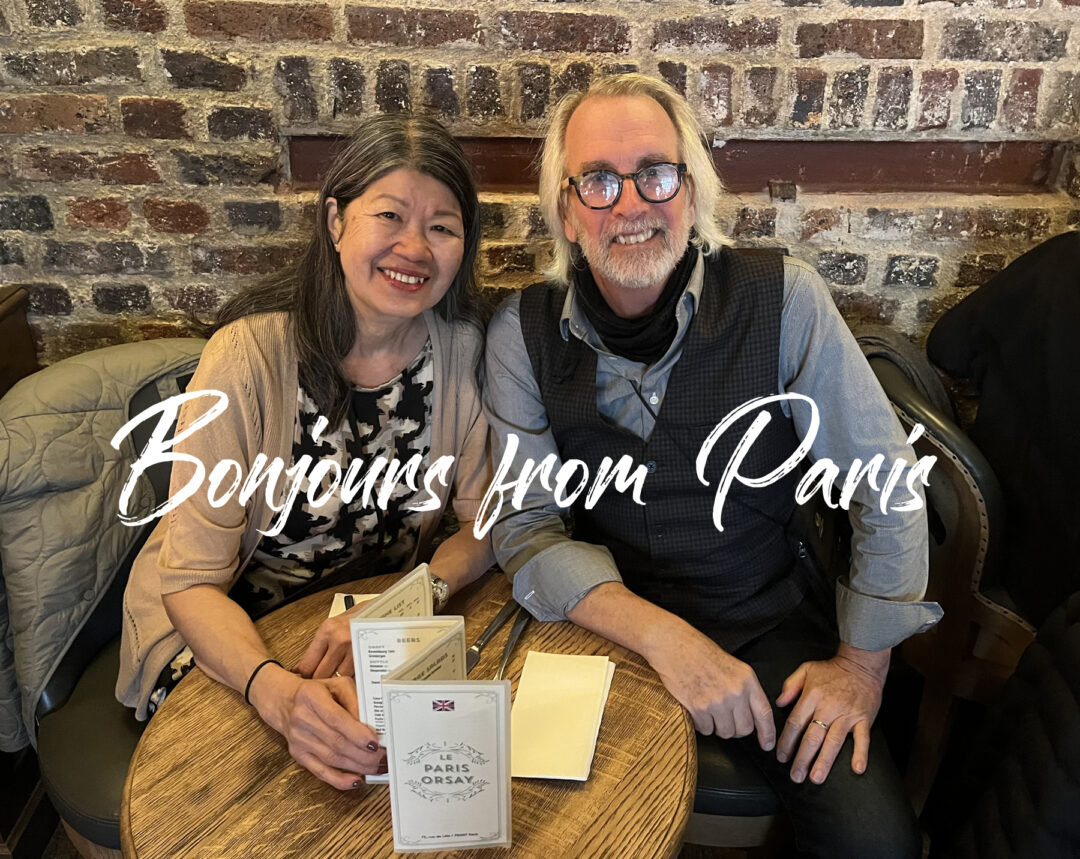
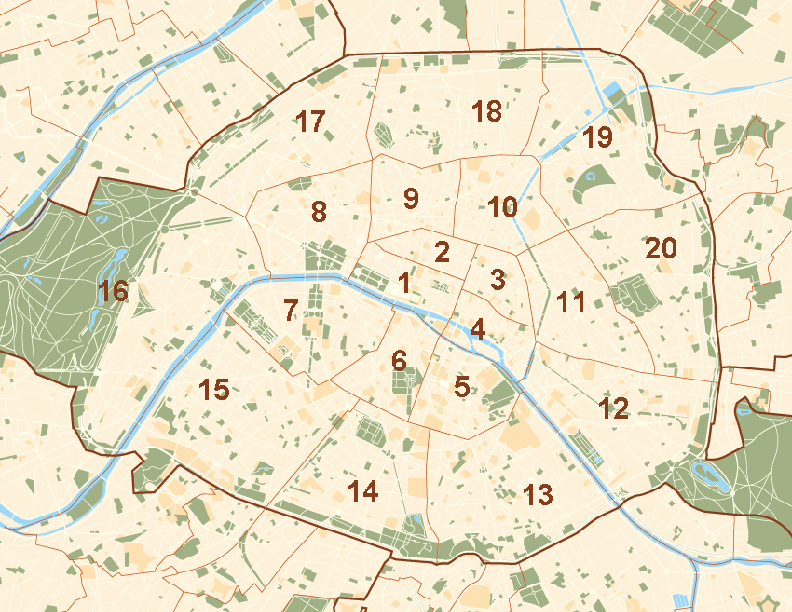
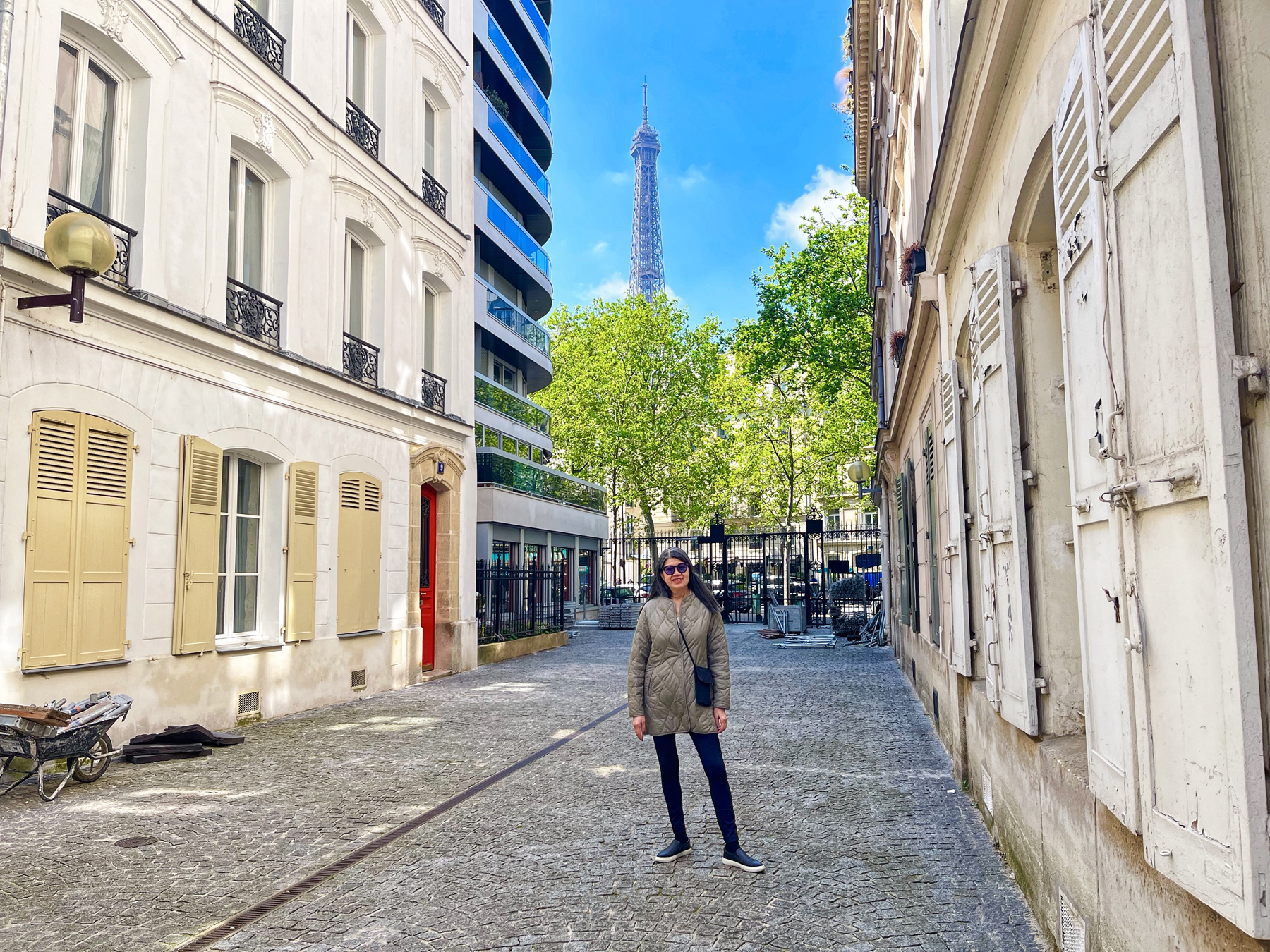

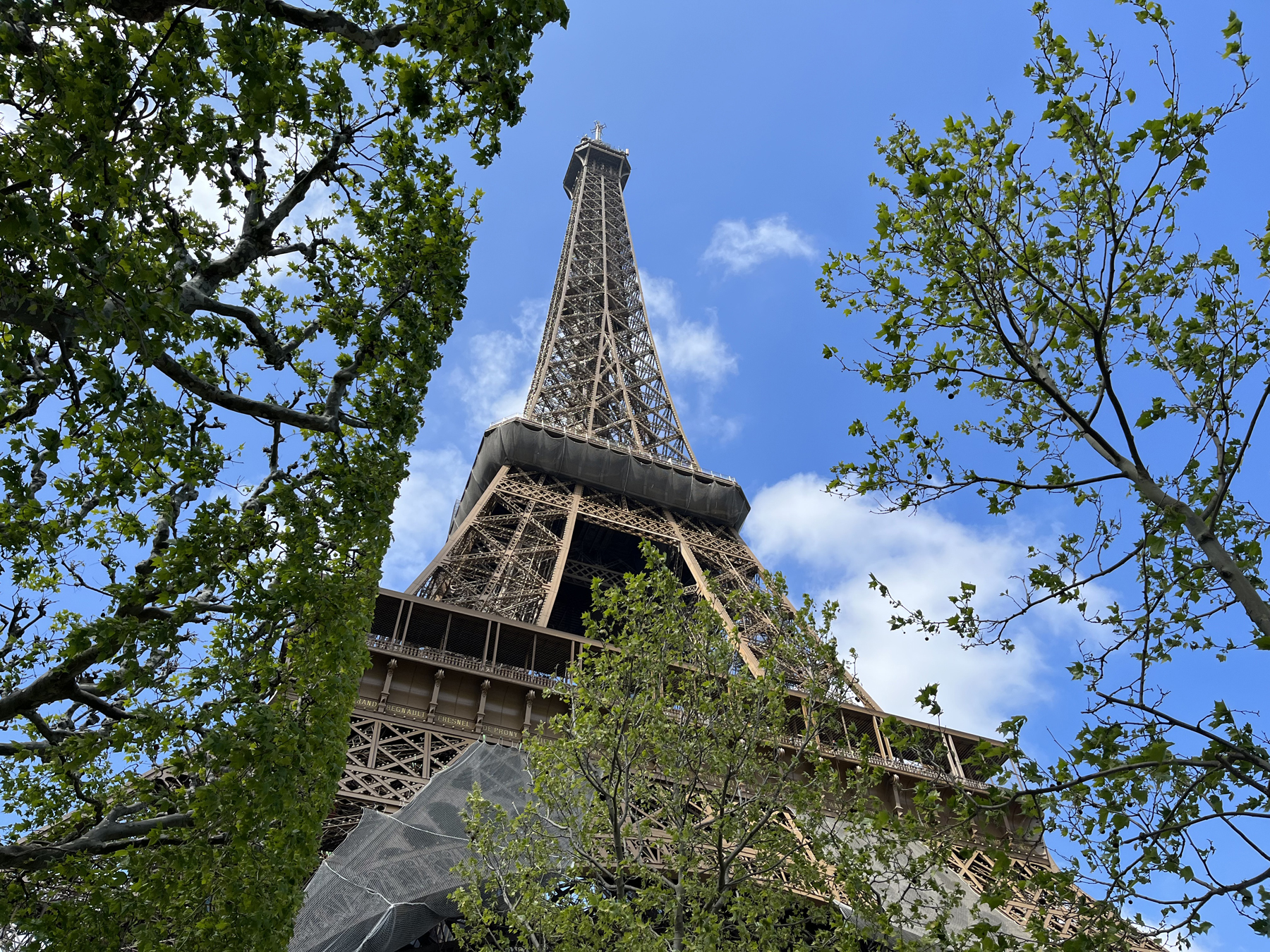


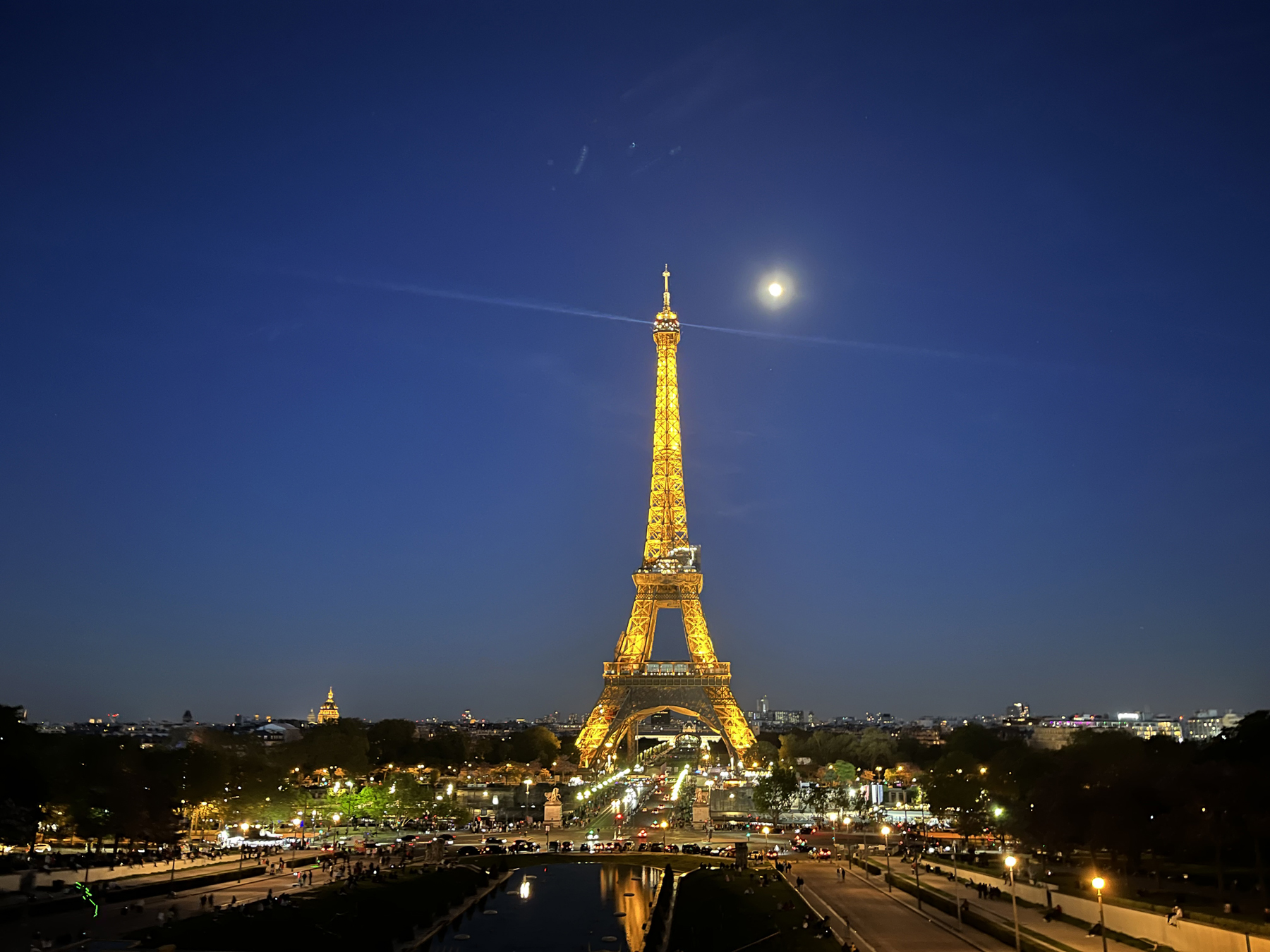



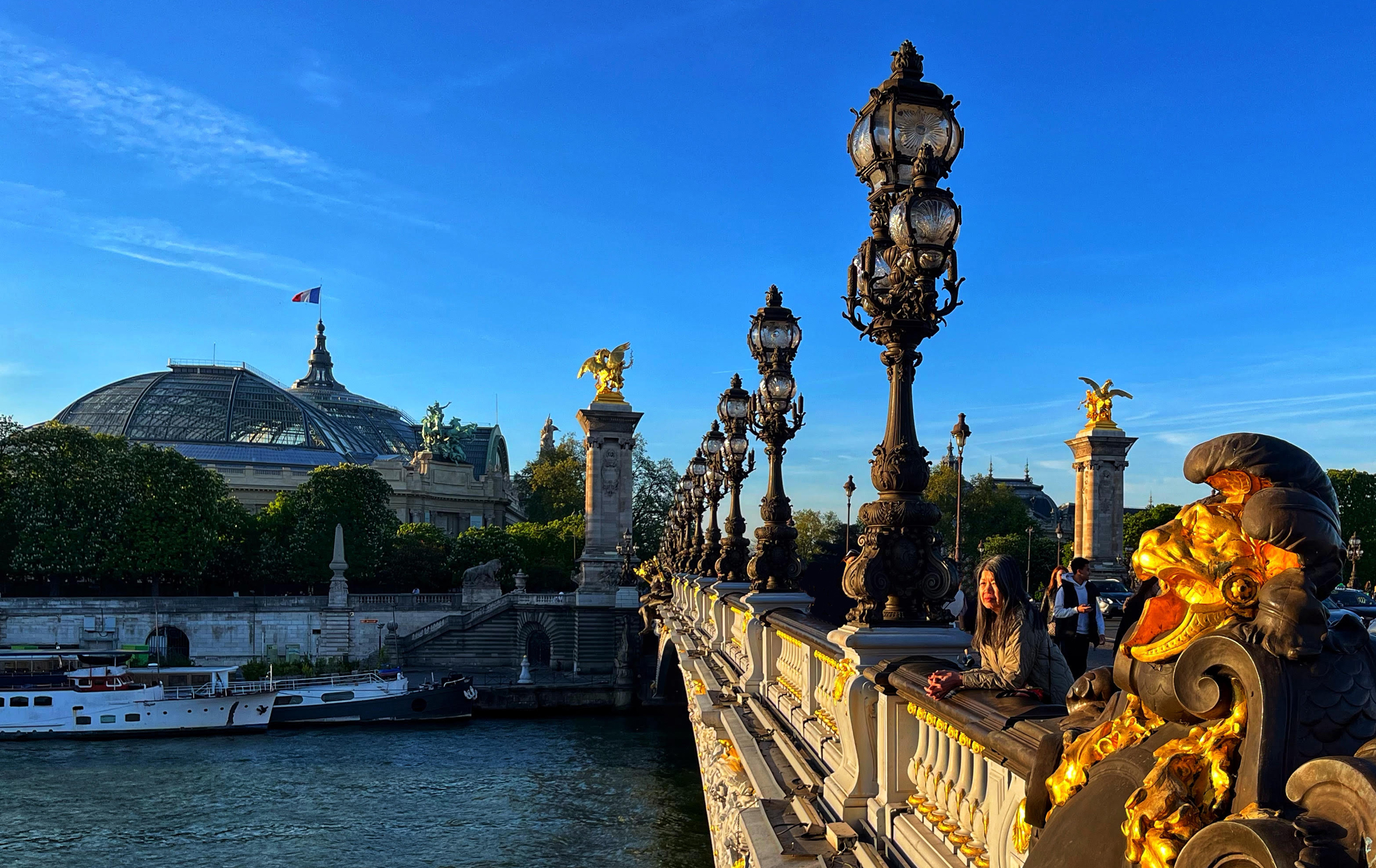
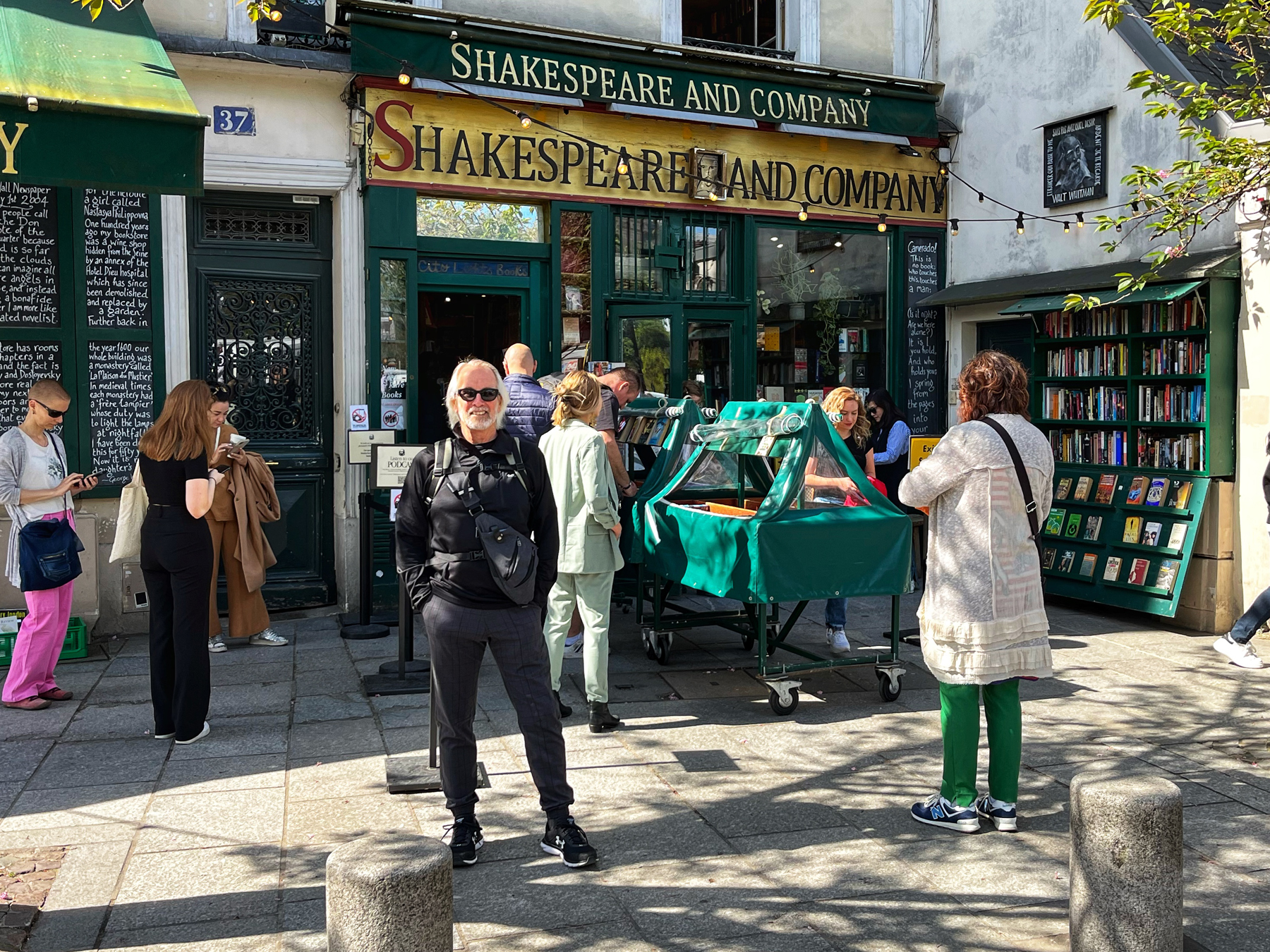
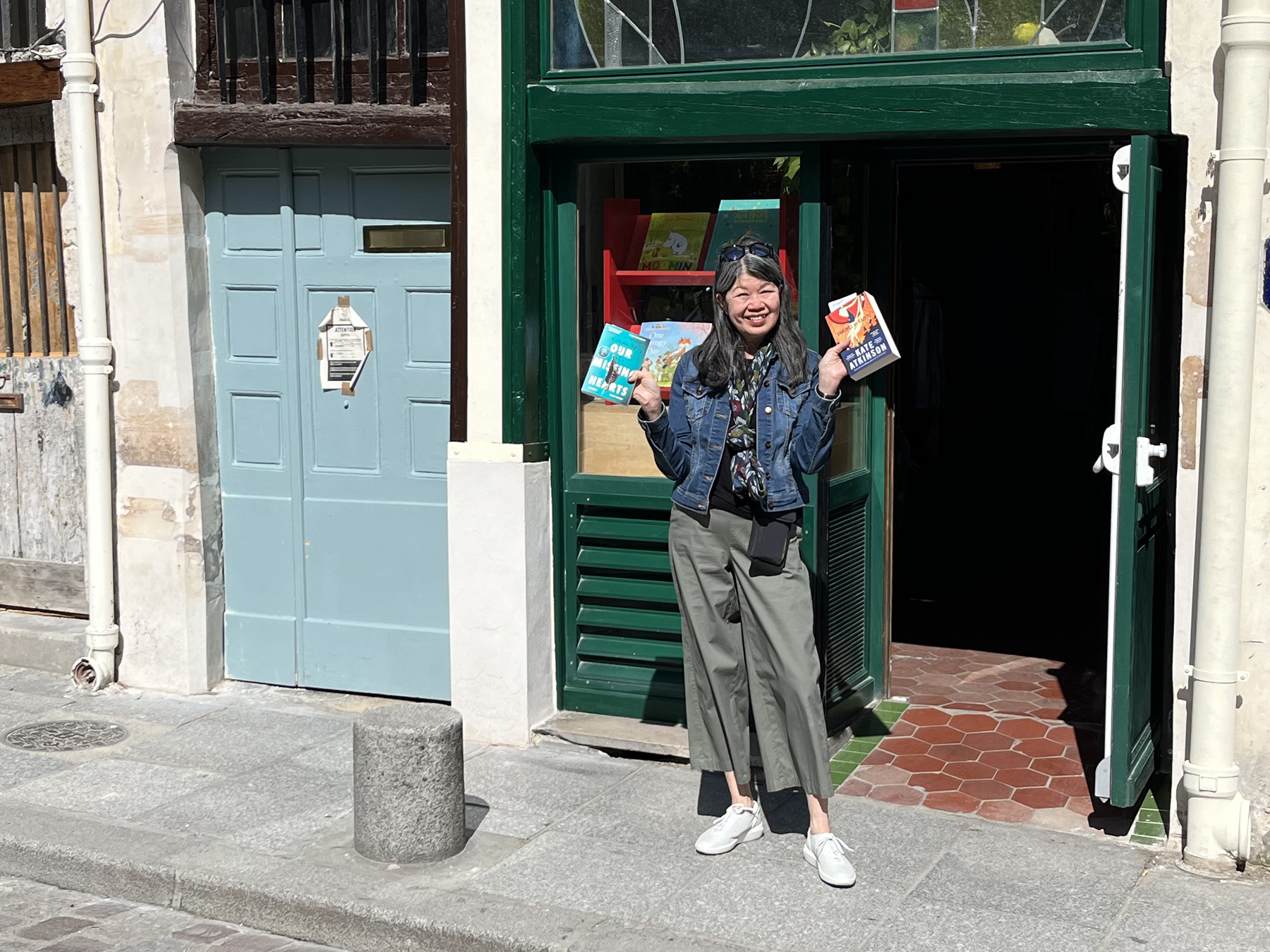
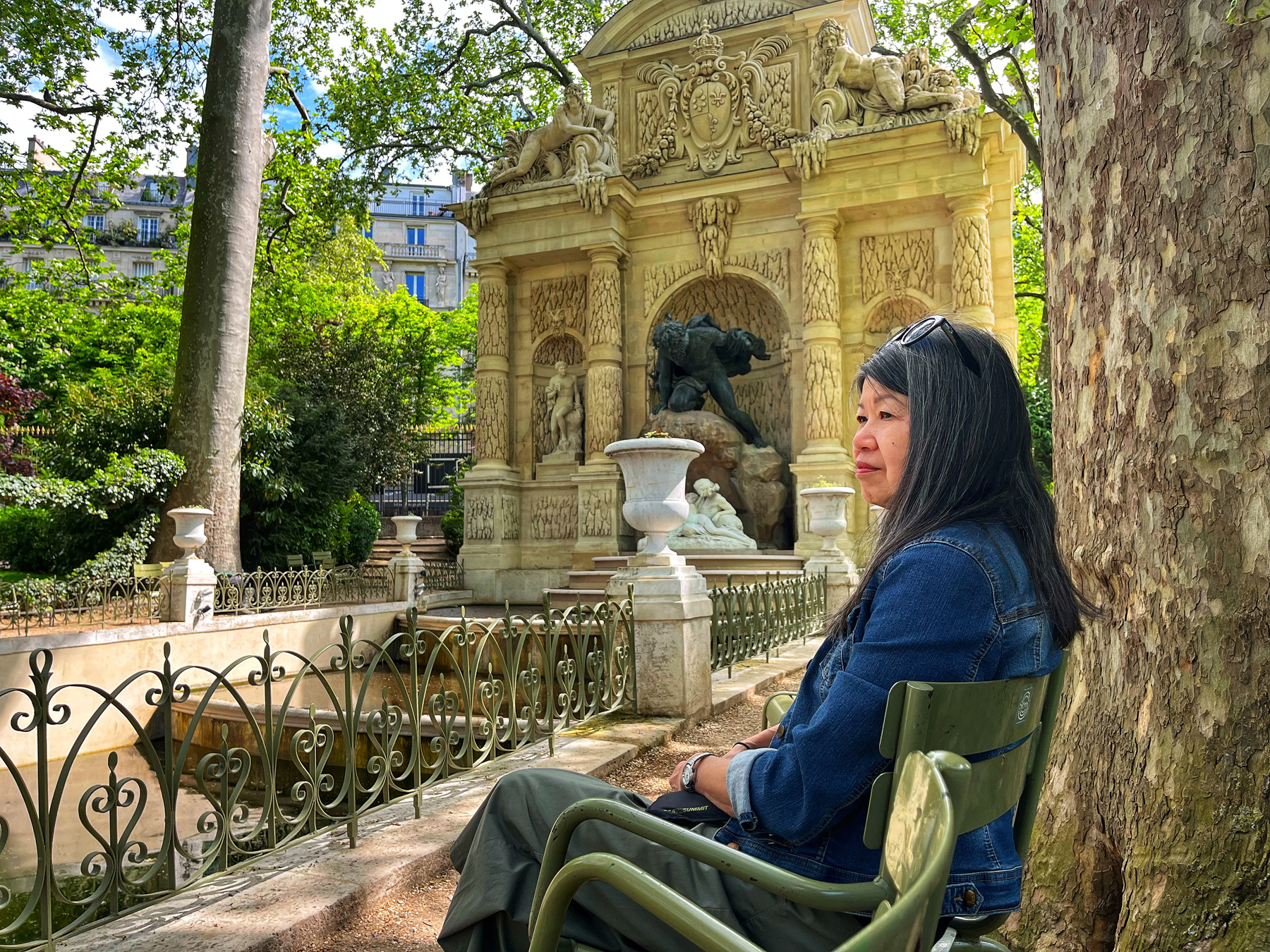
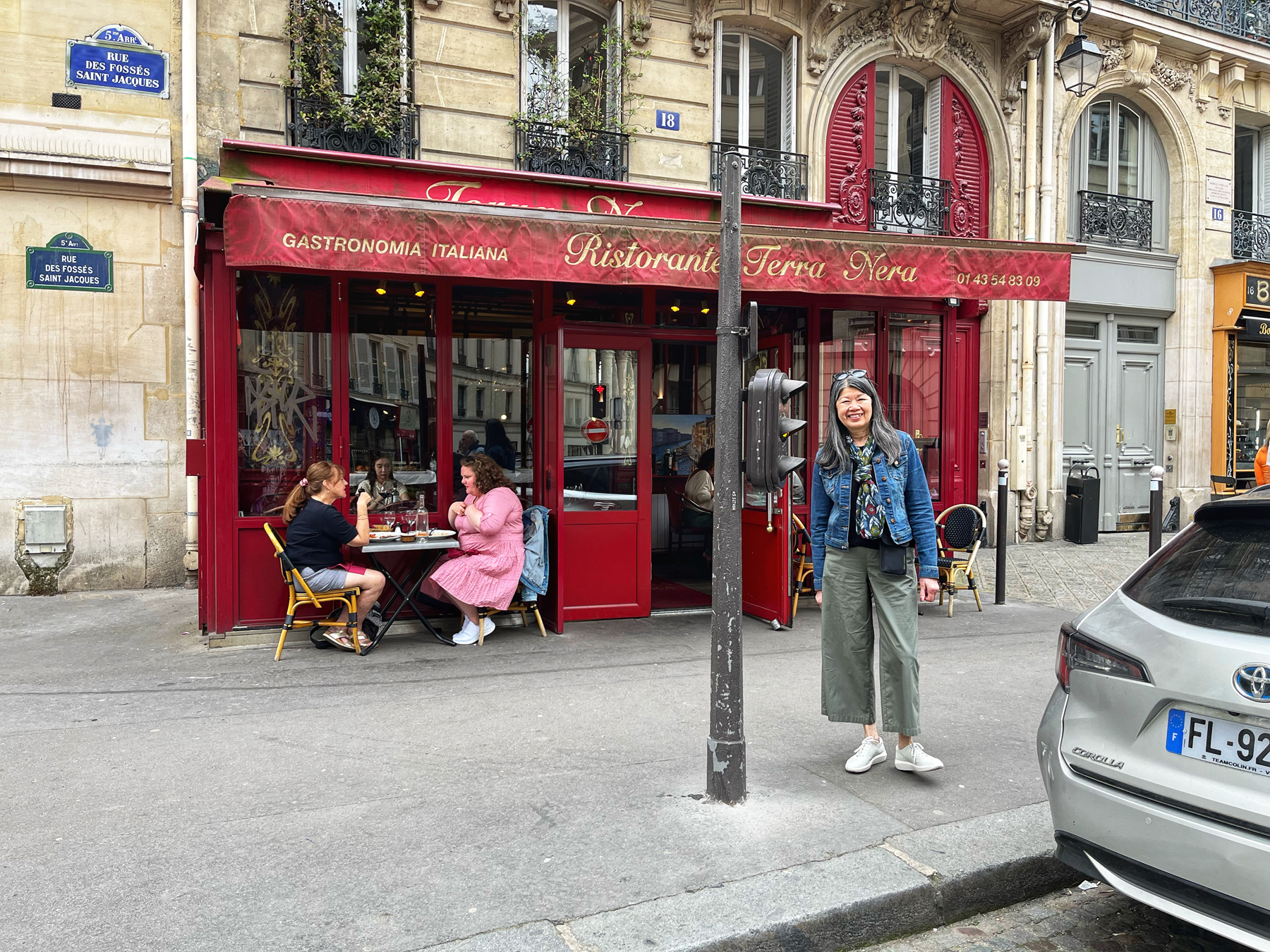
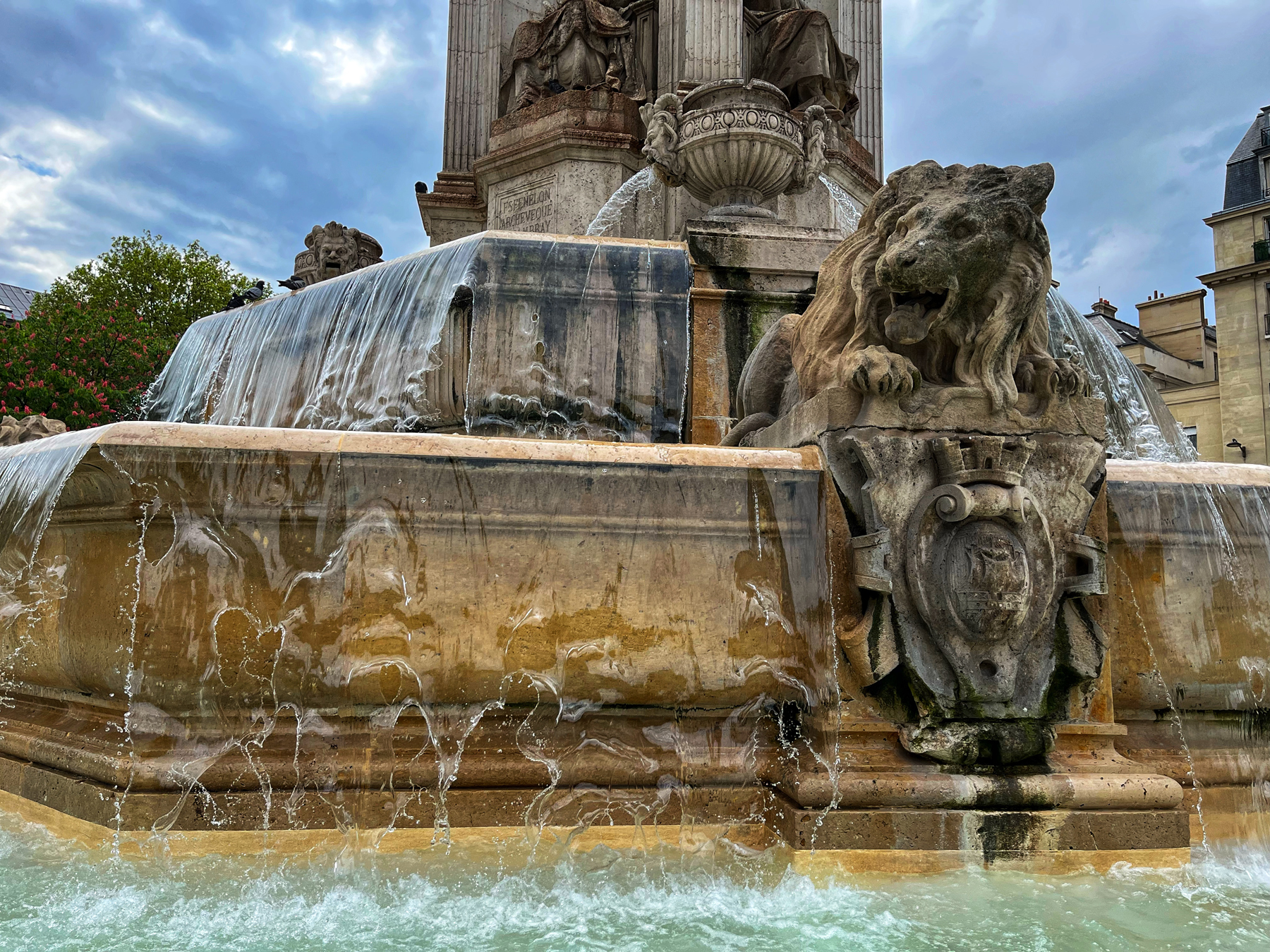
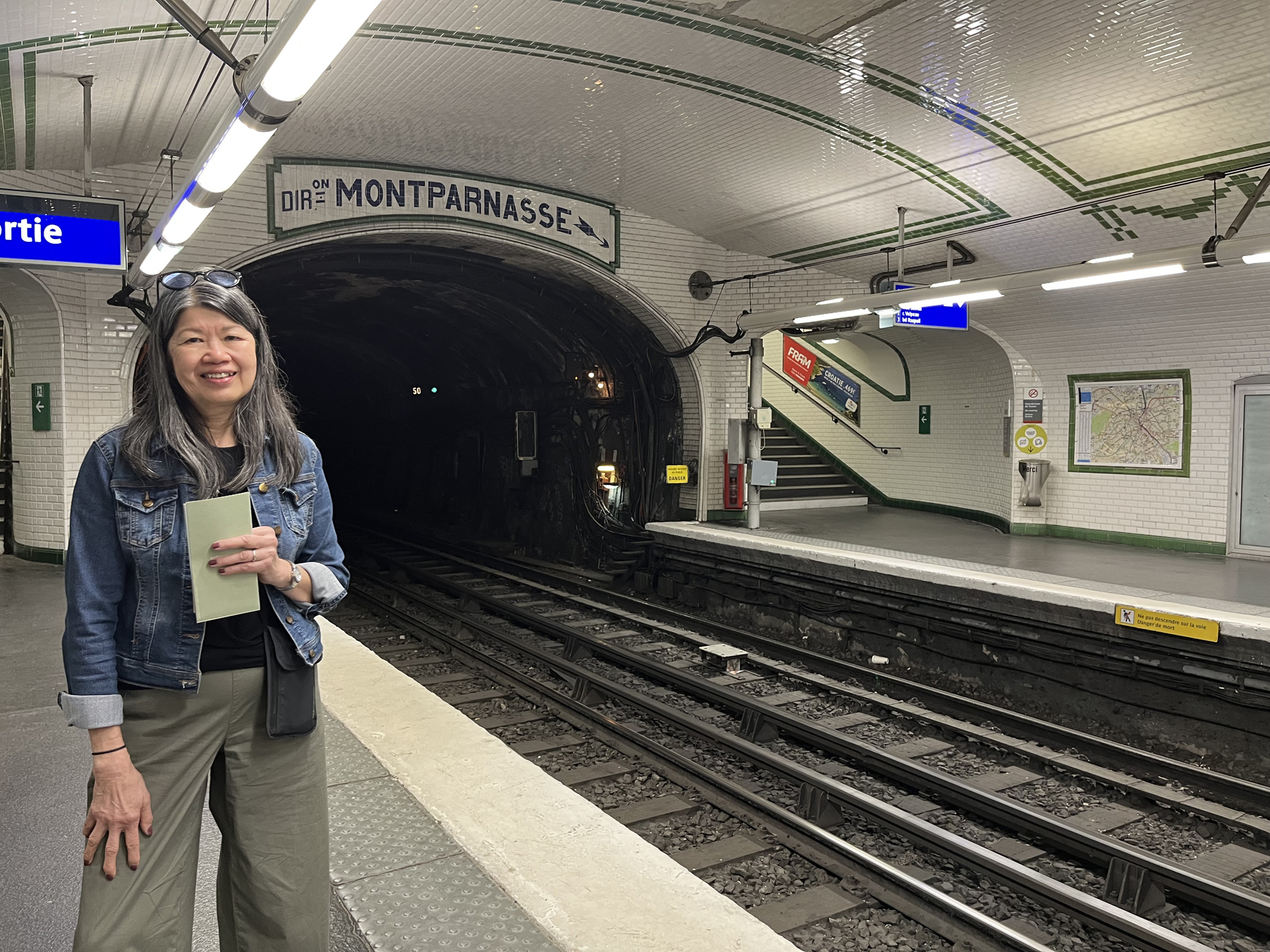
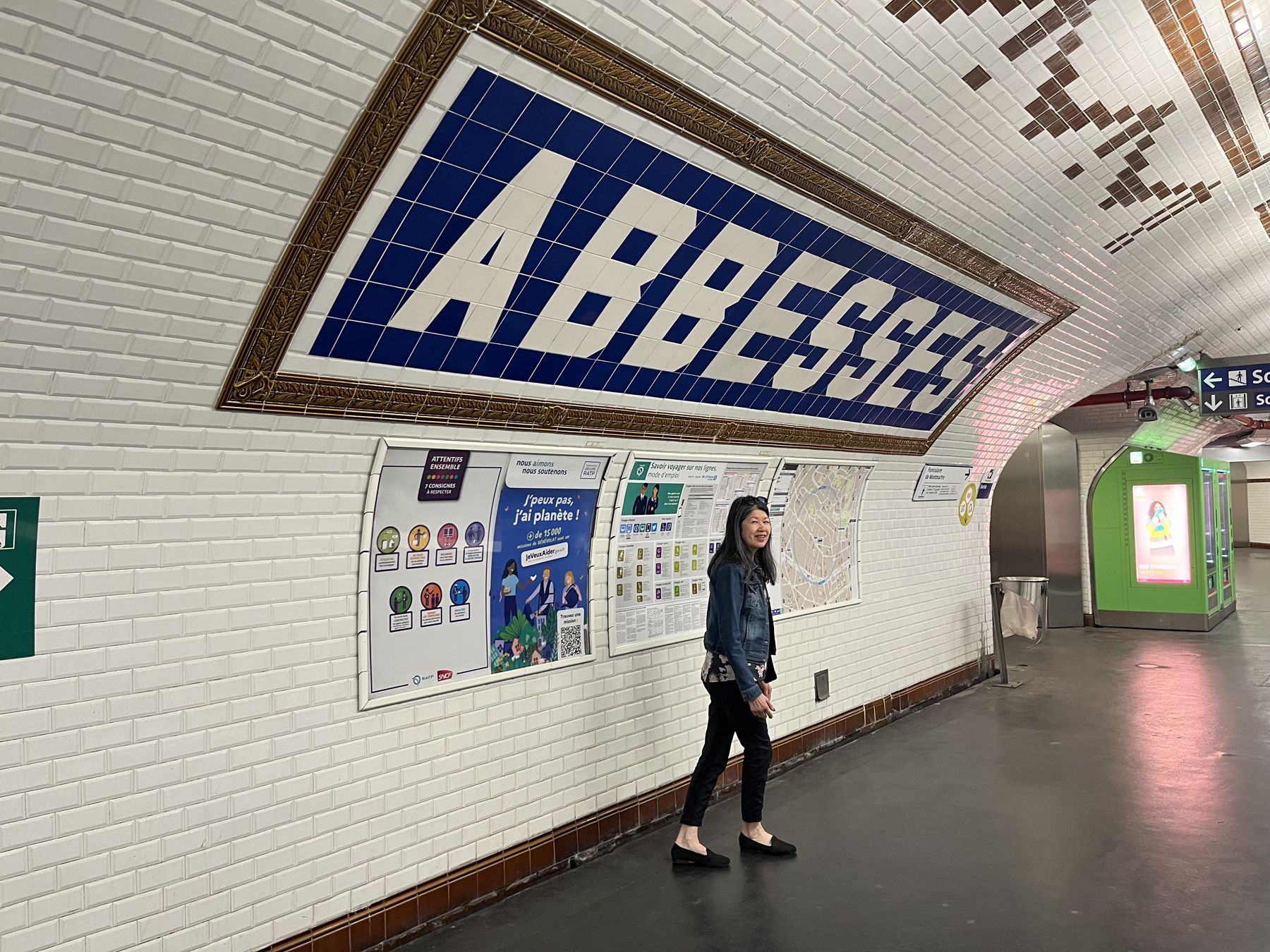
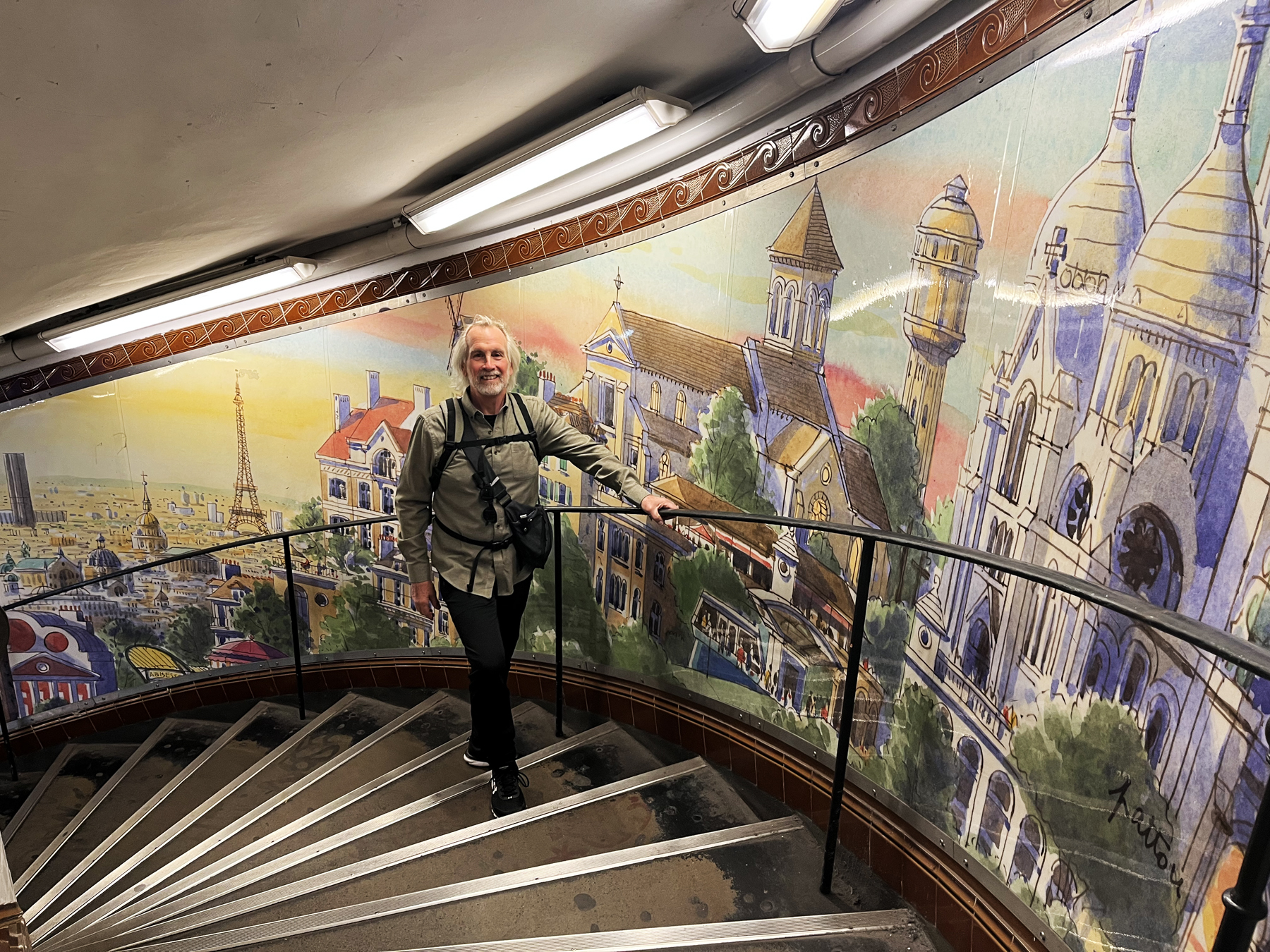

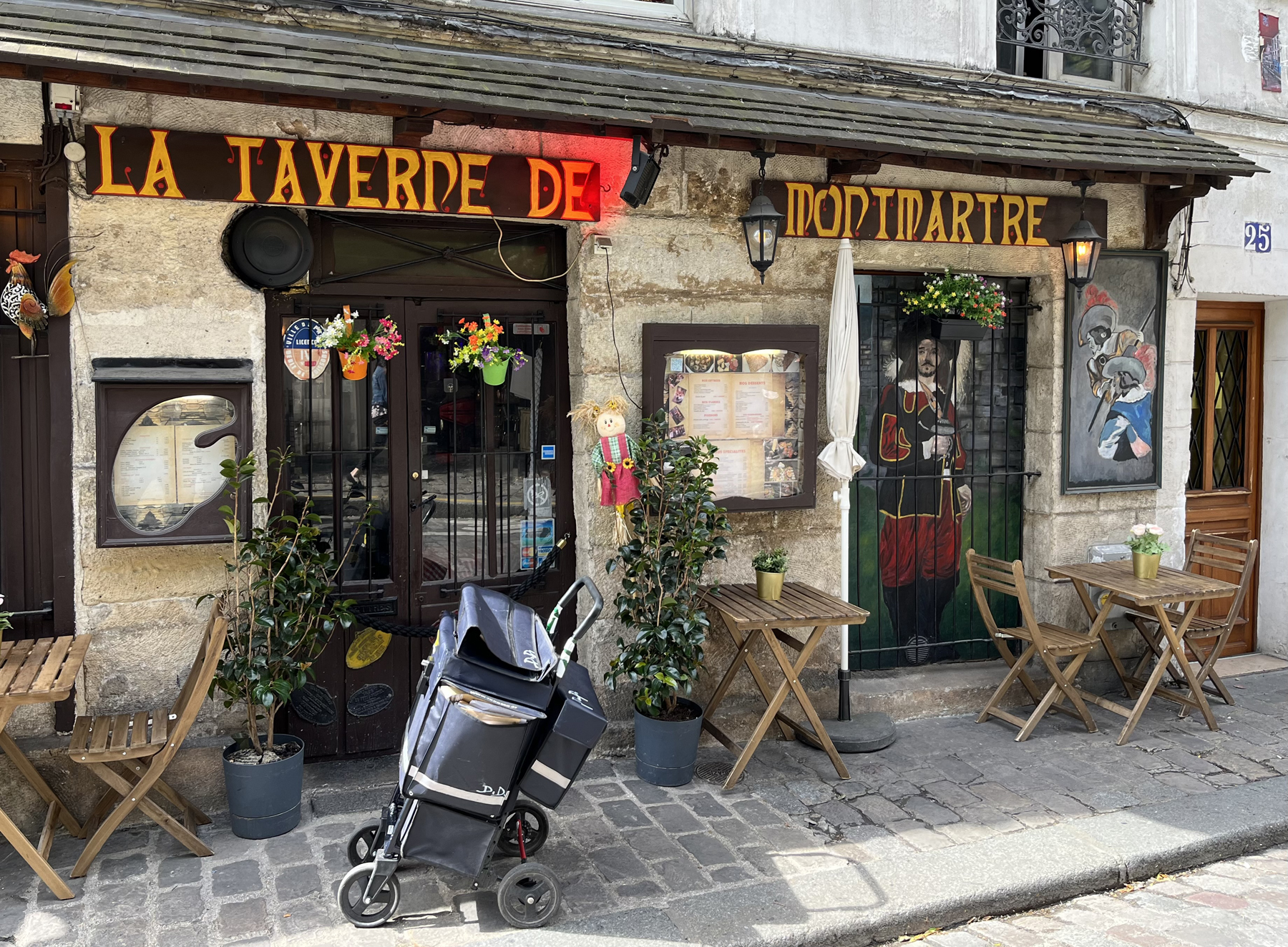
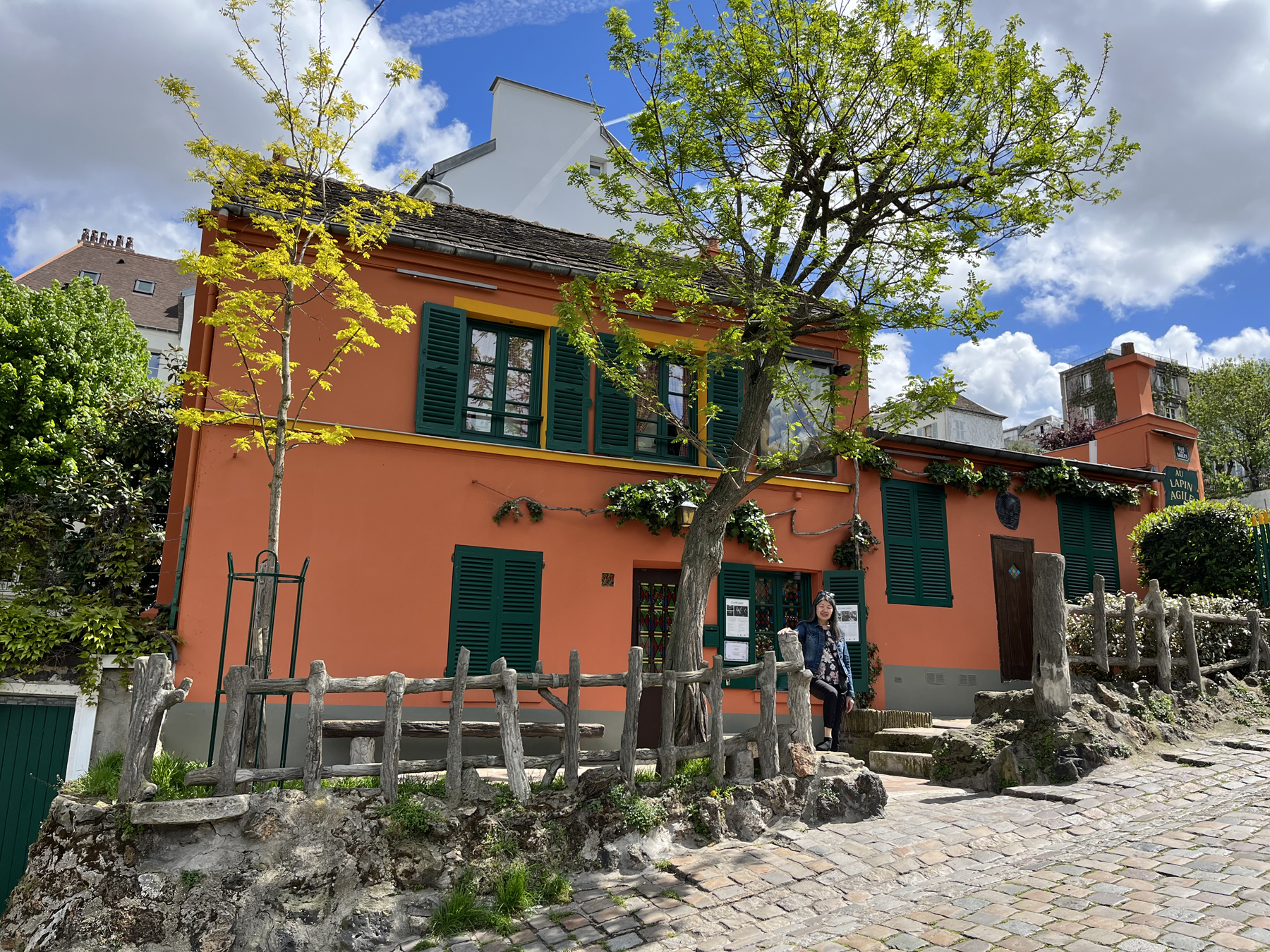
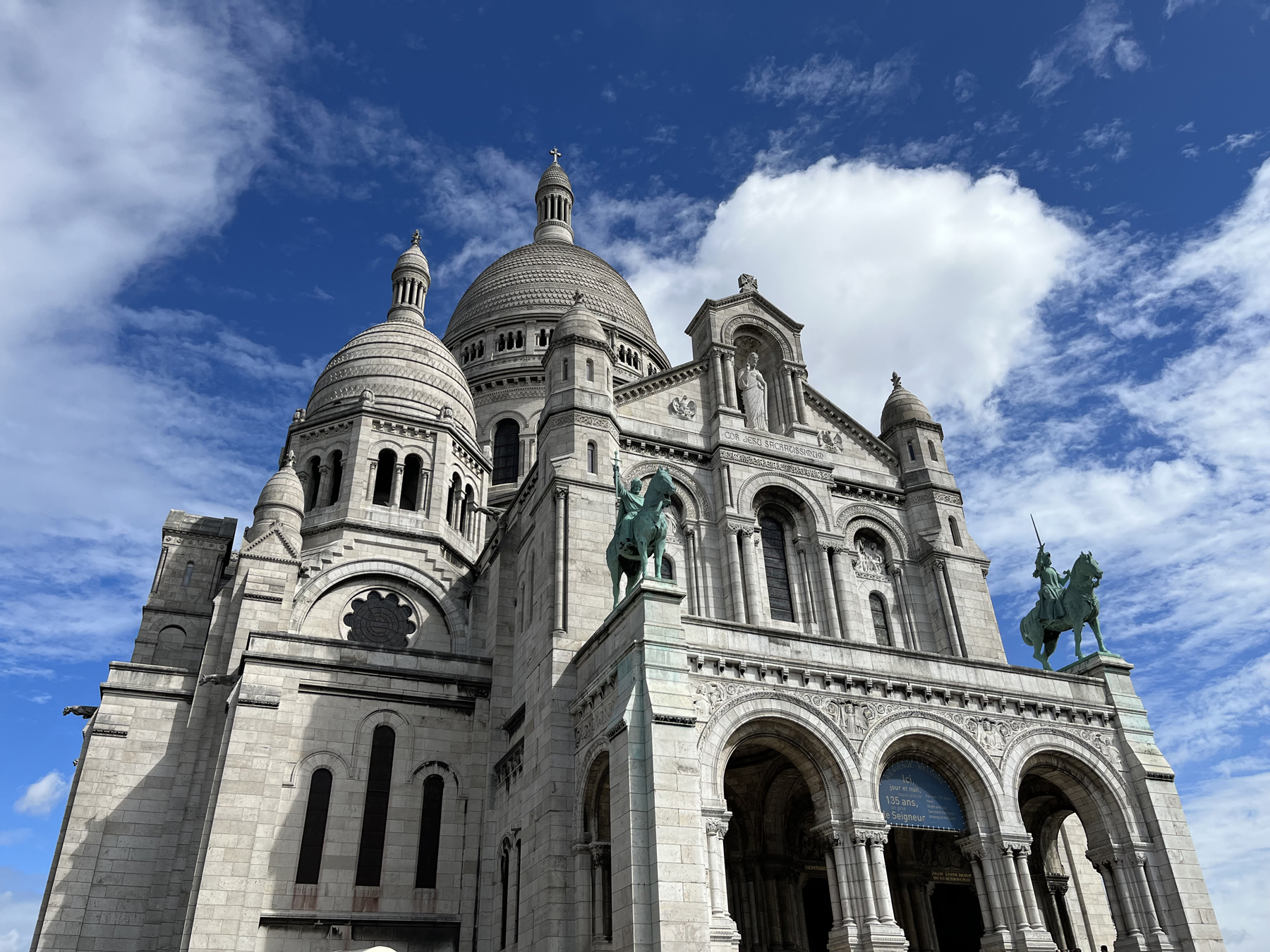
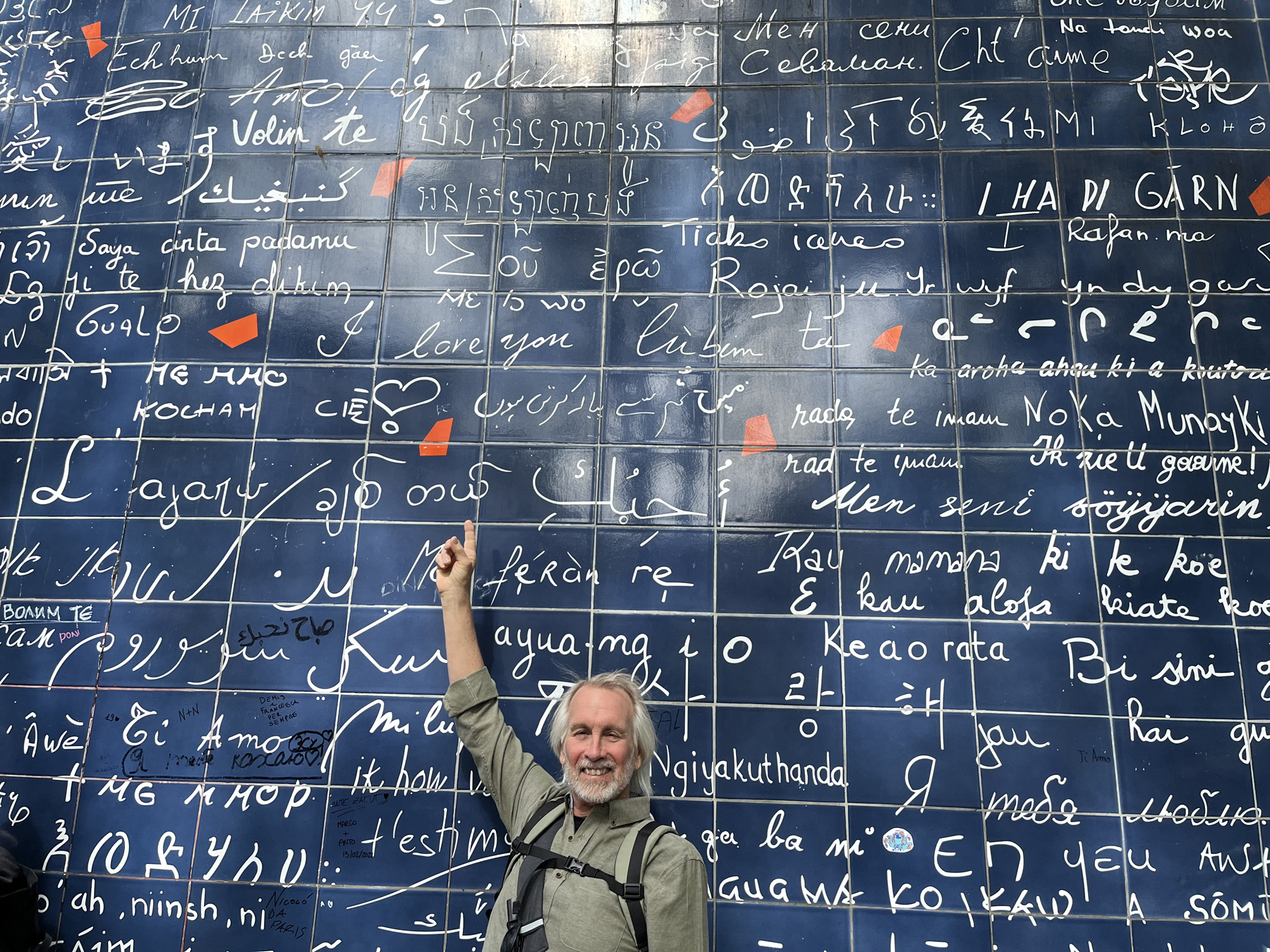
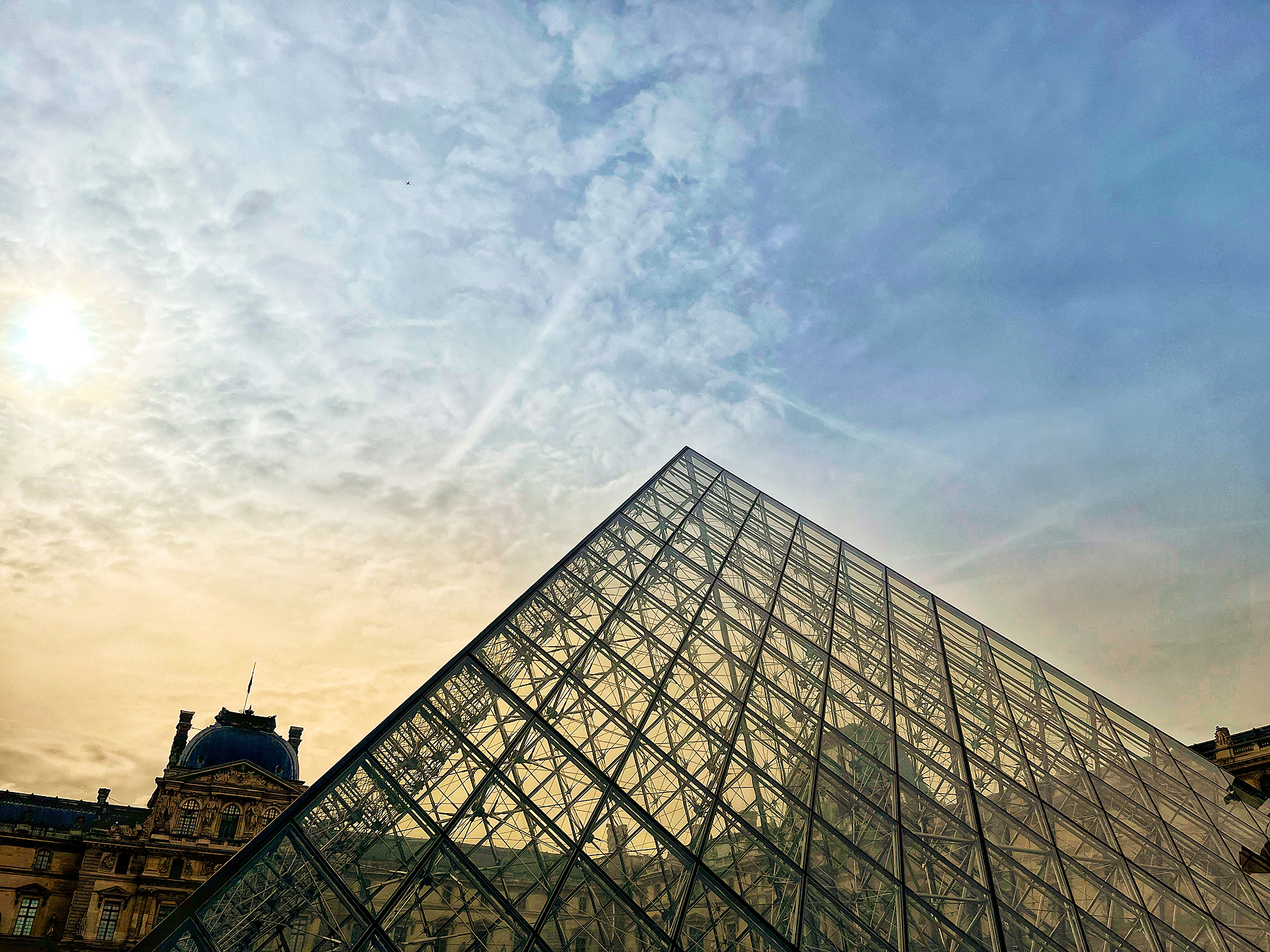
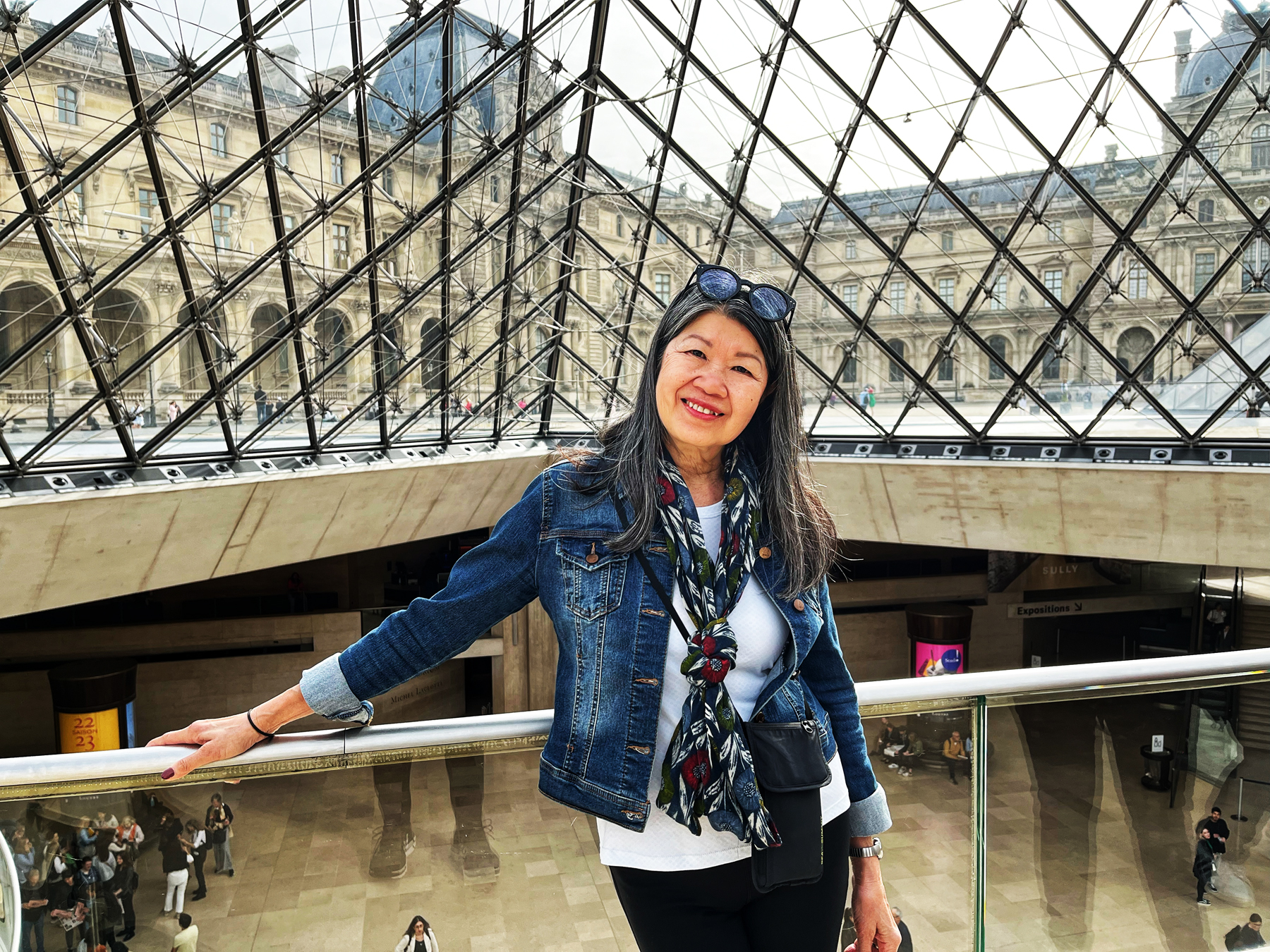

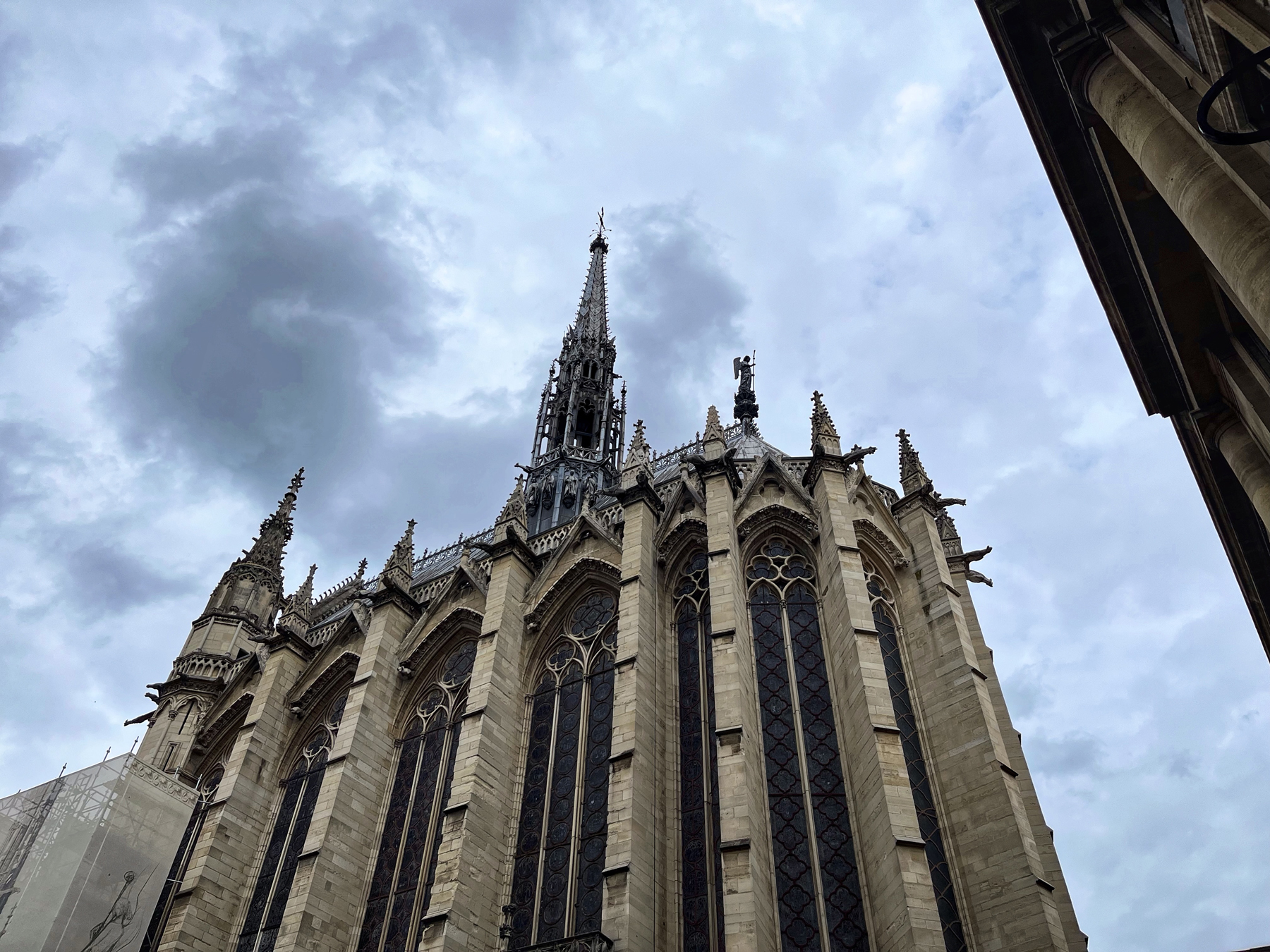
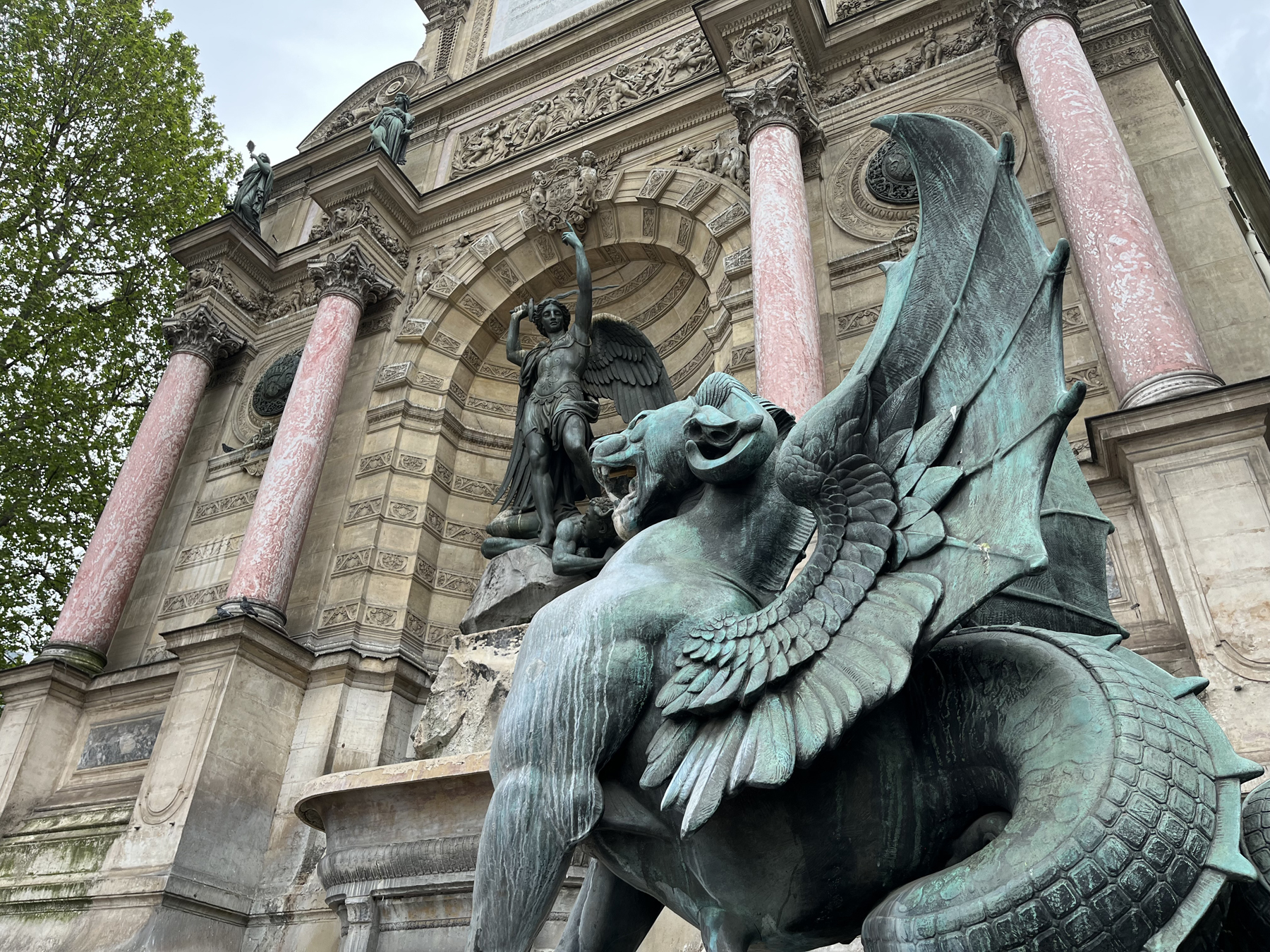



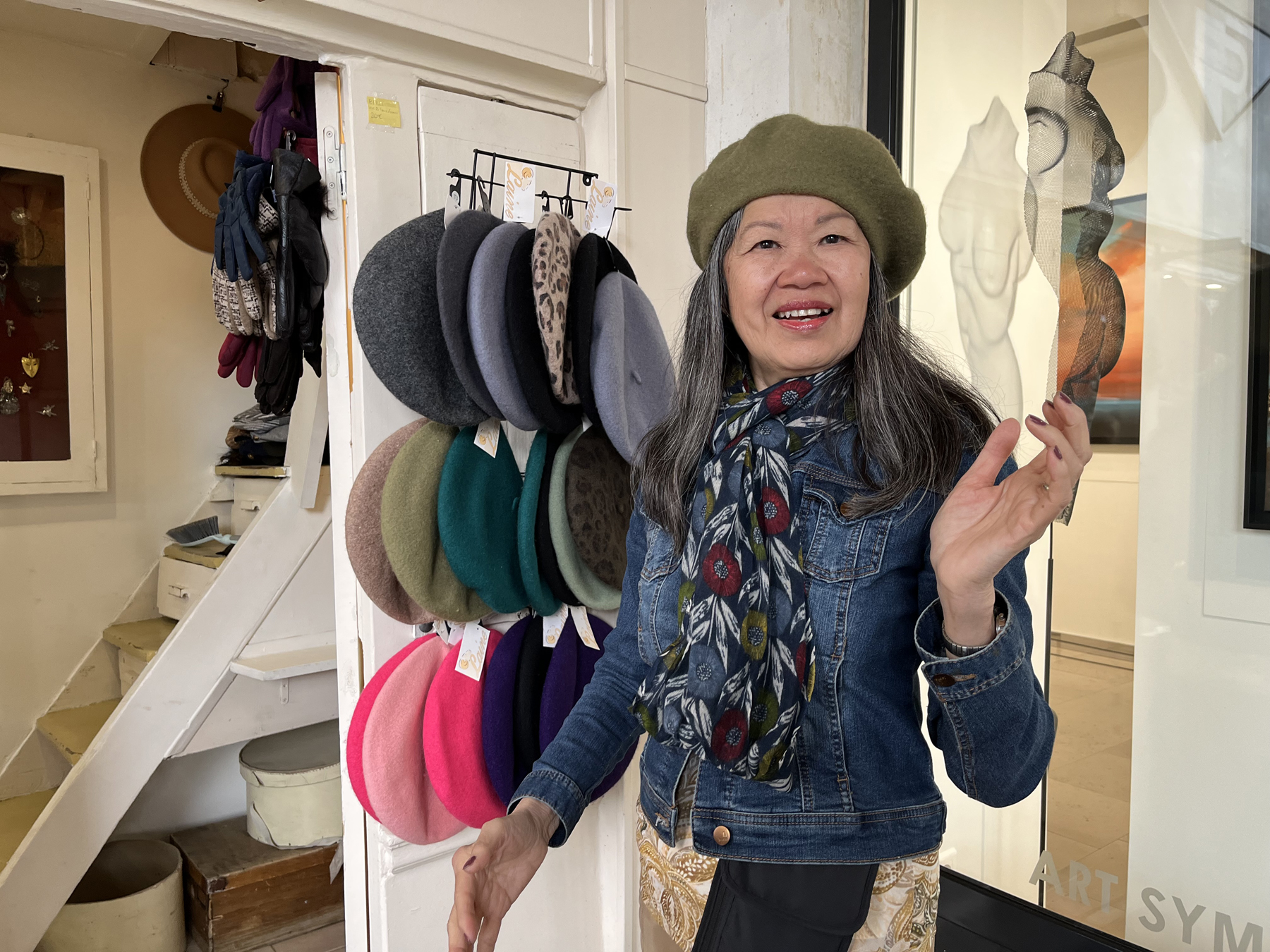
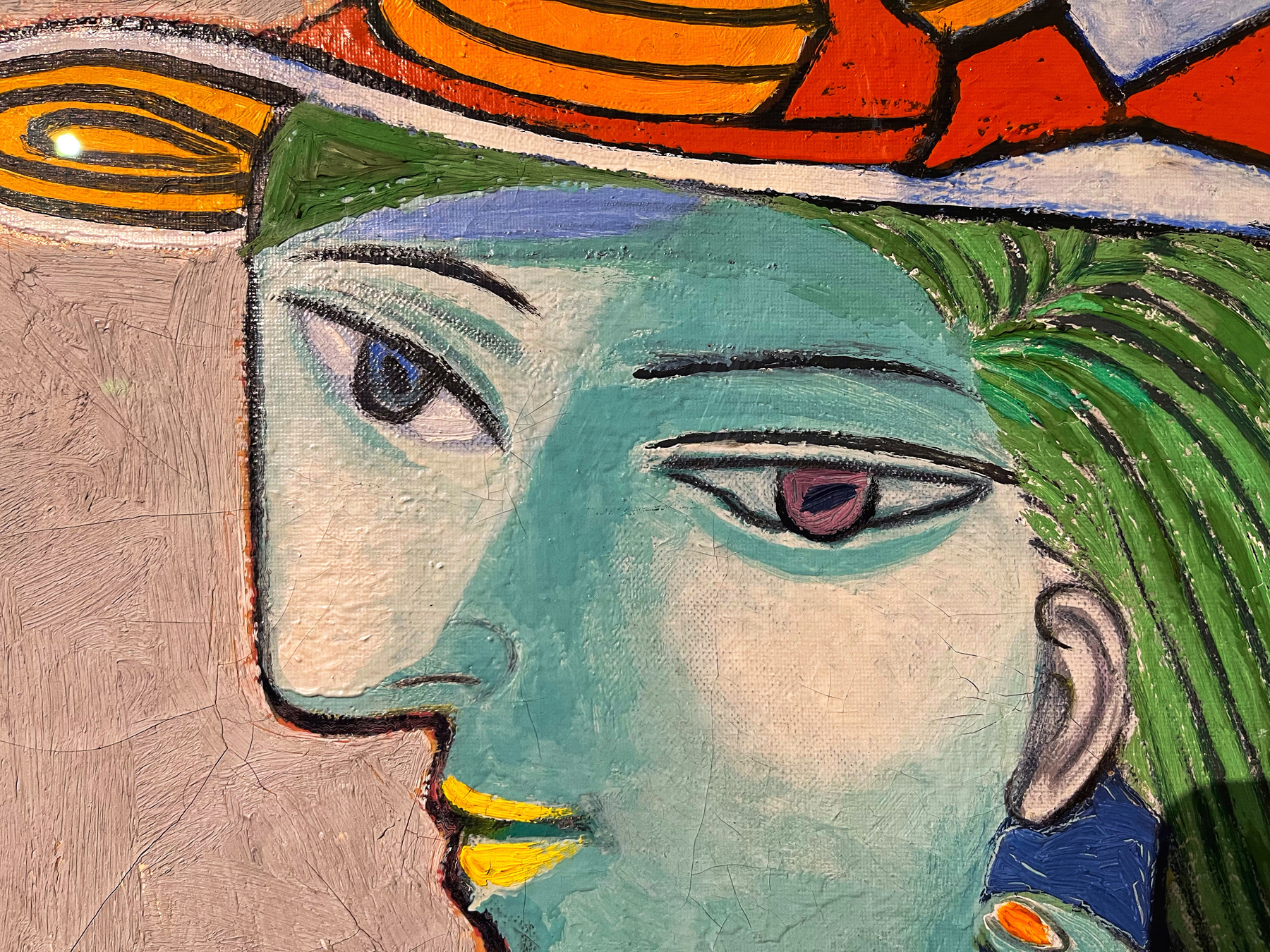
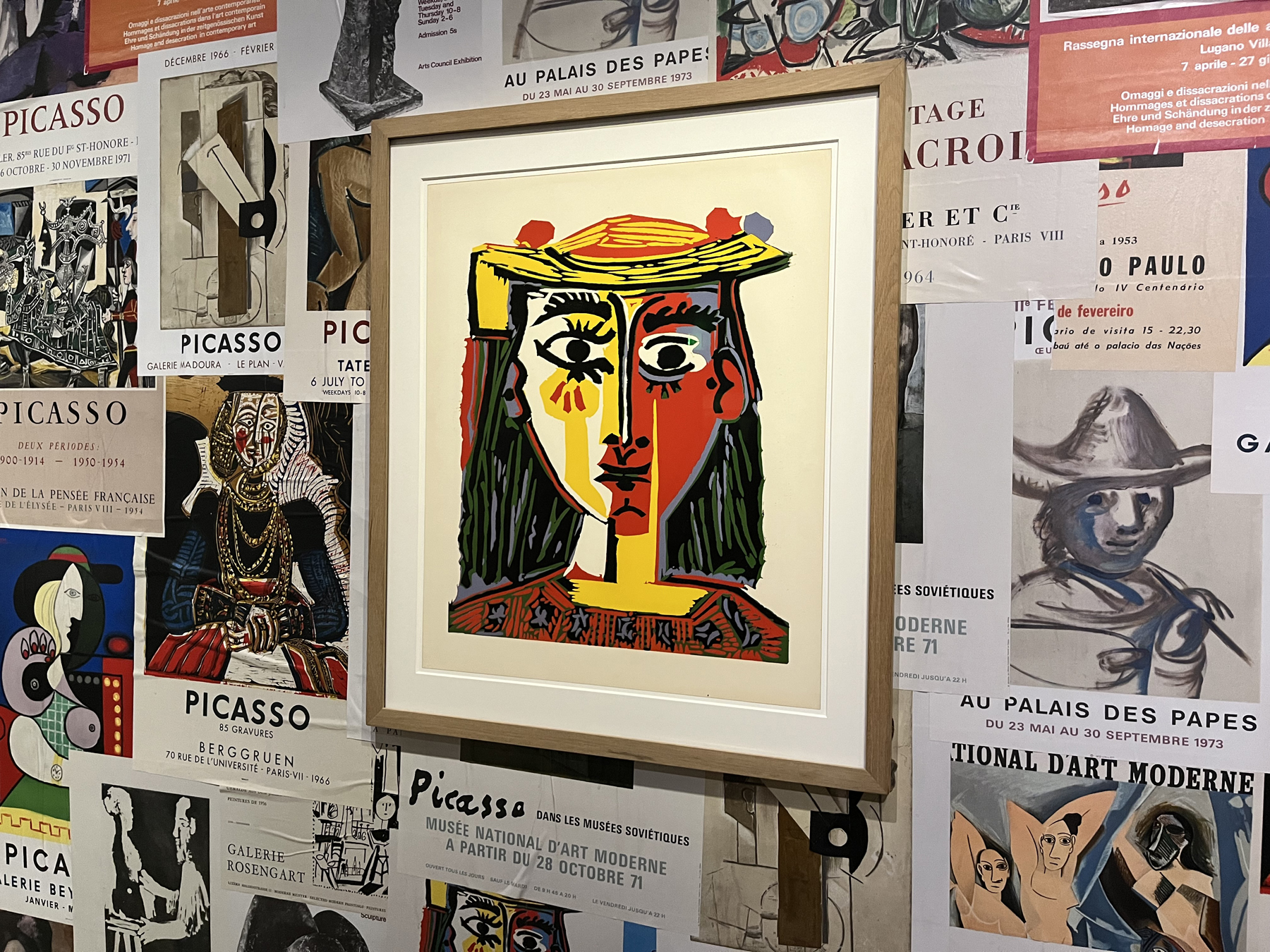

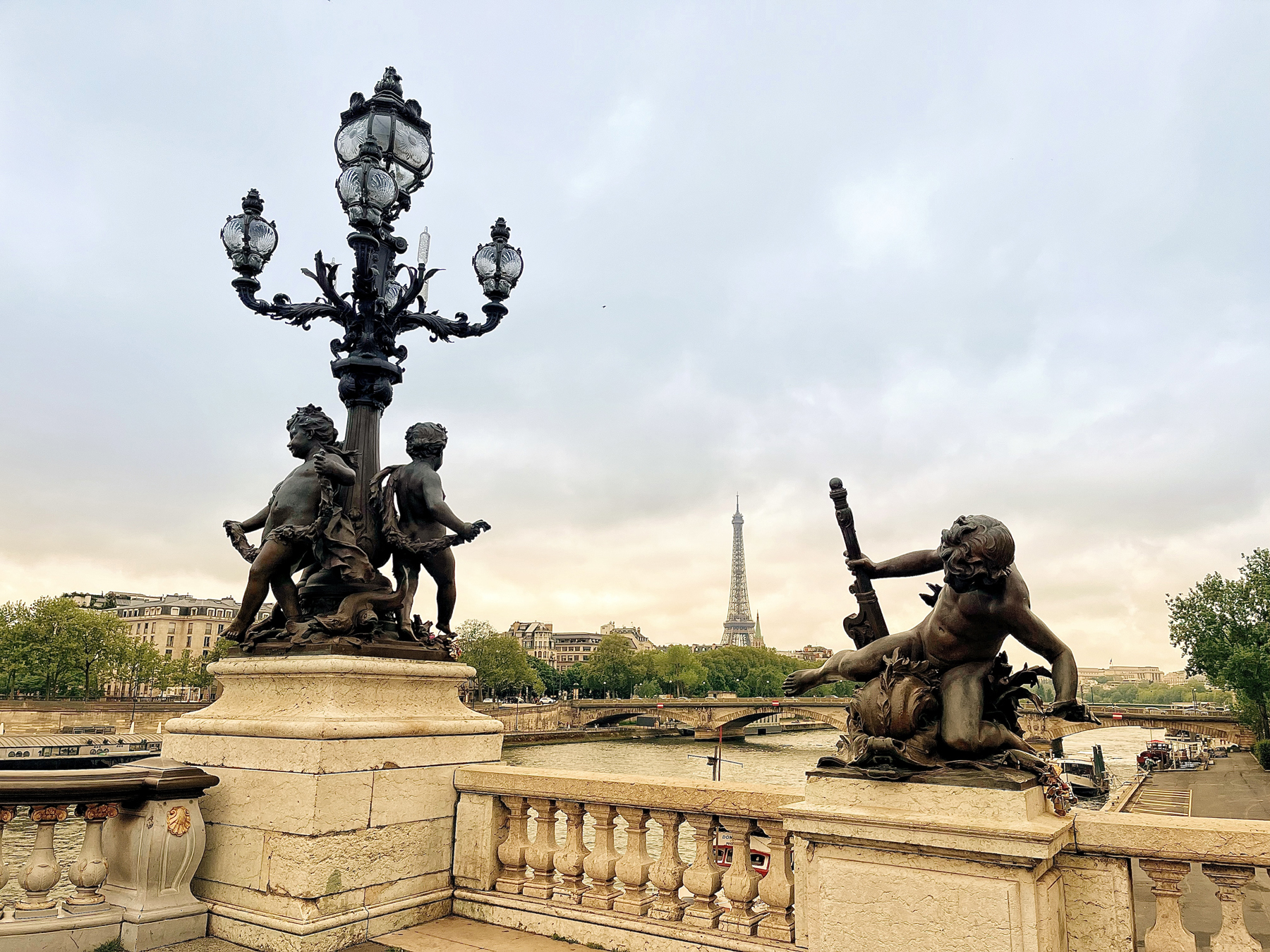
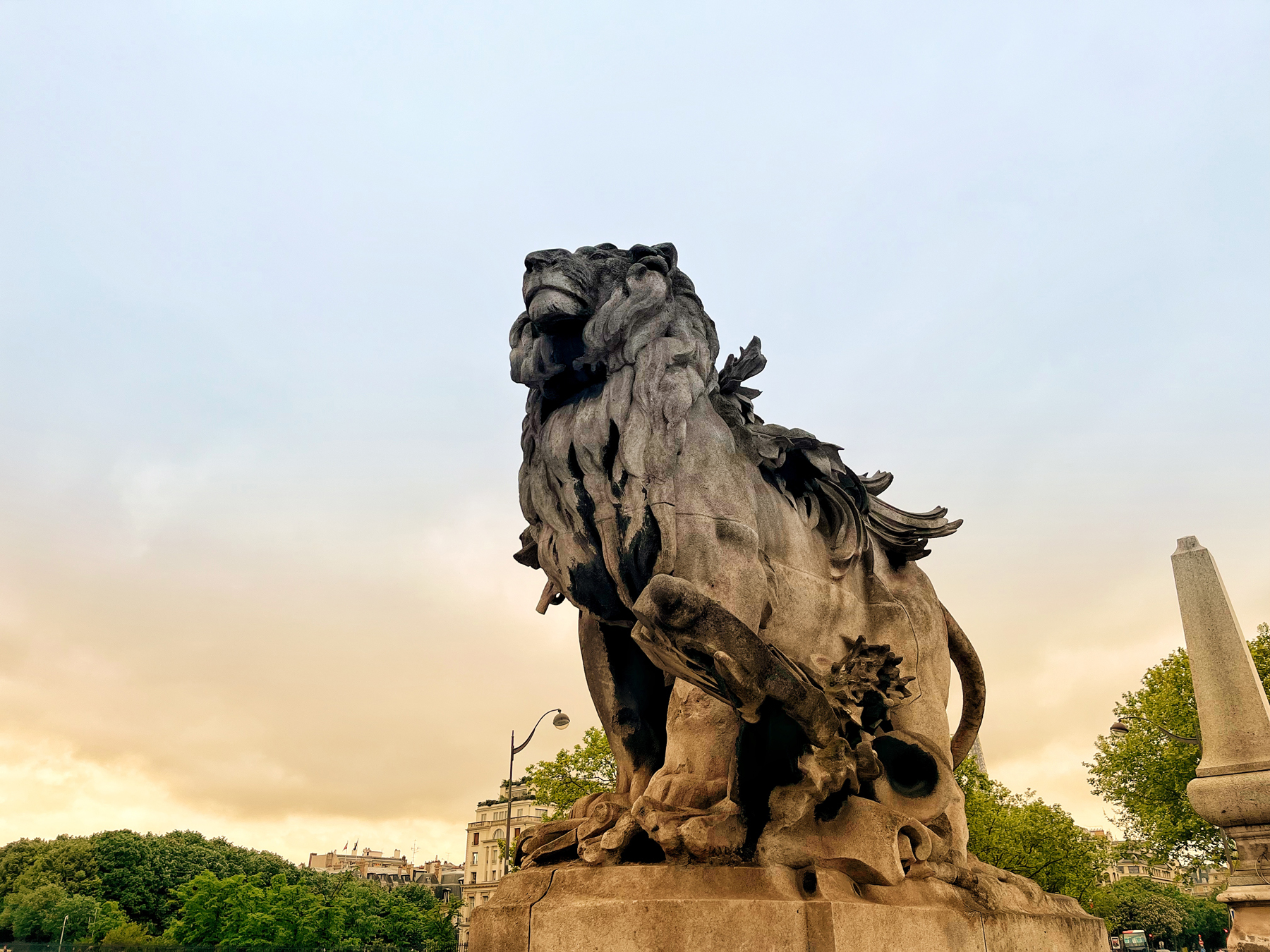
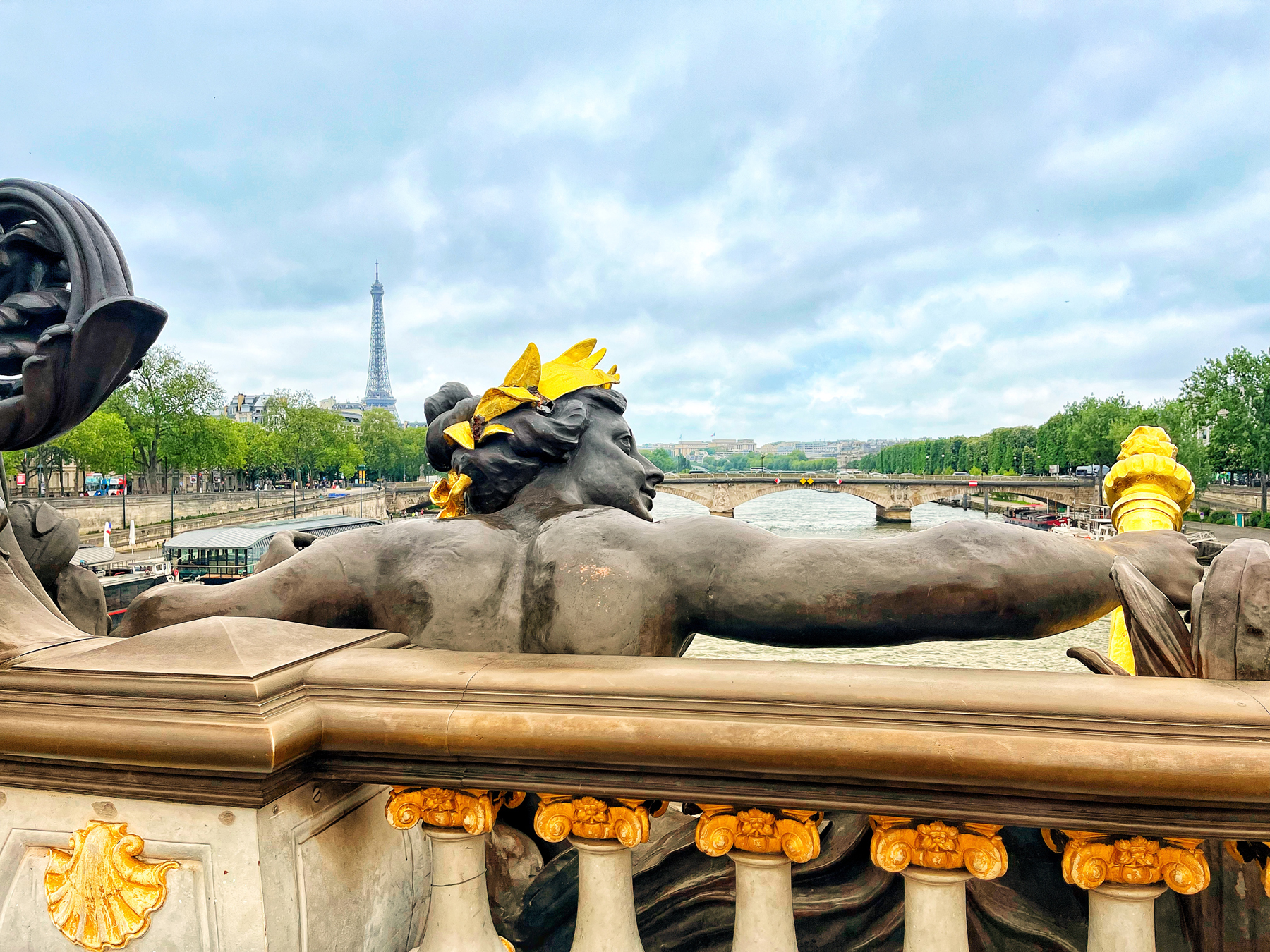
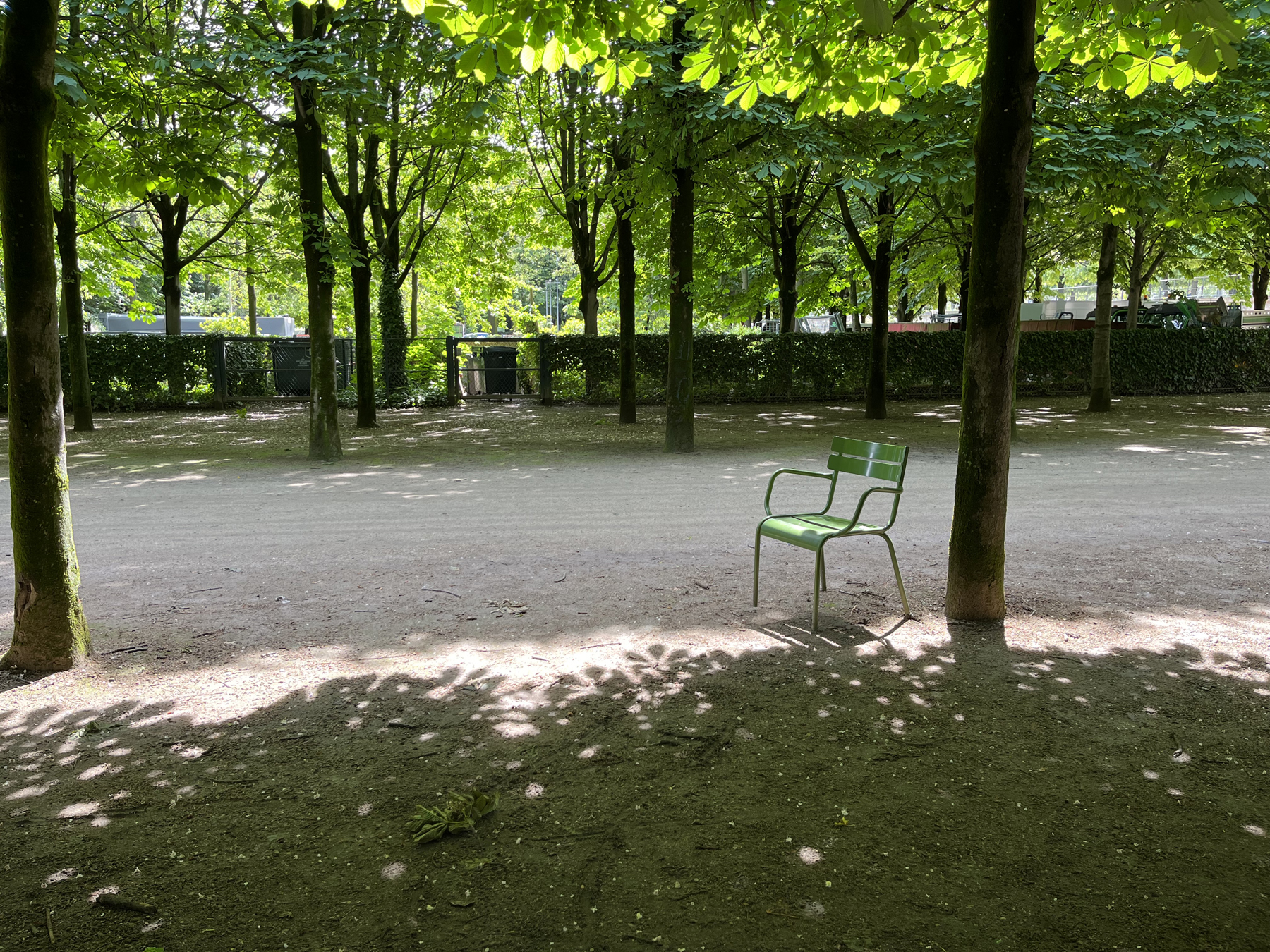
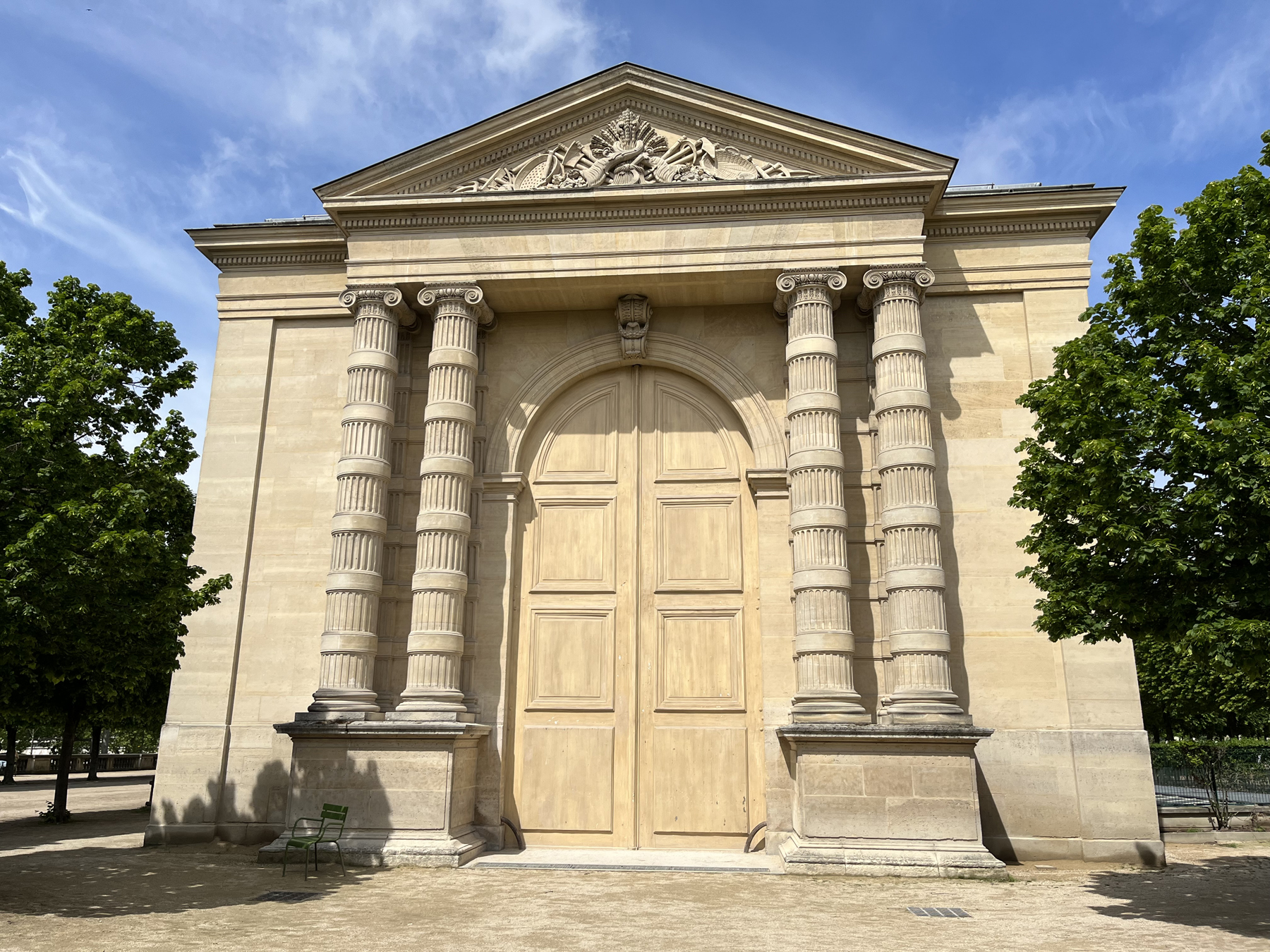
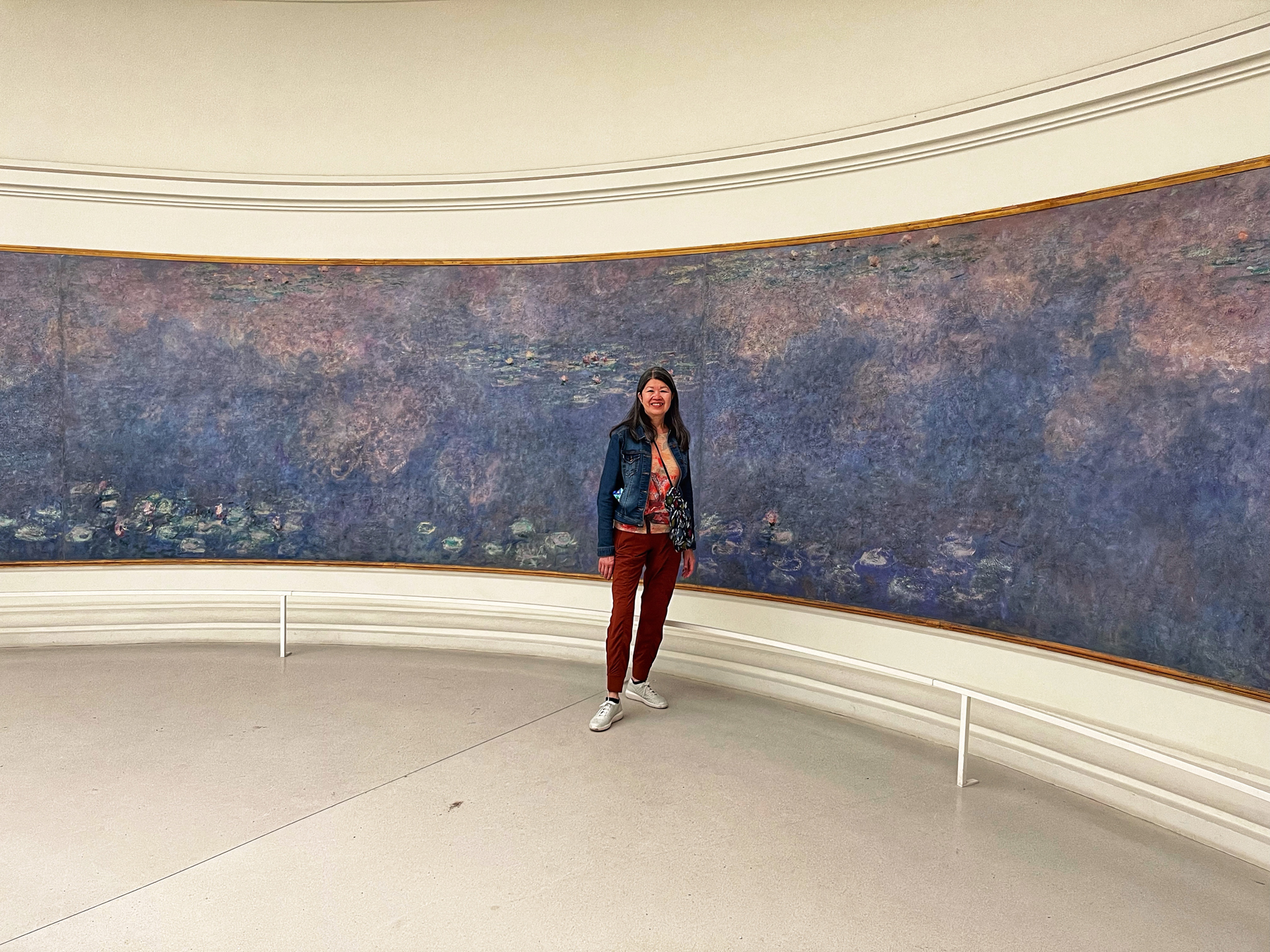
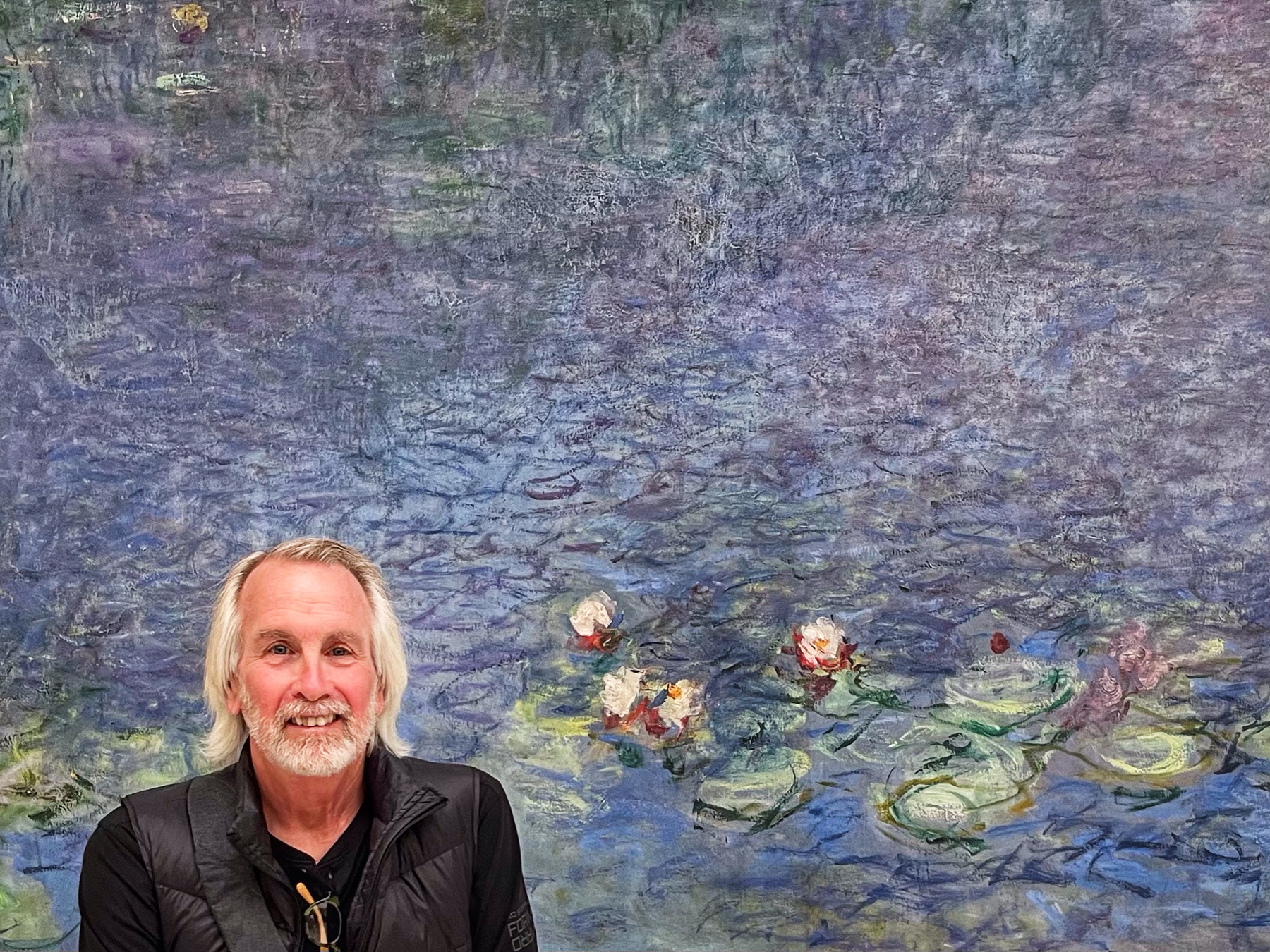
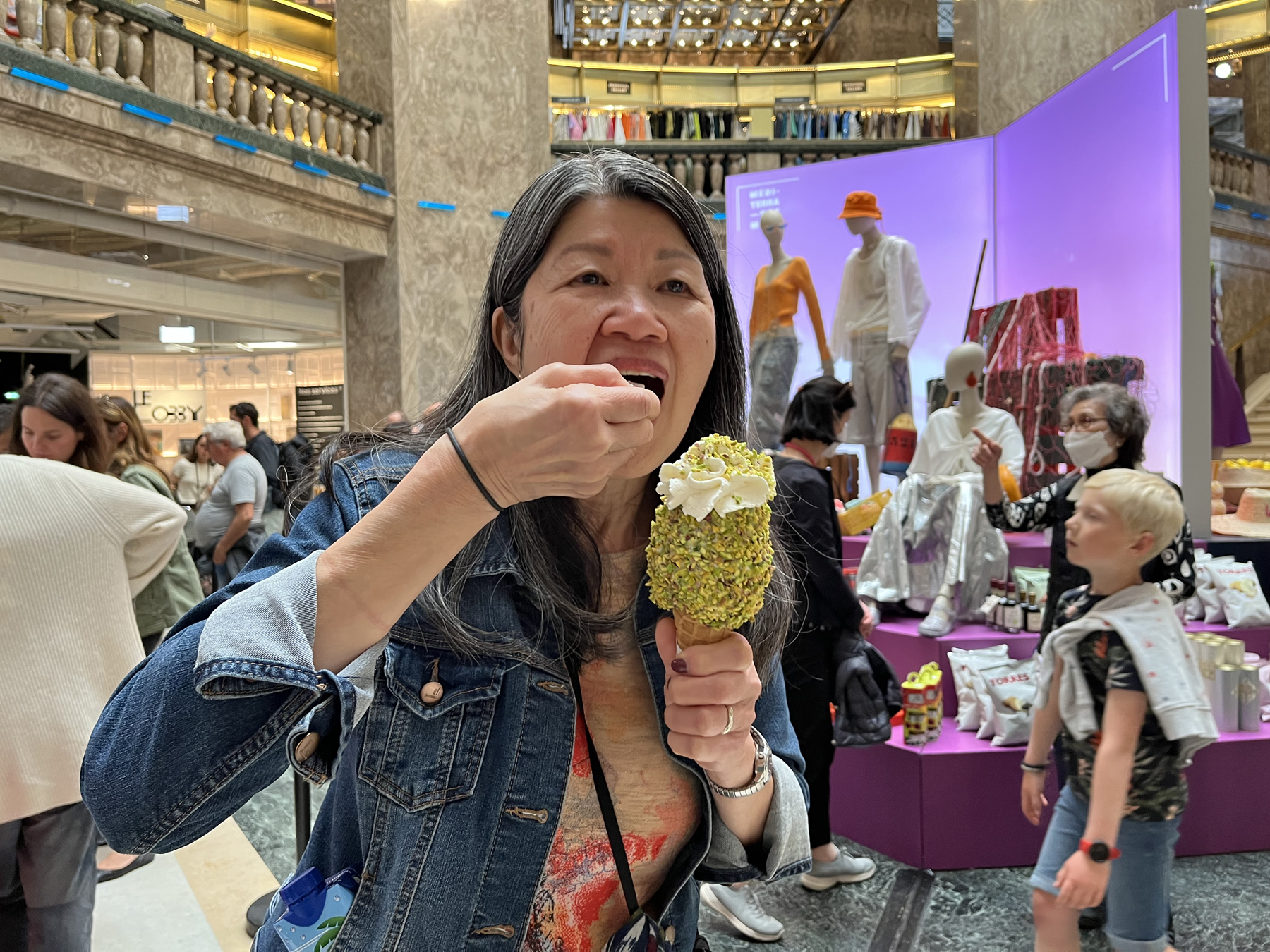
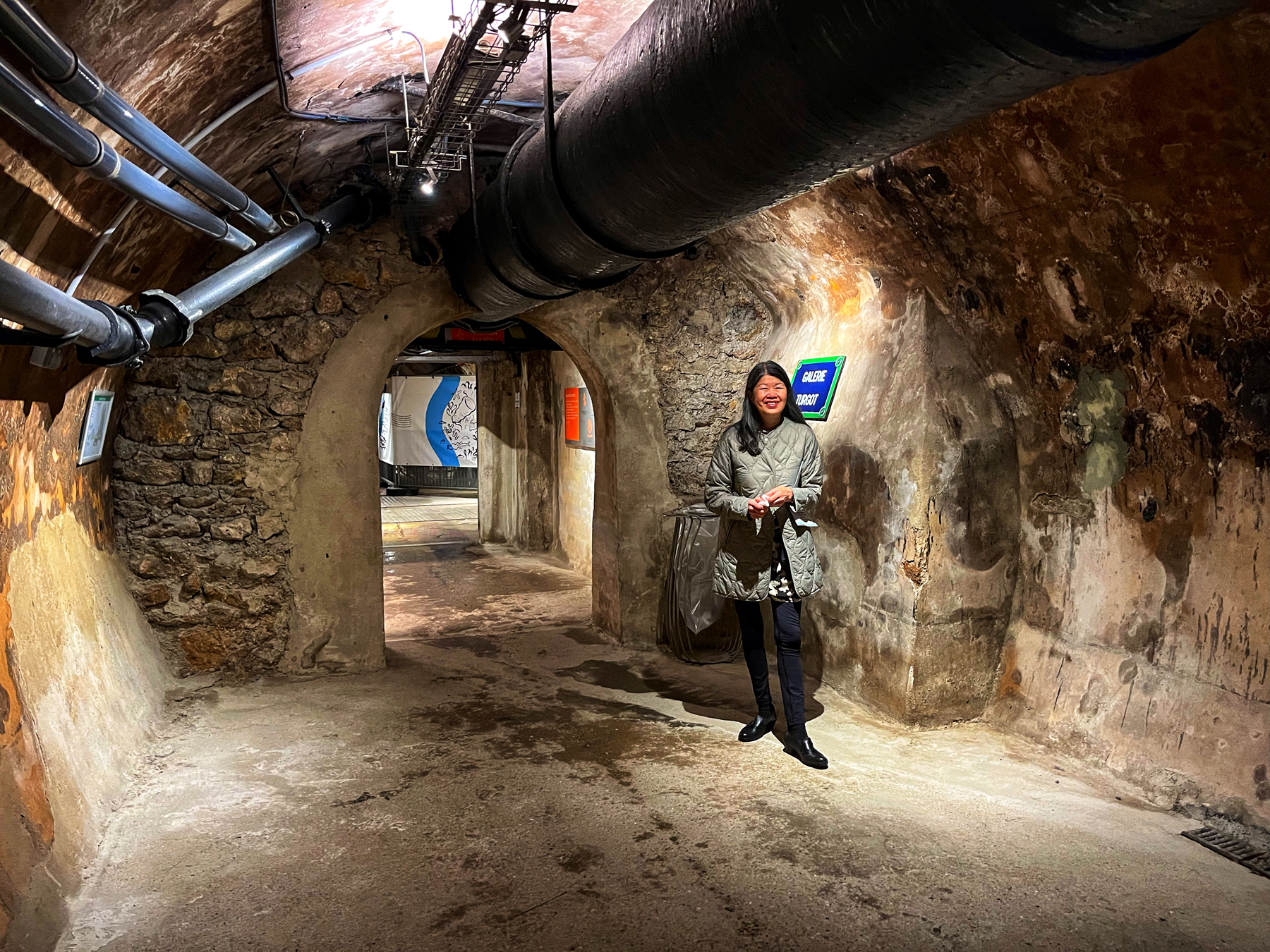
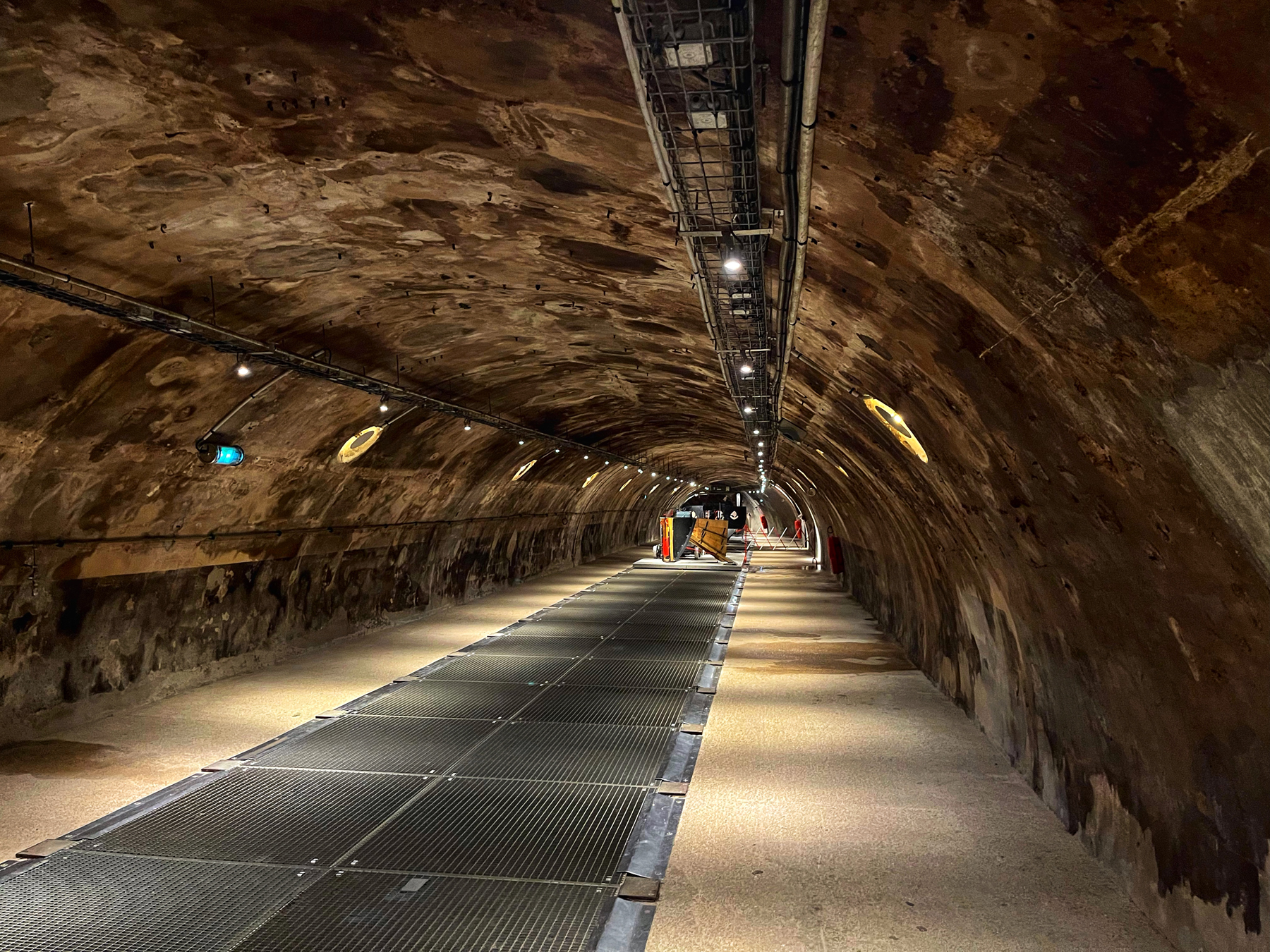
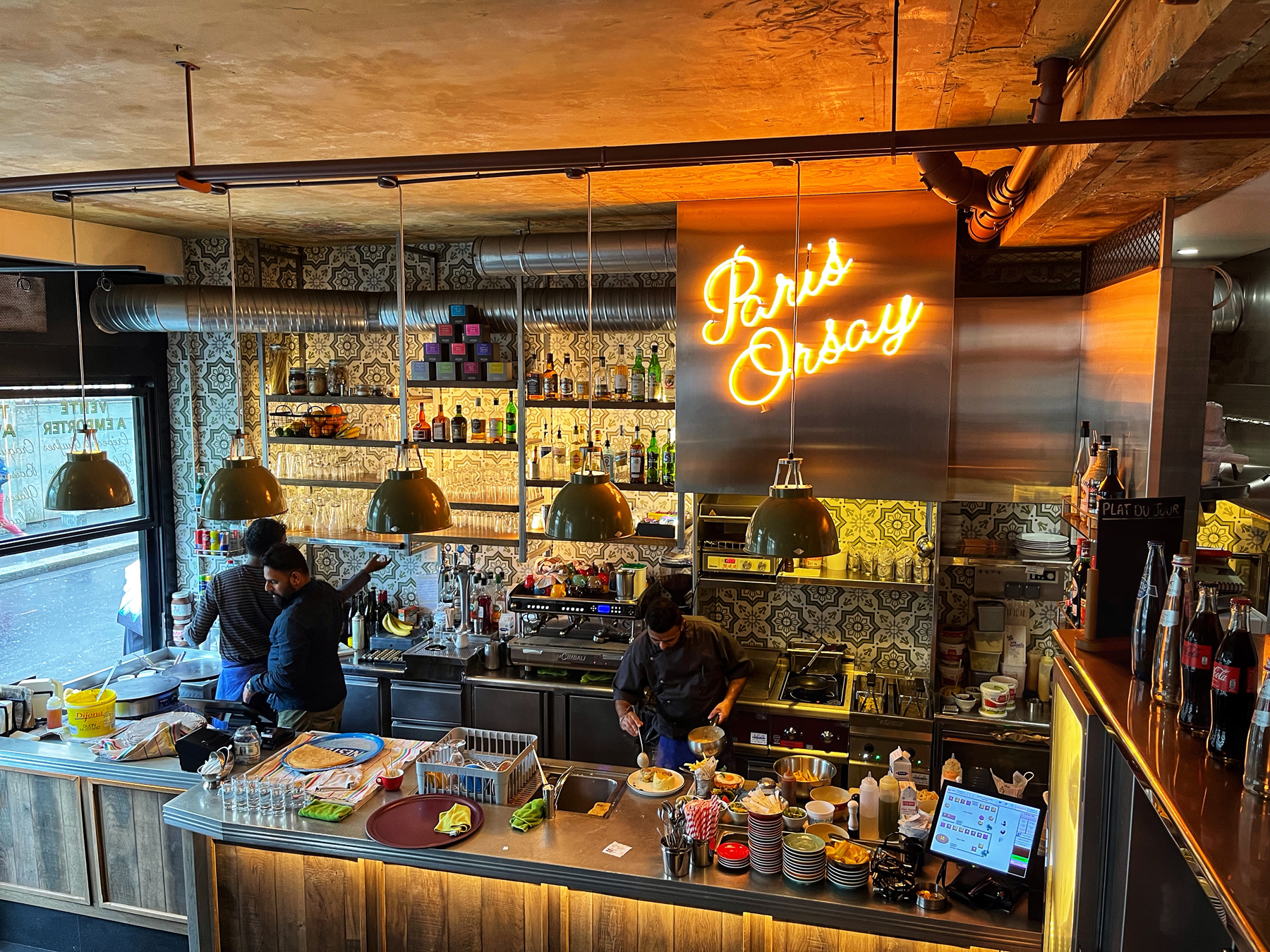

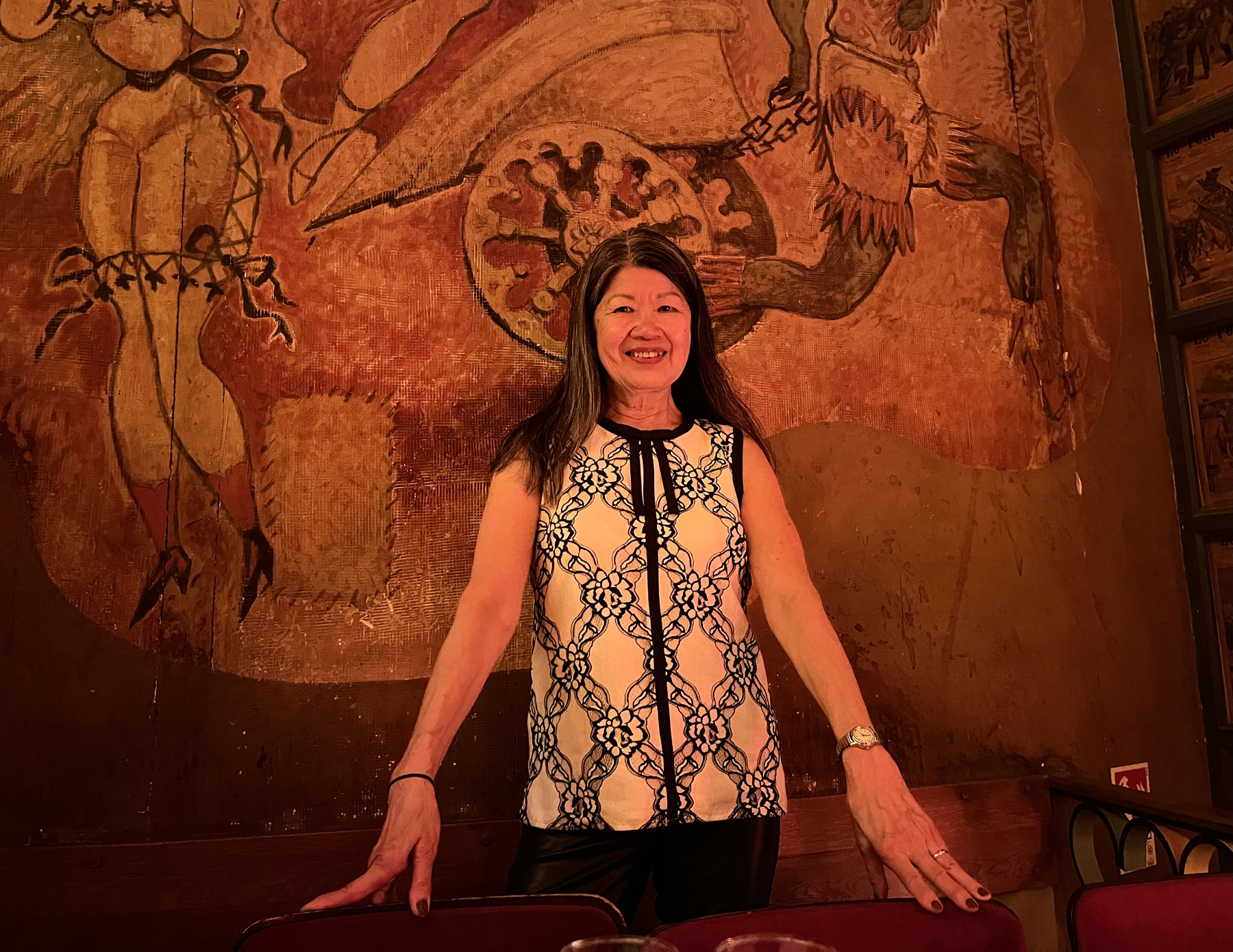
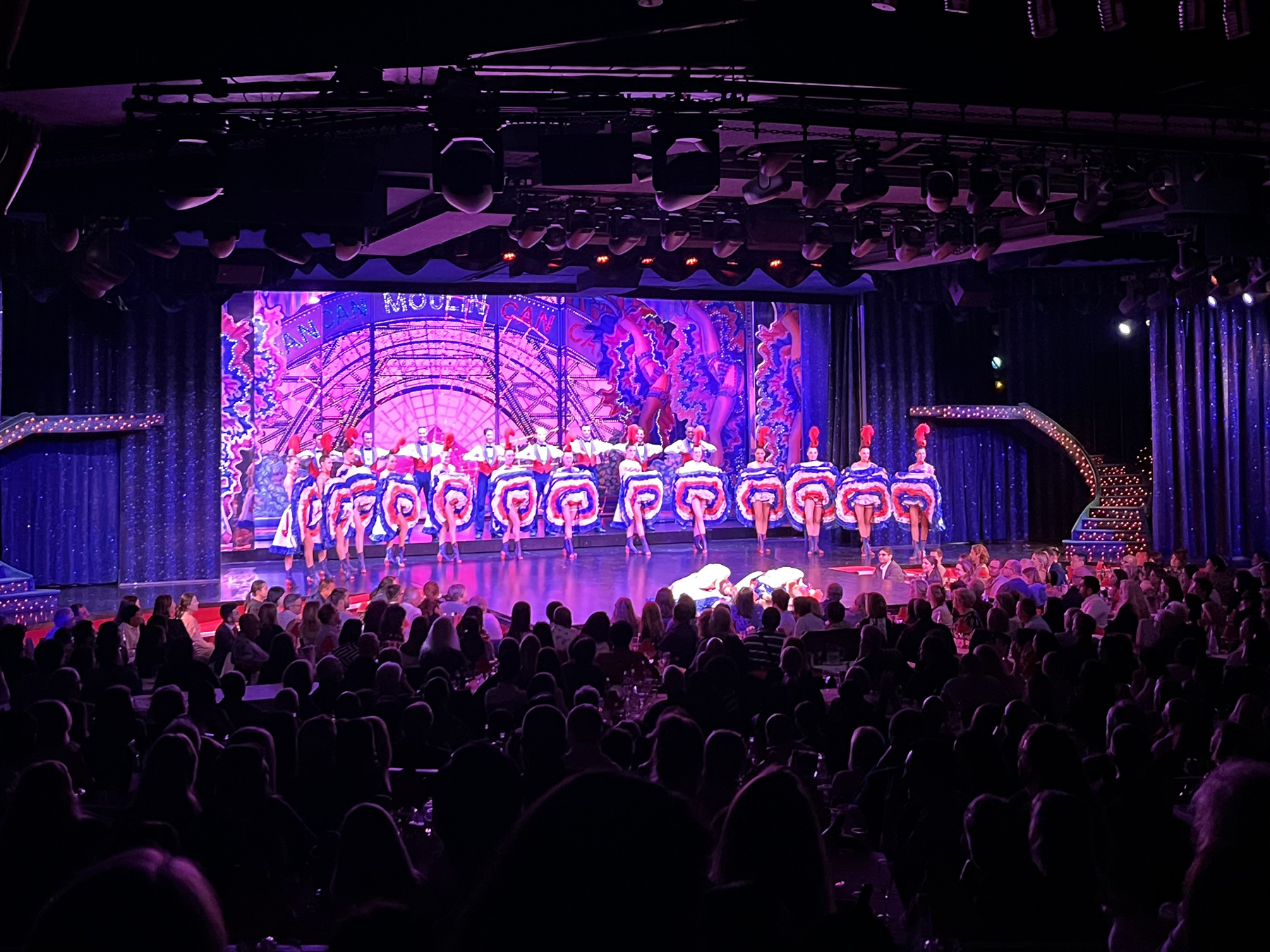
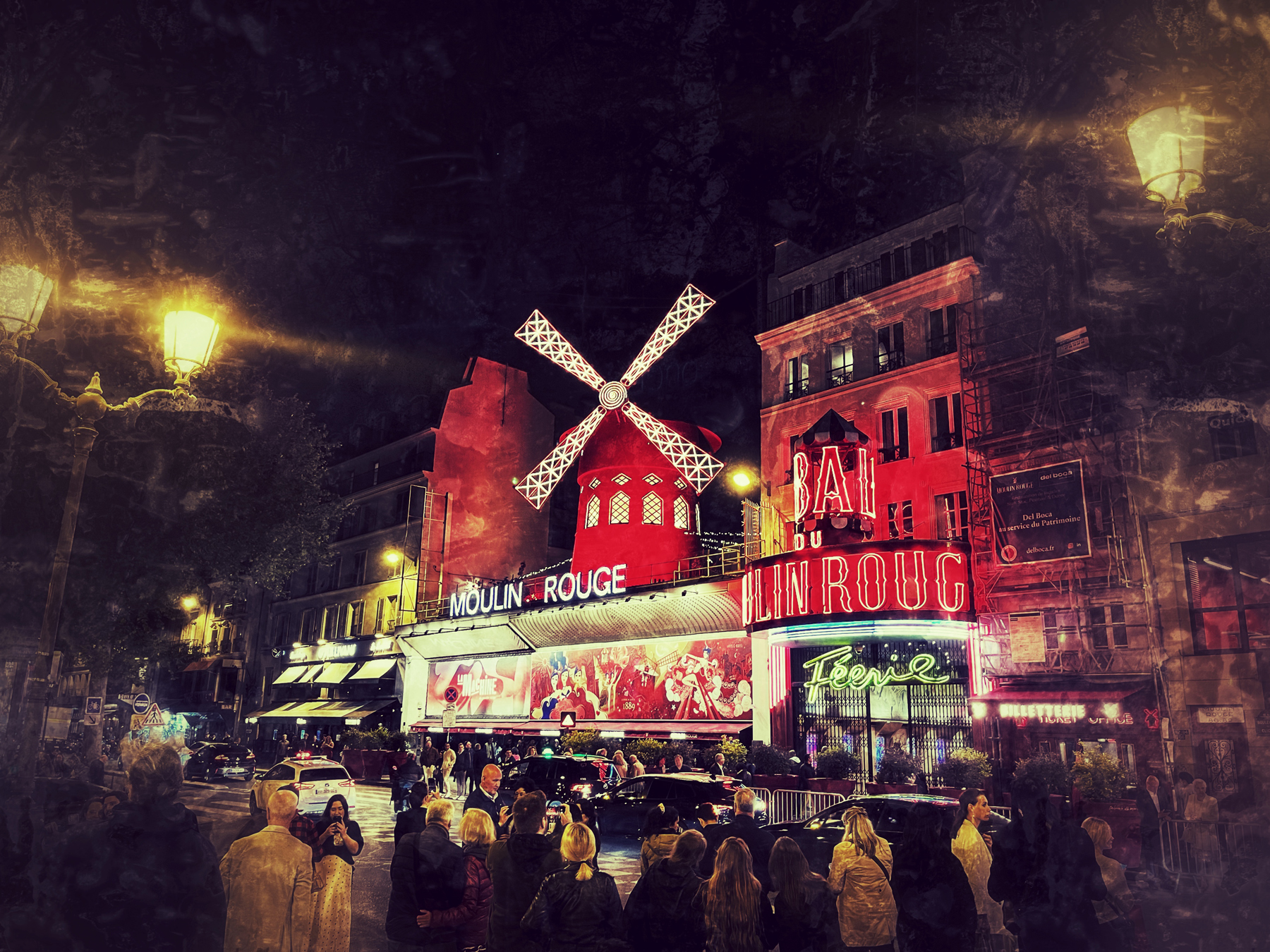

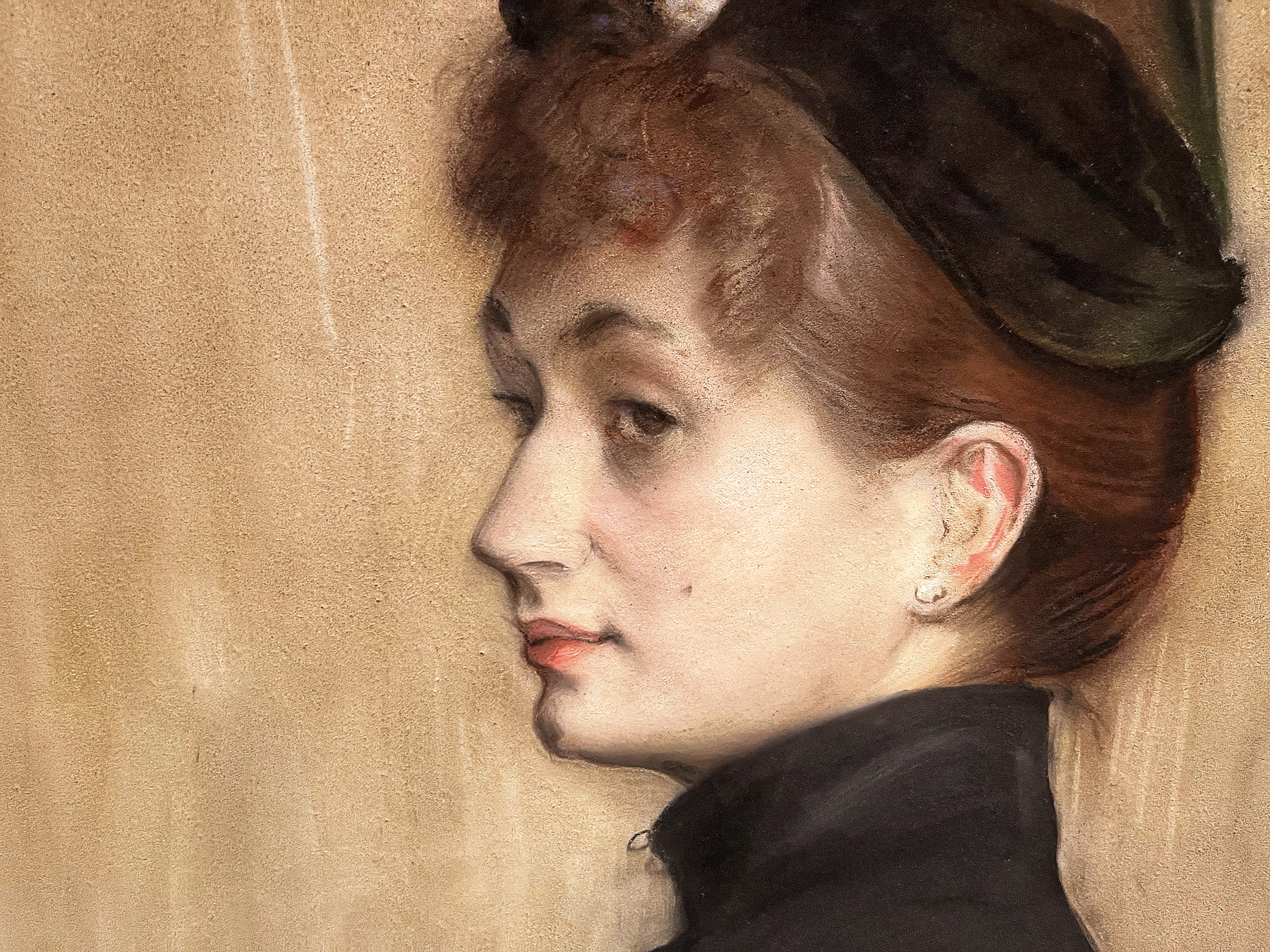
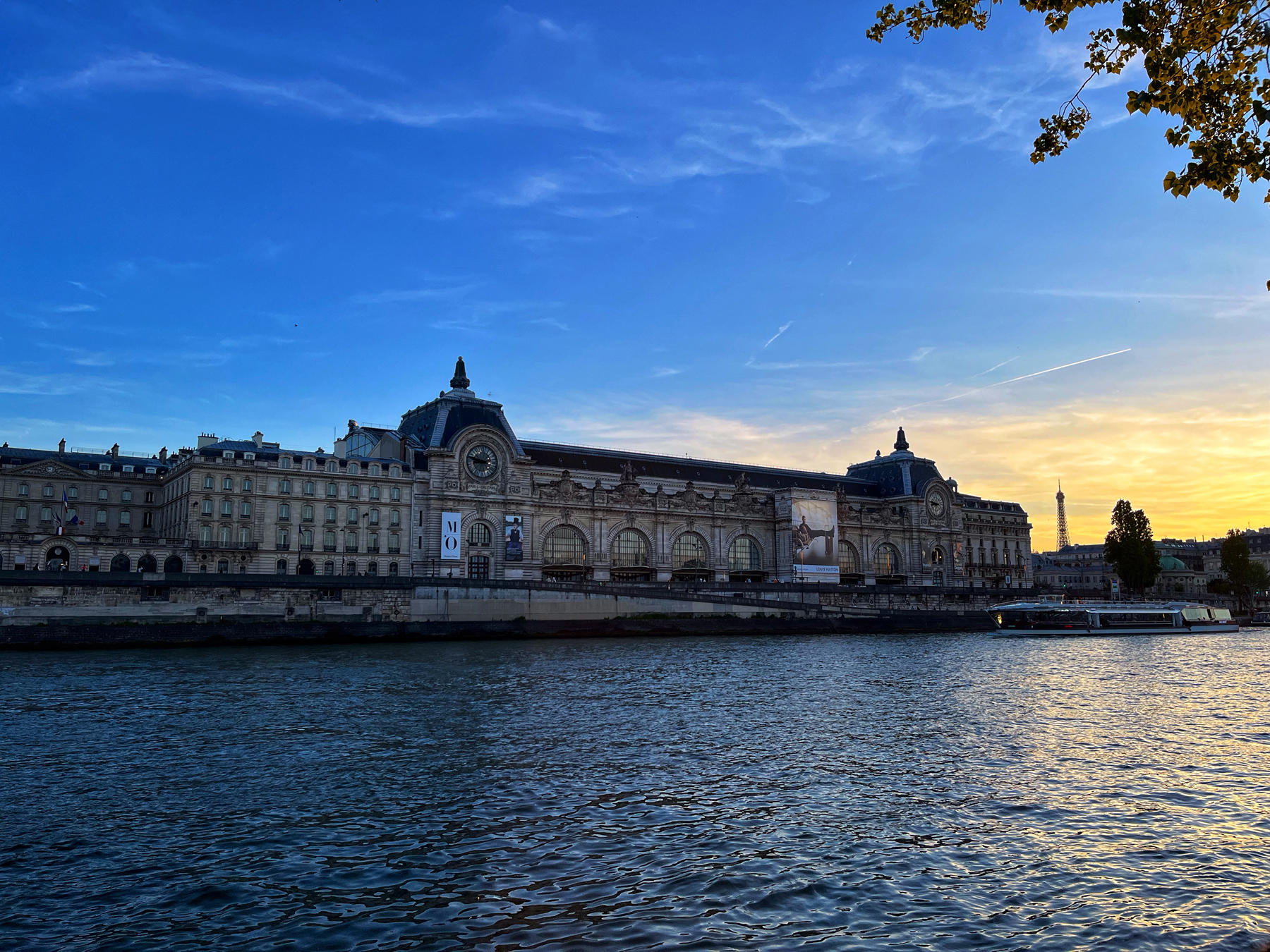

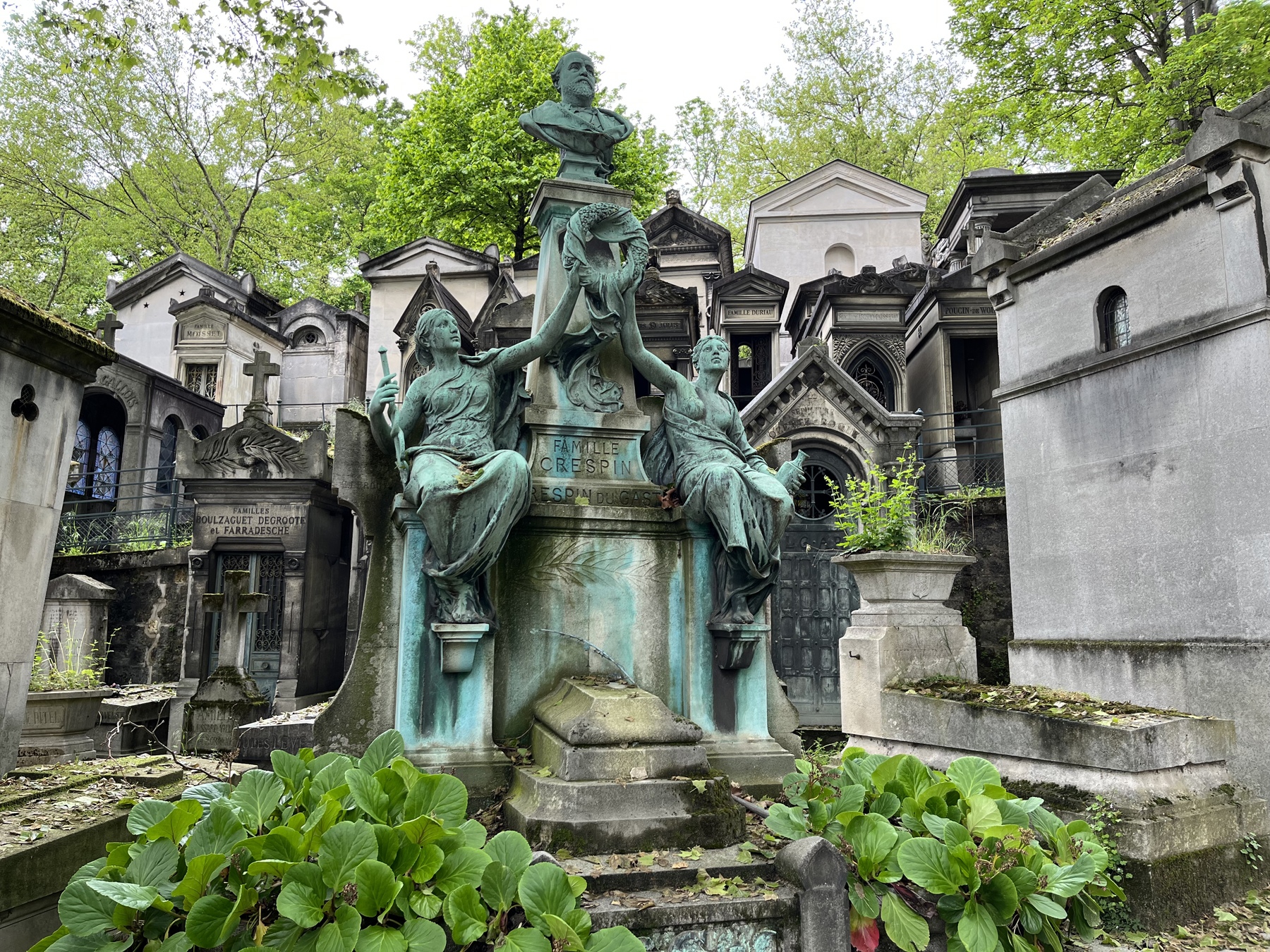
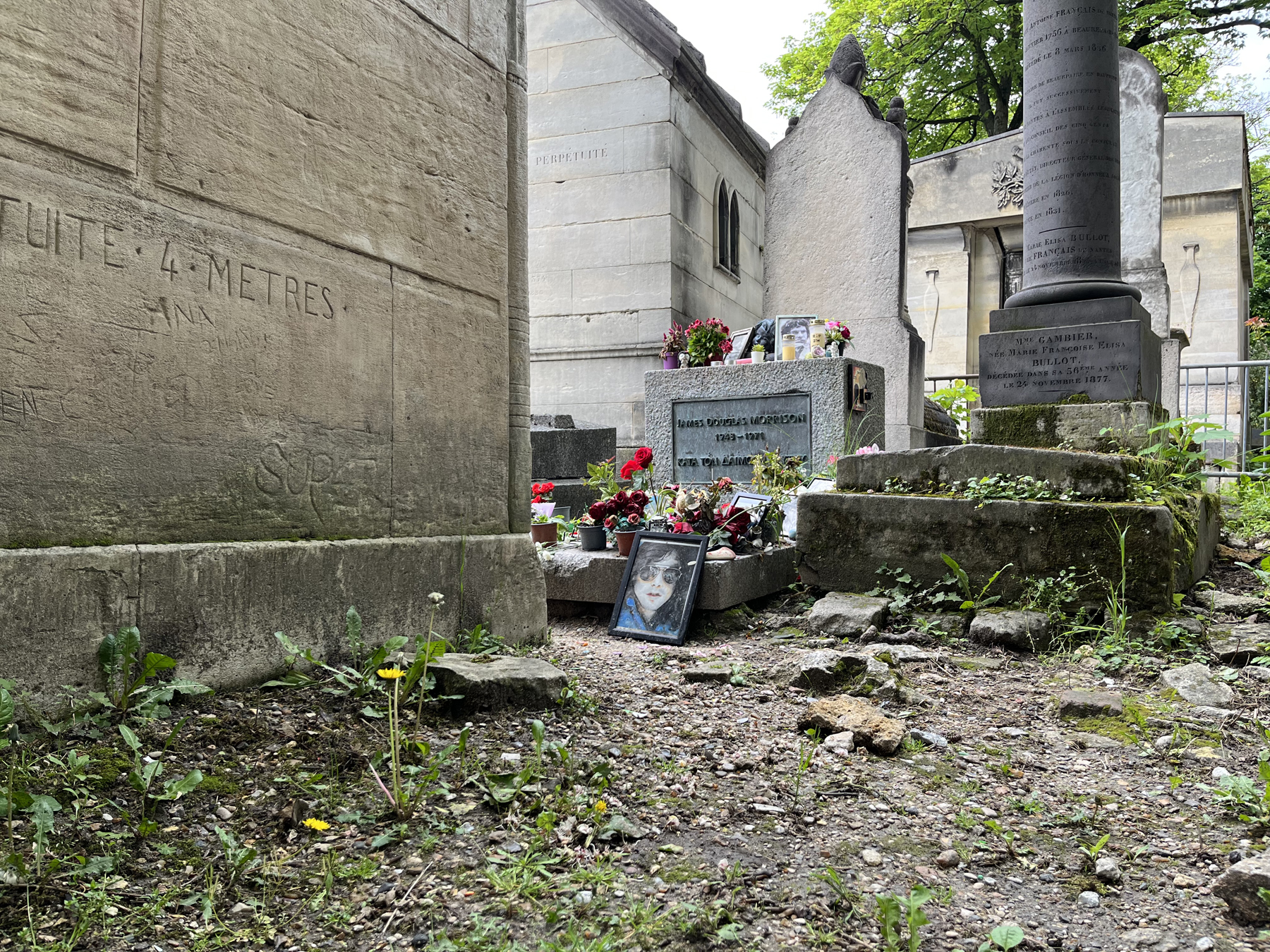
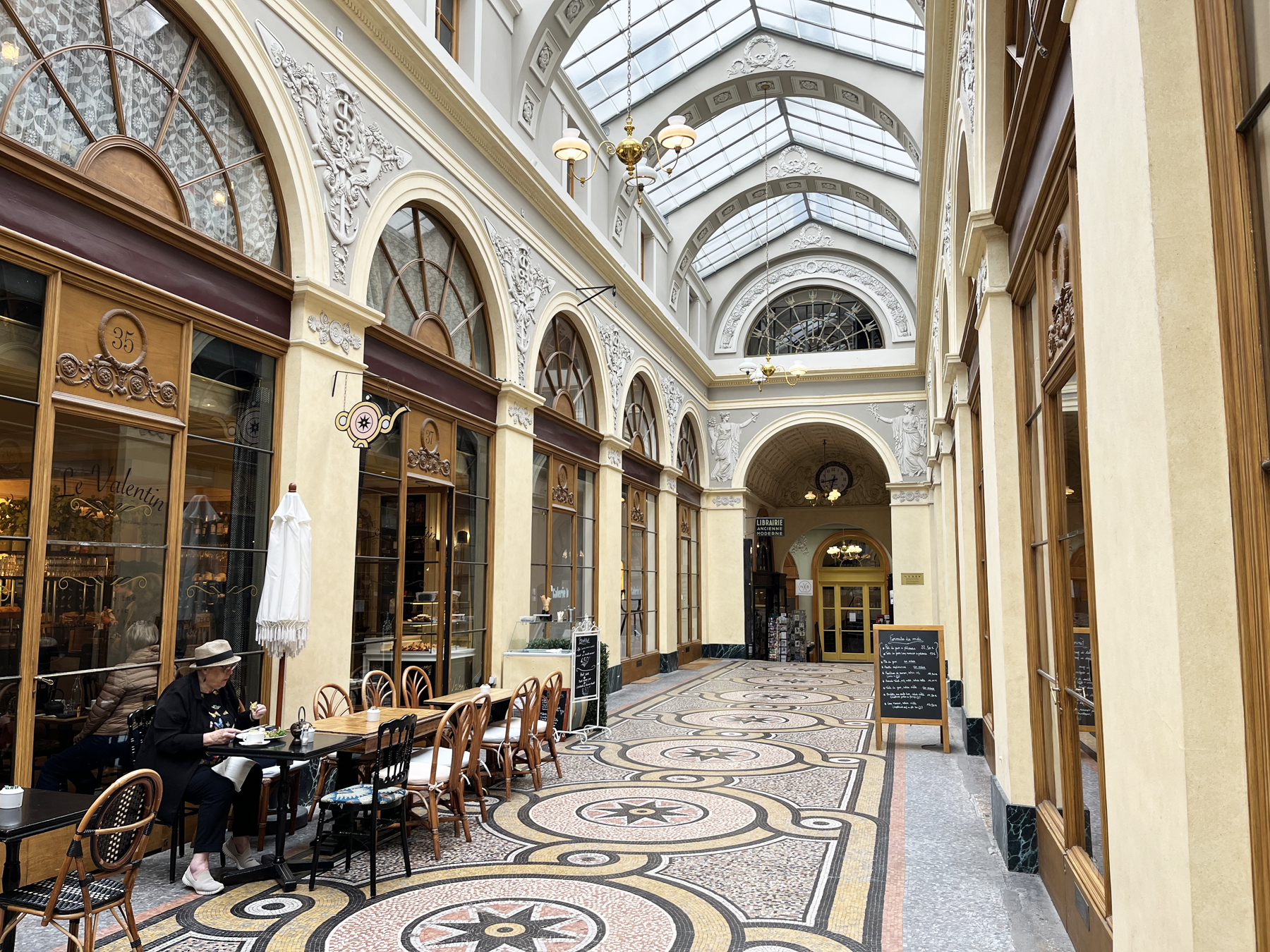
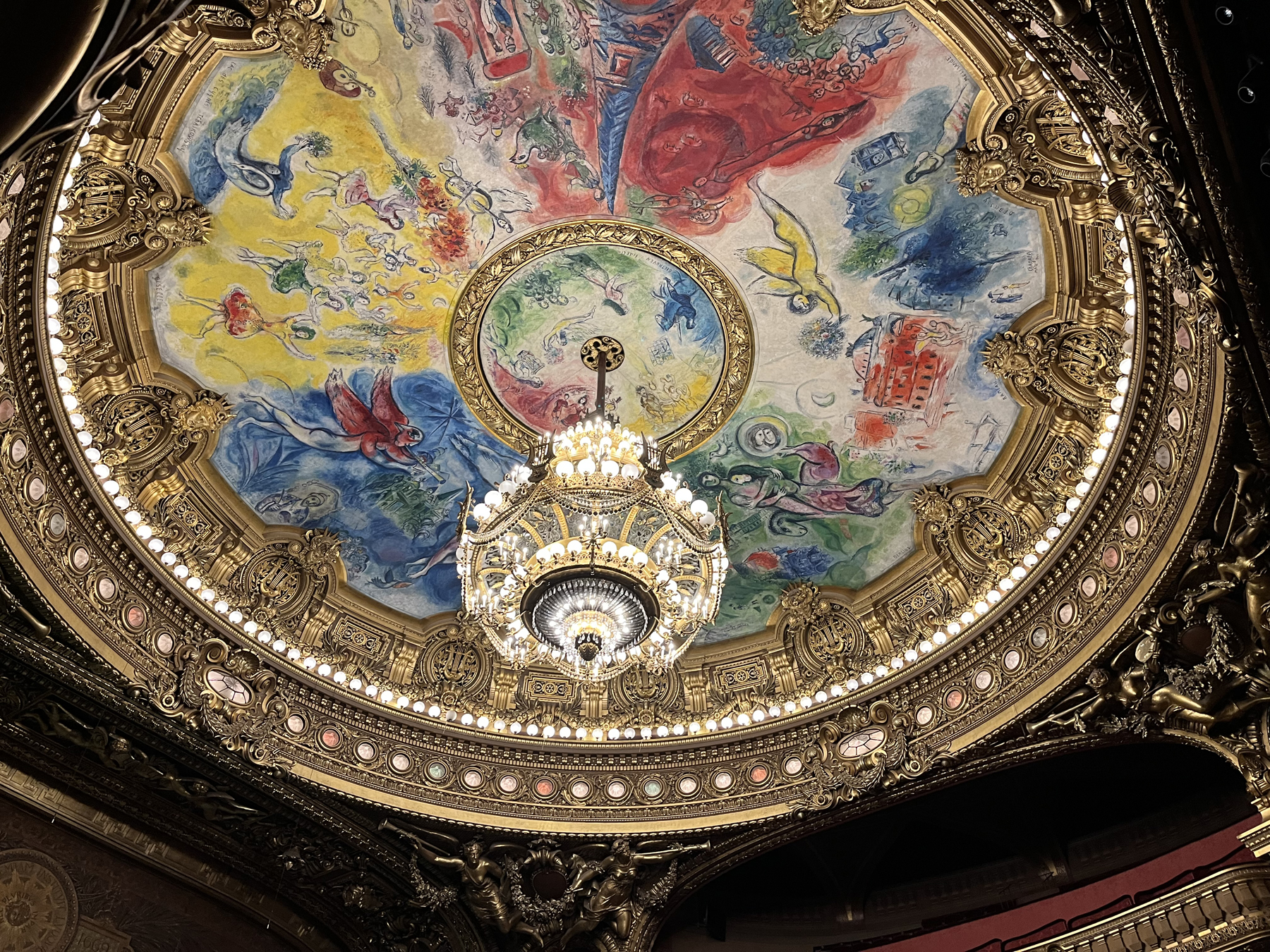
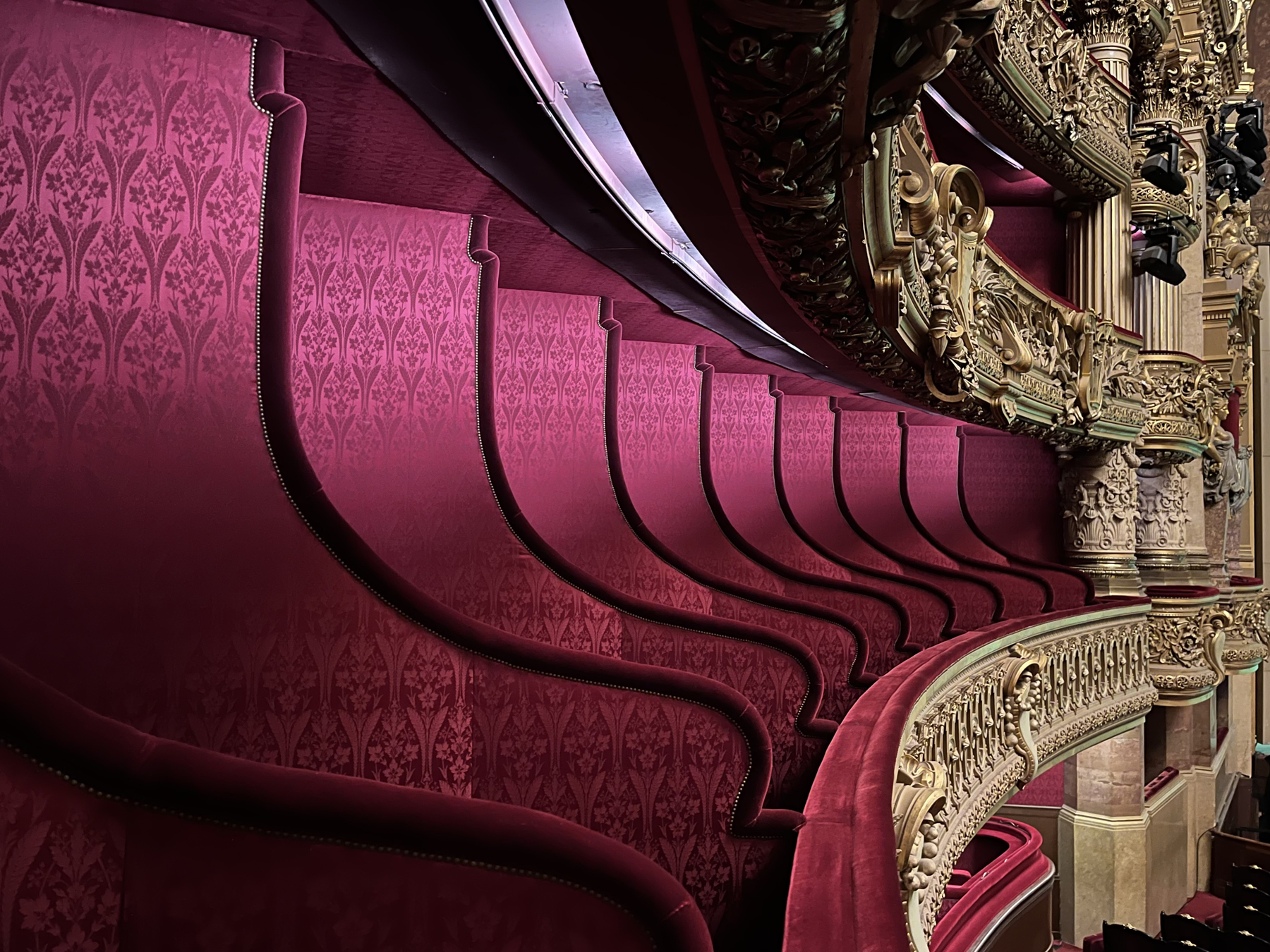
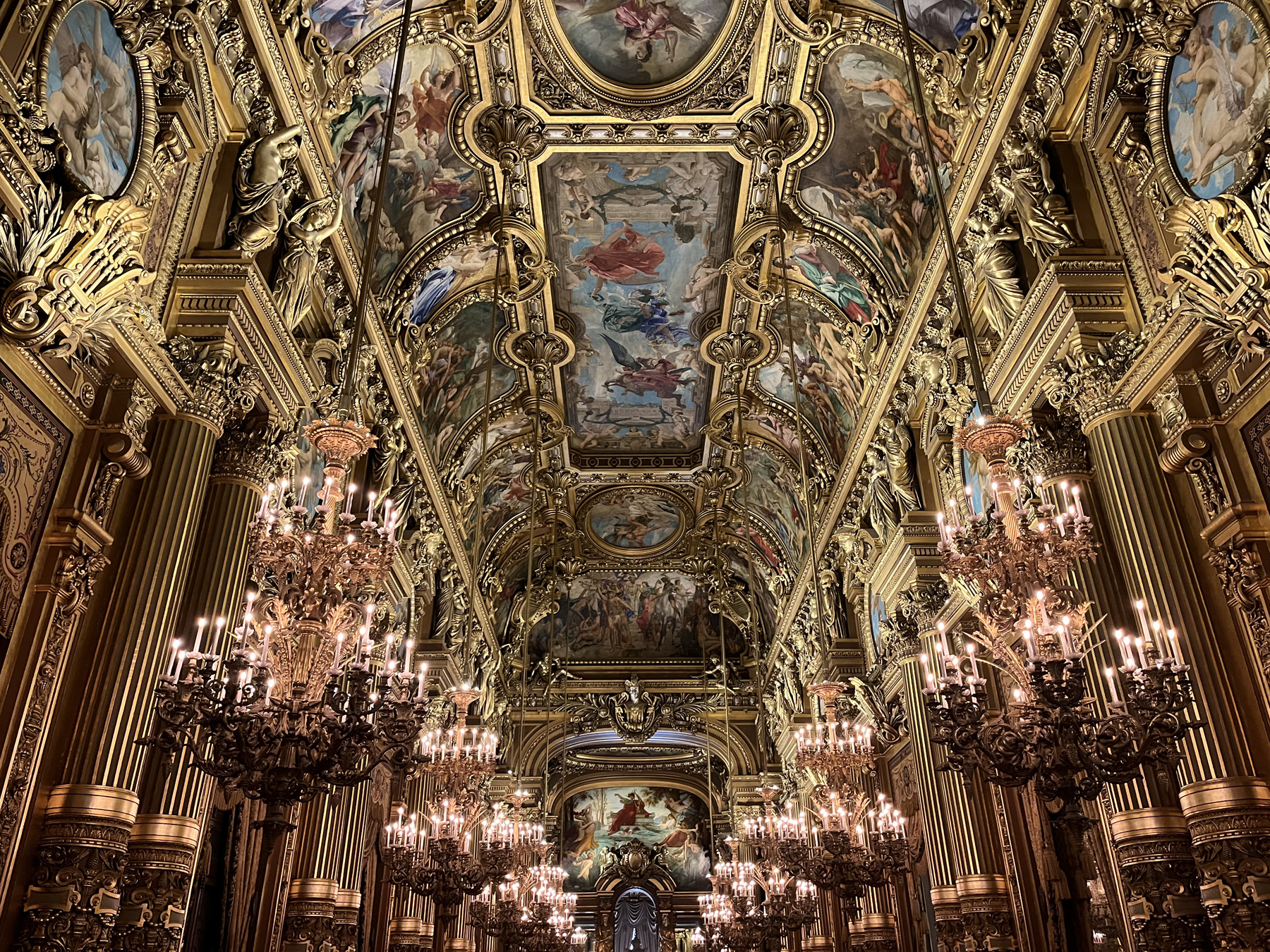
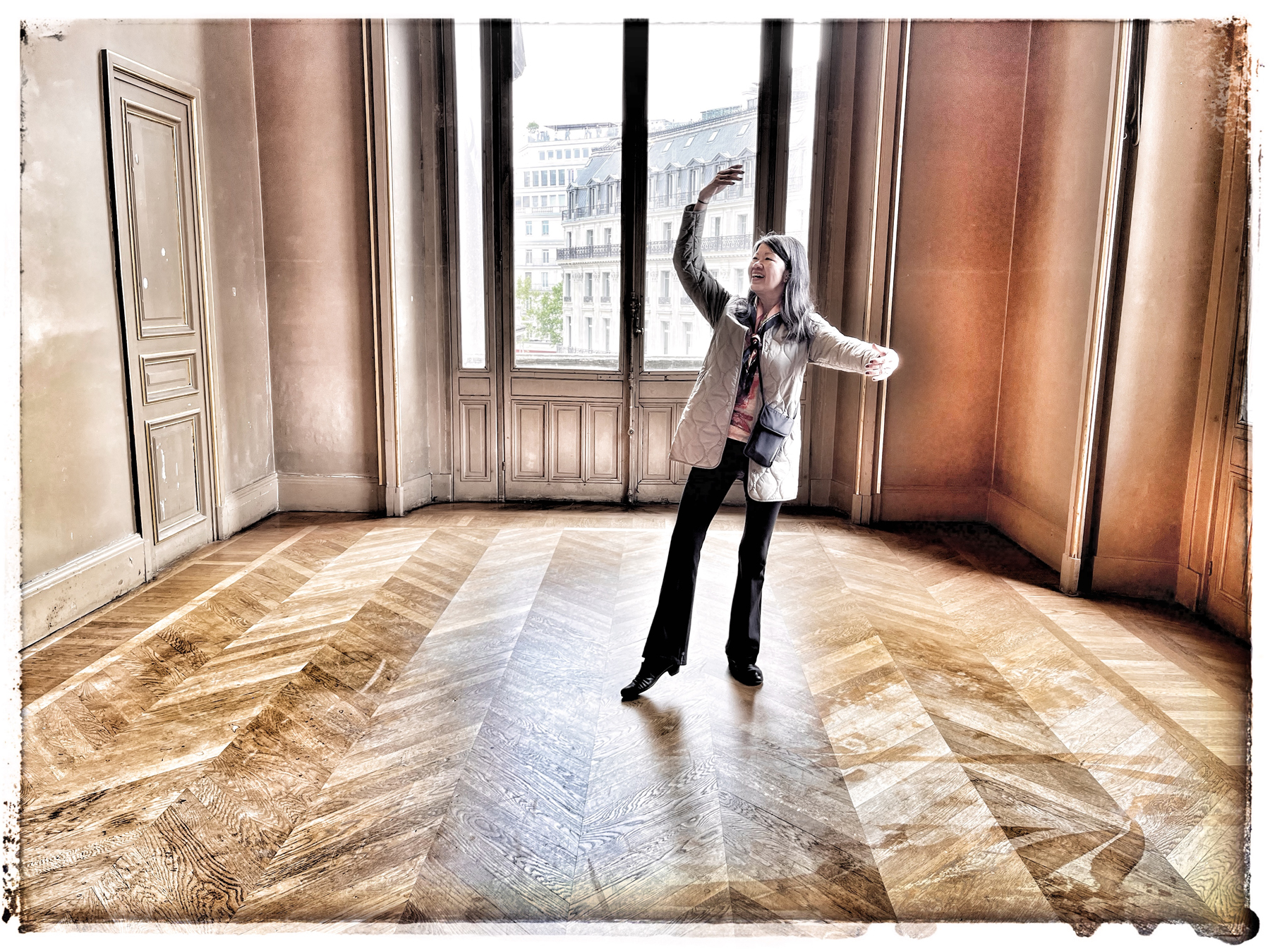
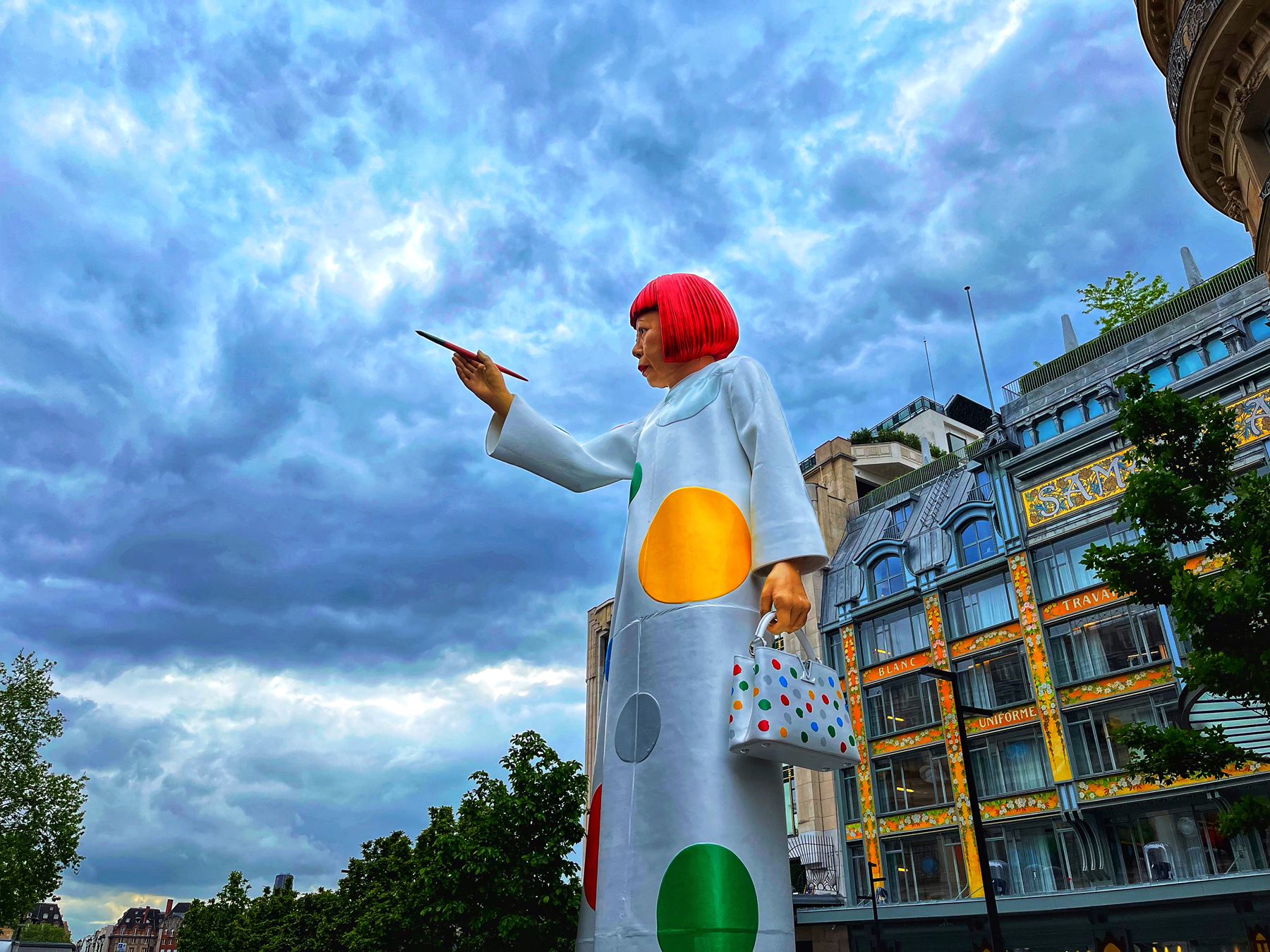
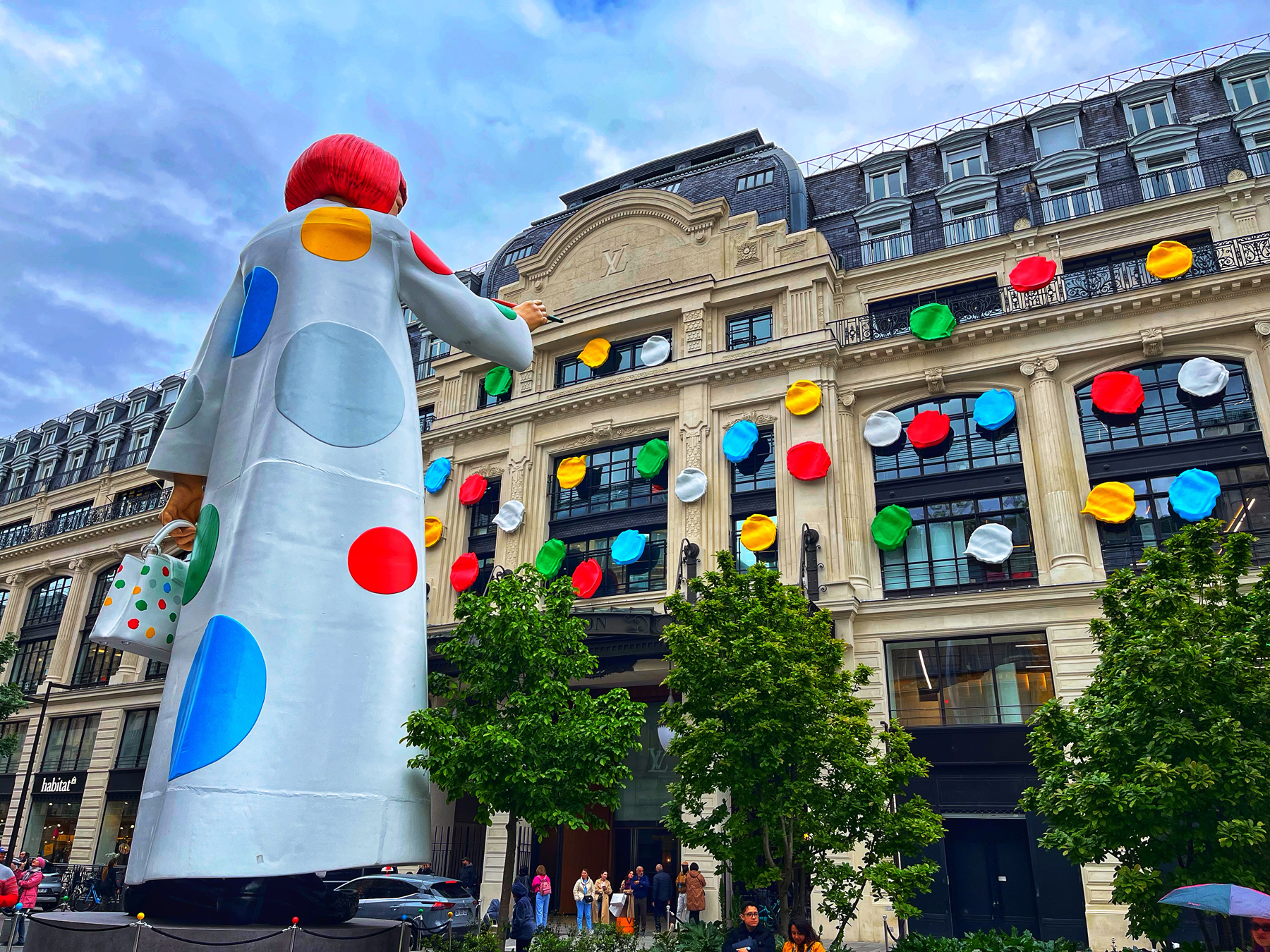
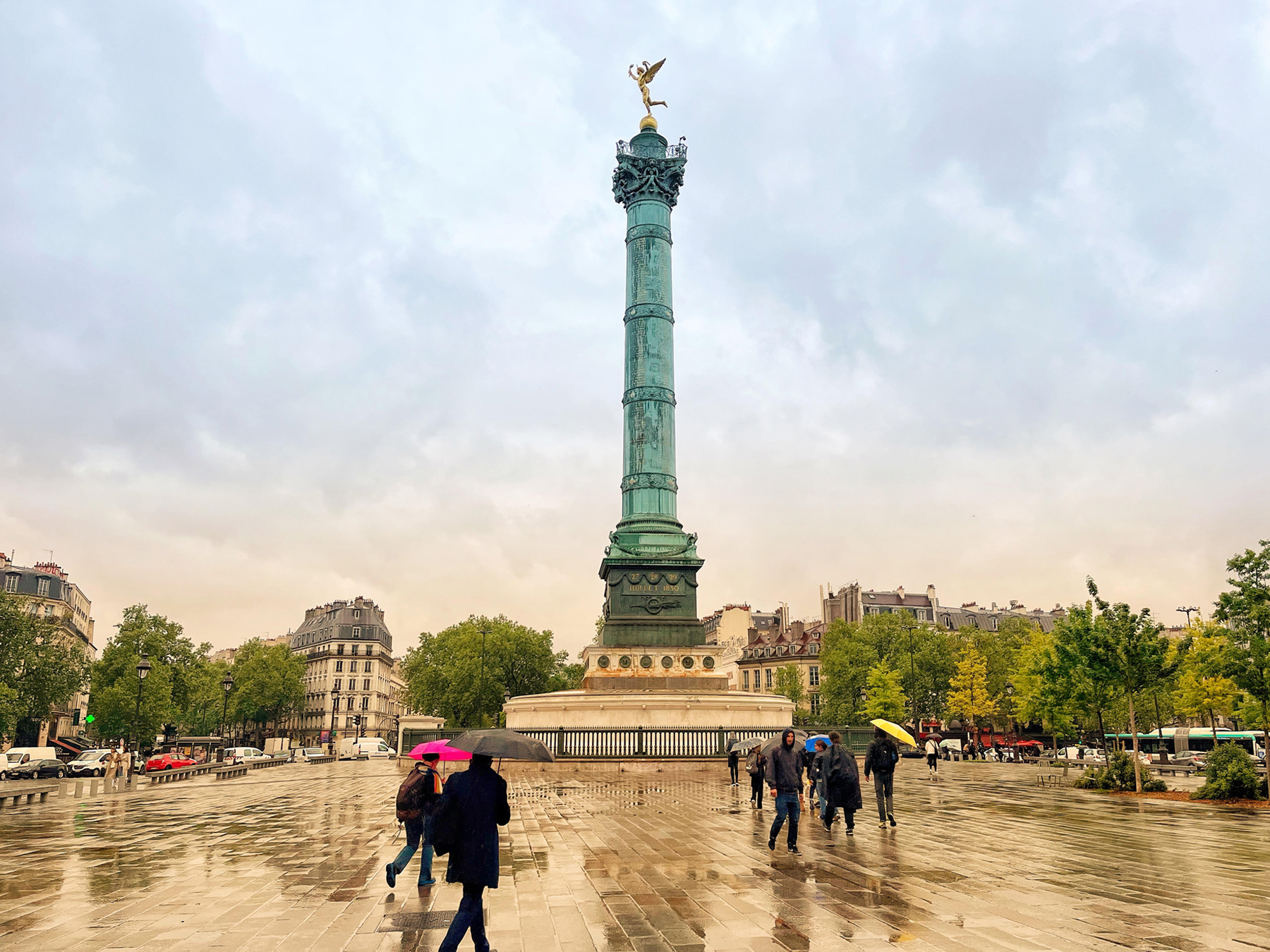
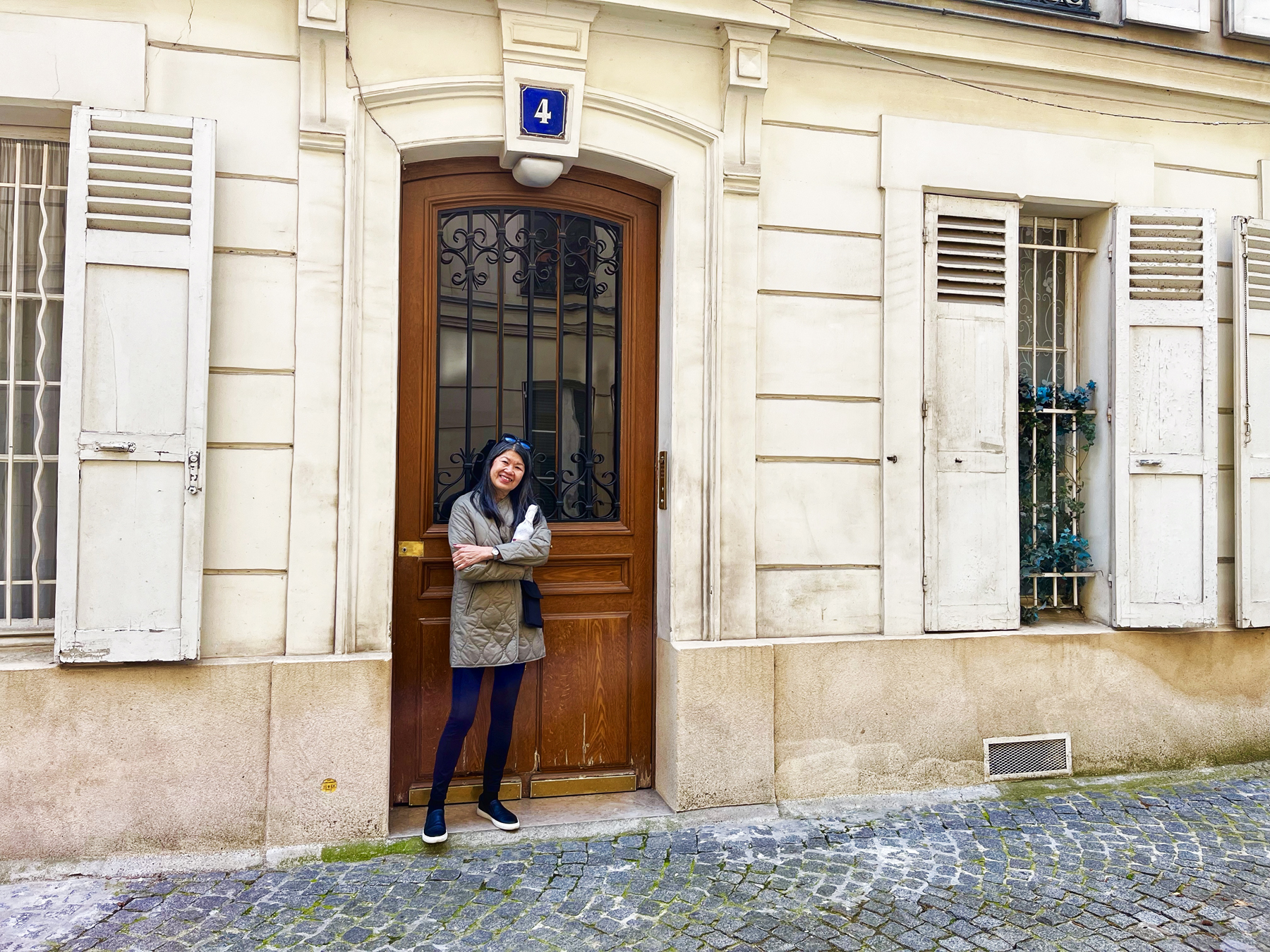
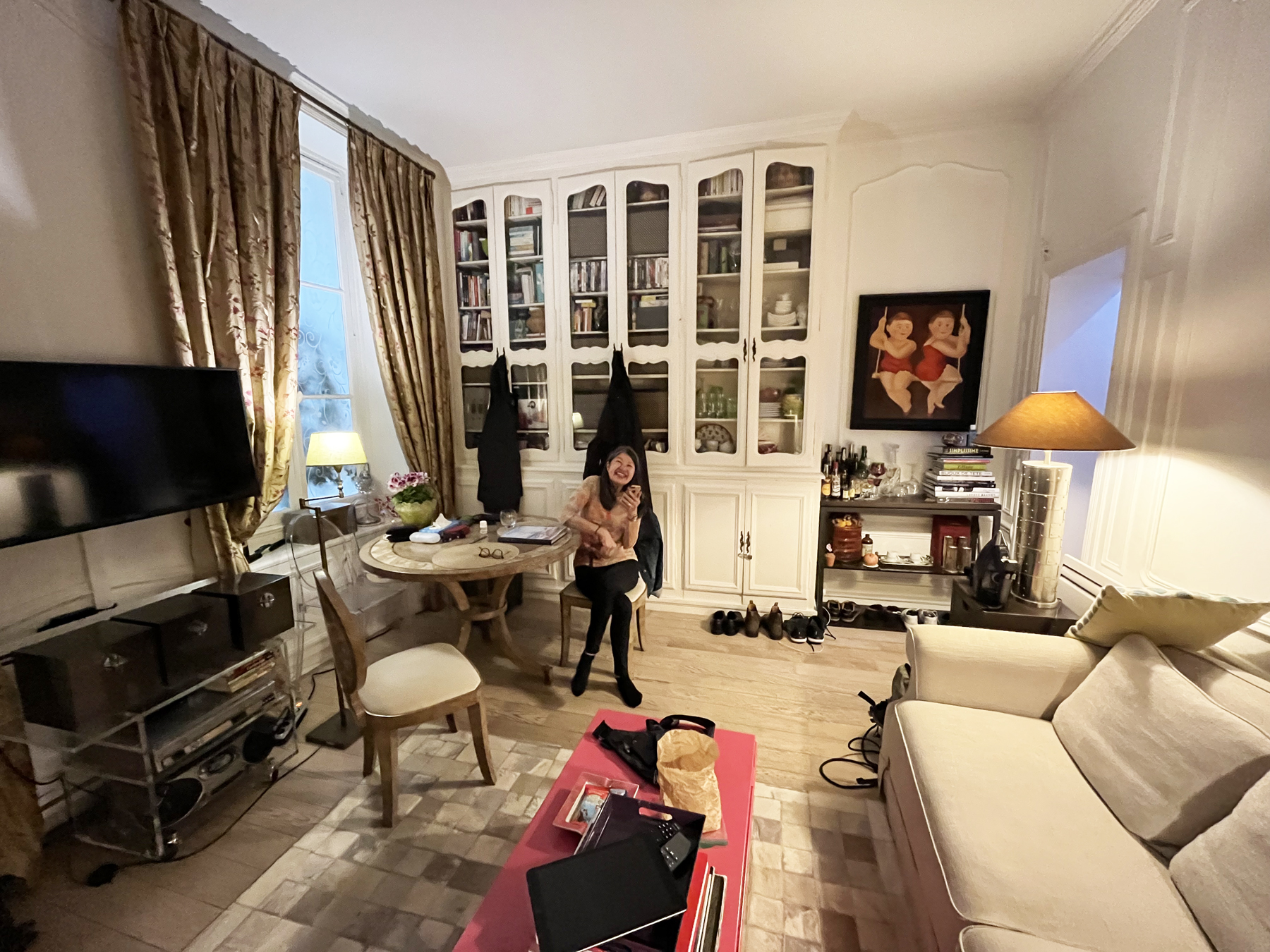
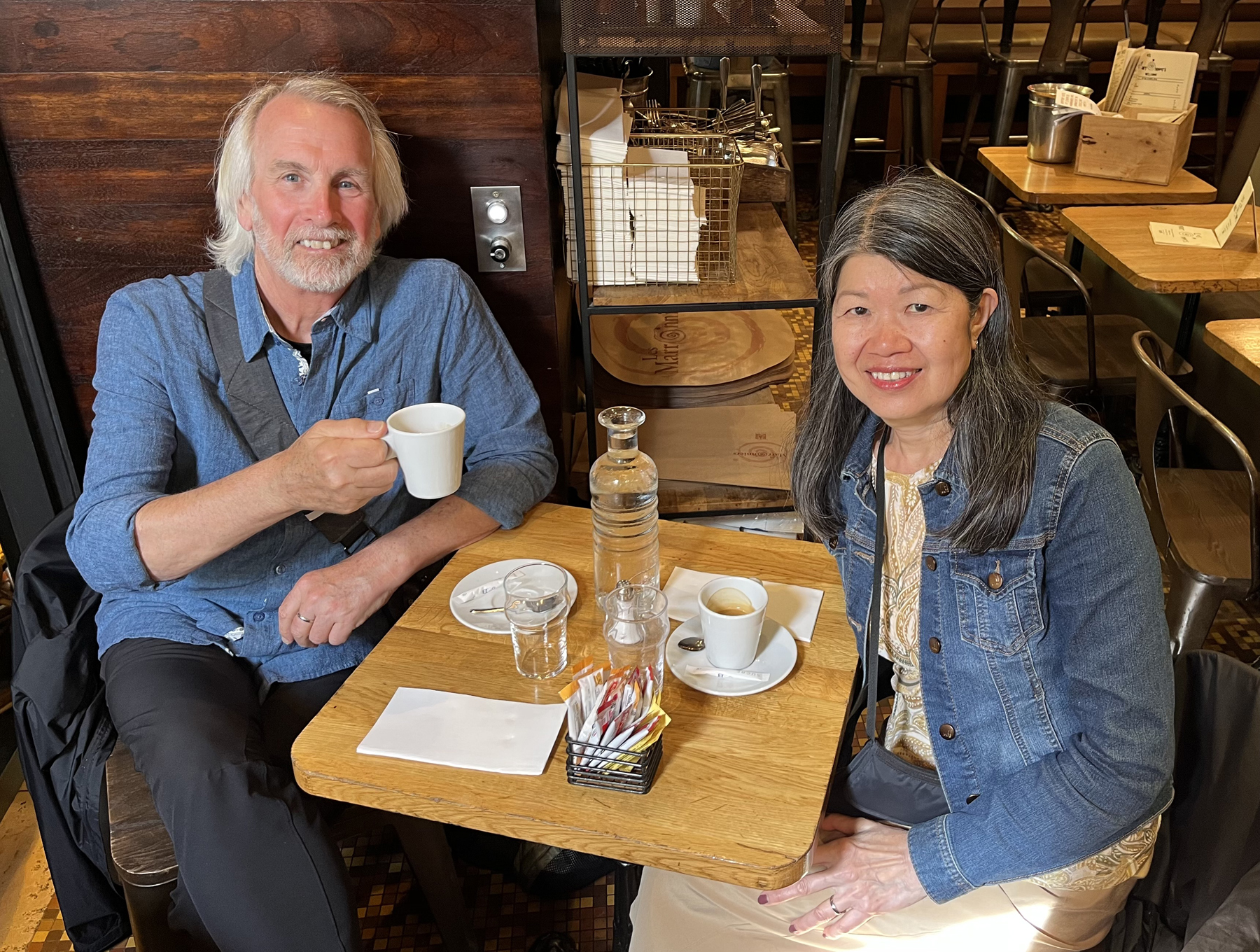
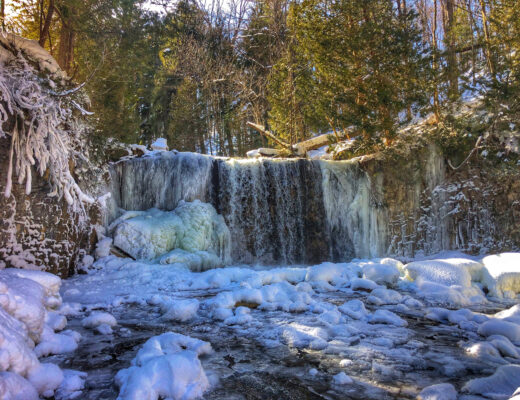
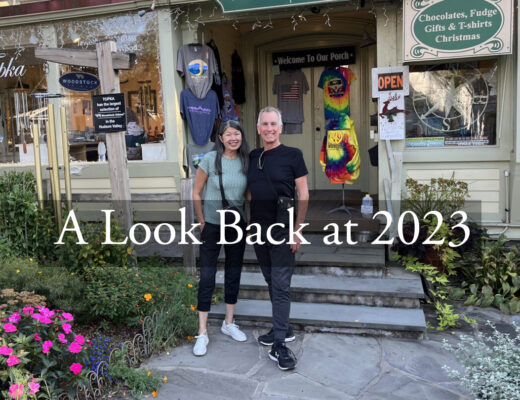


No Comments